-
Echoes, memories and footprints
I’m sorry, I don’t know if this is a blog post or a series of diary entries….. But, once upon a time in Tuscany……
Written on the 12th October….
It was good to walk from Lucca to Altopascio. The last time, as well as taking a different route, we spent the night in the pilgrim accommodation, which we ended up not being able to book this time.
Last time we got there on a Saturday just in time to get to the public library before it shut. Why? That was where we could get the key to out place for the evening.
As we didn’t get to stay in the pilgrim place, we rented a room nearby and went to the restaurant we visited the first time, which was just as good as before (despite the fact that Alison’s preferred dish which included Lambs liver, was not available as it is a winter dish and we are not yet in winter…).
The special thing about the route out of Lucca is that it is not predominantly rural. So, you get the chance to see several different aspects of how the locals live their lives. If you have been an attentive pilgrim since the Great St Bernard Pass, you will have been doing just that each day, but this day is very much one for people and life style watching.
Rather than countryside, you walk along local suburban and small town/village streets. You hear their radios and watch them do domestic things; hanging out the washing, cutting the grass, attending gardens and allotments and bringing back produce, chatting and shopping, chewing the fat at the local cafes, parks and shops, picking up children/grandchildren and so on. As well as seeing their homes and all their public spaces, where the take kids and dogs for walks and a load more besides. We also went through some small industrial zones where people are doing things, making things, selling and buying, transporting and so on. Not to mention going past schools, medical centres, hospitals and public services…
And some pilgrims want to bypass this because it is boring, or, rather, not rural enough or not pretty enough. So, when you go for a touristic walk, for a trek or once in a lifetime tour of another country and the theme is traveling through the countryside, it is perfectly understandable that you might interpret this sort of walking as unattractive, but I would plead that guide book writers steer them towards seeing it in a really positive way rather than just advising them which bus to take to avoid the boring bits. I can also understand the commercial view that might be taken by guide book publishers but feel they need to allow their guides the flexibility to explain to people why they might choose not to skip the “boring bits”.
I also feel that you, as a pilgrim, need to be present in such places. This is not a “you should walk every centimetre or you are not an “authentic pilgrim” but rather, you are a pilgrim and being seen walking the route is as valuable to those you walk past as it is to you and this probably applies more in the places where fewer people choose to walk….
So, our walk was really rich in people and experiences and we said a lot of hellos and answered a number of questions, too. Our stops in bars were great with so many people to engage with and so much to see and share. It was an al round good day (and there were some pretty bits, too.
It is Thursday, the 13th of October and we have just walked from Altopascio to San Miniato, which is a venerable hill top town with a cathedral perched on a piazza that looks out across the landscape far below and a series of really interesting buildings relating to its religious past. Last time we were here we stayed in the pilgrim accommodation and were advised to go to a certain pizzeria where they did a very good, and cheap pilgrim’s menu. It was a cold, damp and dark Sunday evening and we set off, like some fellow pilgrims to find the place. We, like all of the other pilgrims arrived and were promptly sent away again as the restaurant was fully booked for a special party. Like the others we headed back along the street searching for another place. Each place was now full (the last tables being taken up by earlier pilgrims and tourists.
Our last chance was to follow a couple who had been ahead of us and had been turned away from the restaurant we were approaching. They had been directed to somewhere else, so we hoped this place would be OK for us, too.
We ended climbing the stairs to the piazza where the Cathedral is and up to the restaurant of the posh hotel facing the church. The couple got a table, then so did we. We were the last un-booked ones let in. the place was buzzing. Sunday night and the restaurant was mainly filled with family groups: parents and grand parents presiding over tables with bored teenagers lounging in their seats, excited children trying to join in conversations or concentrating on scribbling on the table clothes as toddlers kept on running around and general joining in the chaos.
For us, the service was not good. Our table was obviously in the wrong place where waiters and waitresses didn’t go or look at (a function of it being the table the last people in get). The food was excellent but I had asked for a starter and main course and Alison had wanted a main and a dessert. They brought her main with my starter and disappeared, then they took a very long time to deliver my main. Despite complaining, and finally getting apologies, etc, it was a less than satisfactory experience.
So, we couldn’t get into the pilgrim place here and decided to re-calibrate things by booking into the hotel and eating there – ensuring both good food and that we got the proper service this time.
The official distance was 29 kms, so we knew it would be a long (but quite lovely) day so we were looking forward to a little pampering. The walk turned out to be well over 31 kms and, as we climbed up the steep route to the town we could see the cathedral up at the next level and decided to climb a steep set of stairs and go straight to our night stop rather than winding up the streets to the top, Elated, we arrived at the dizzy heights of the Piazza and admired the Cathedral, turned and admired the hotel then headed purposefully to its reception.
Then Alison looked at the name of the hotel and said, “But that’s not the name of the hotel we’ve booked!”
Gutted, we looked at the booking and put the hotel in to Google which proceeded to tell us it was still more than fifteen minutes’ walk away! That’s what you get when you book places when you are tired!
We stomped off with google dictating our route and Alison really devastated by the mistake. It had been the only hotel available and as it was Hotel San Miniato and was posh, it was automatically the one we were seeking (we had thought). We had fears that the route to the hotel would take us back down the hill to San Miniato Basso and I was saying that we didn’t have to walk all the way up the next day. I would get the hotel to book us a taxi for the morning…. Then we almost tripped over the hotel – it was nothing like as far away as Google had led us to believe. It was just at the other end of the hill-top town, which is not a very large place.
The hotel turned out to be lovely, quiet and with beautiful views, so we were fine, really. It was just a painful mistake – when you spend the day walking and think you know what you are heading to and it turns out not to be that place, at all, it plays on your tired spirits and grinds you down.
But, this evening we found a very nice restaurant near by and agreed we would have to come back again some time in the future to be a guest at the other hotel. Then we would enjoy a much better restaurant experience there, and be settled at the correct hotel.
Today is Friday 14th of October and we have now reached Gambasse Therme after a walk of 25.5 kms (officially it is 24kms – go figure). Another small town perched on a high hill and we are in another room with a view.
Today we entered that part of the Tuscan countryside that just seems to roll on and on (yes, so does the path) with fabulous views around you and new ones at every new hill top. Last time we walked here the fields had all been ploughed and the heavy soil had dried from a deep brown to an almost silvery grey colour. It was like walking in a strange, alien landscape at times and I wrote, at the time, that we were looking over vistas that resembled a vast textured grey duvet that had been dented by child dropping toy farms and pretty houses onto it. The land was almost luxuriant in its folds and curves with brightly coloured villas perched on ridges and long lines of tall thin pine trees lining the roads to their gates and farms nestled in the depths below.
This time, there were quite a few fields that were still green, mainly with grass, and a number of the other fields had been recently ploughed so there was a huge patchwork of colours randomly distributed across the same landscape as before. Less stark but just as beautiful.
There were no places to stop and drop into a café along this route but there were some spots where a bench or two had been placed and where there might be a tap to refresh your water supply
We shared the path with a small number of pilgrims. One of our male French friends was mostly behind us and we walked on and off with an Italian mother and daughter who were walking with their dog, a Dutch chap and (possibly) a Scot stopped and said hello to us as we sat having lunch but they didn’t stay long enough to glean any information from them. Two young Americans told us about Charles, the Scot yesterday so the non-Dutch person might be him. When our paths cross again, we will find out.
Other pilgrims we expected to find today were another French couple from Nantes and Kelvin, our Canadian pilgrim who turned out to be a retired Mounty (Royal Mounted Canadian Policeman, in other words) who is quite a character. We walked to Lucca a few days ago and we know he is somewhere on the route but he does have a tendency to drop off the route to explore other places that take his interest, so who knows if our paths will cross again.
The thoughts of paths crossing led us to reflect on the various experiences we have had this time through France, Switzerland and Italy. In France there were a number of places we walked through where the forest paths had threads of spider webs across the way and were able to tell if anyone had been walking in front of us if these threads kept catching on our hair and faces.
We often see footprints in the soil of our paths and sometimes recognise the prints of fellow pilgrims (we’ve been doing this for years) and one French pilgrim we shared much of the Jura and Switzerland with (Robert from Northern France) and lost early in Northern Italy was our friend with the chariot. He attached a one wheeled trailer to his hip strap and pulled his pack behind him most of the way. On really bad bits of path he would hoist the frame onto his shoulders but mainly it went behind him and we could see the thin track of his wheel whenever he was ahead of us.
People with dogs are harder to spot as so many paths have dog walkers on them and more obscure paths often have hunters with dogs, but there were times when even these tracks were noticeable to us and these sorts of signs always helped us be aware of our own situation as we went along.
Soon all of those tracks will start to fade away…The next few days will sadly be our last on the Way.
We are, sort of, squeezing out the last few days by taking two short days before walking into Sienna. So we will stay tomorrow in San Gimignano, which is a beautiful small town perched on a high hill (what a surprise) and we might have time to explore some of the amazing towers there. The merchants there (and in a few other places) built look-out towers and ended up competing on who had the tallest and best tower. We passed through last time and only stopped briefly, so tomorrow is a new and better chance for us to explore.
The day after, we will walk to Colle Val d’Elsa and rest there for the night, we stopped there for a spot of lunch while sitting on a bench in the shade, then headed off without any further ado. So, we have a new place to explore before our final short day which will take us to Monteriggioni, which is another really touristy place but really lovely. It is a village enclosed by a high crenelated wall so it looks like an amazing castle perched on the hill. Last time we stayed overnight in an old abbey building a few miles short of there (in Abbadia a Isola) and walked through it in the morning. As we climbed the hill towards Monterigggioni, I turned to look back and saw a great crenelated line of shadow projected onto the side of the hill below so I paused to take a picture. Pleased with my work I turned back and put the camera back in my pocket. As I did so a herd of red deer crossed the path right in front of us, some walking, some leaping as they went. The image is still burned in my memory – wonderful!
Then we head to Siena, a city we love There we will stop, visit St Catherine and take a deep breath and say a prayer or two.
From Siena, we plan to go to Florence and then to Milan and finally to Paris where we will catch our Eurostar train home.
We are still a bit in denial but will get over it. Our French friend said to us earlier this afternoon that we should not worry about the 90 day rule. “What can they do to you? Nothing!” And I said it was too late now to try that, but the truth is that we feel the people in the EU have had enough rubbish attitudes from the UK and what might be acceptable flippancy from a fellow European will be seen as just another bit of UK arrogance and the ton of bricks dangling above our heads will fall. And no news from Britain is likely to change that….
Having written this, I am thinking the one bar on the WIFI indicator will not be enough to send this so I may have to wait until tomorrow.
Footnote, As we were leaving the restaurant this evening we stopped to chat to a pilgrim we had not met before who had been eating in the restaurant with a Dutch pilgrim we had met. He told us he was from Slovakia and I asked where. From the capital, he said. Ah, Bratislava, I know that city, I said. We chatted more and it turns out the University there I helped set up in the late eighties (when at the OU) is still going well. Which was a great thing to learn 😊Another path crossed, another story added to.
So, now it is the 15th of October, it’s a Saturday night and we are in a room in San Gimignano, where the towers grew in great abundance. It is one of those places that are a miraculous survival from an earlier age bourn out of a devastating catastrophy. It was a really booming little city in the medieval period where the merchants, as I have said, competed with each other to build ever better, ever bigger look out towers and where the 14th Century Cathedral walls are covered with murals that are real masterpieces. But then the plague came and the population was utterly decimated and the city never recovered and, as their neighbours regrew, rebuilt, modernised and expanded this place just remained a quiet backwater that was enough of a place to remain intact, but nothing much get rebuilt or renewed.
And now it is a place to come to and step into a mini time warp…. With lots of nice shops, bars, restaurants and museums, of course.
We stayed outside the town last time and so never had a proper chance to wander around, so it was a real pleasure to have a relaxed walk around and a five Euro visit to one of the artistic treasures from the 14th century (the Cathedral).
We also bumped into our two Italian friends from Turin, who will go home (with their dog) tomorrow, and the four Spanish women we met yesterday, who have walked since Lucca with luggage transport support from a male friend, who are getting the train to Siena tomorrow then are heading home. We briefly said hello to our pilgrim friend from Les Mans this morning and hoped to catch him here but we have failed to spot each other today so will bump into him on the road tomorrow. Other pilgrims have been figures behind or before us in the landscape and we have enjoyed that at gives us a good feeling that we are not the only people on the road anymore.
Today’s path has been very beautiful with more rolling hills, some steep climbs to reveal vast vistas across the bigger valleys then more intimate but just as spectacular views across the more enclosed valleys nestling in the tangled series of hills and ridges along the path. We could see our destination from the very start but wound around the landscape in a lazy set of swoops and curves before we climbed to our destination.
Along the way were the classic Tuscan villas perched on hills with avenues of tall thin trees parading along each sloping ridge to the their gates and small towns perched on hills, basking in the Autumn sunlight above the patchwork of different greens from Olive groves, vineyards and grass covered or ploughed fields. We have also watched people begin the annual process of bringing in the olive harvest. I love this process. For some, it is a matter of combing the trees by hand with specially designed rakes (often into baskets), but mainly it is done by spreading our brightly covered plastic nets below the trees and then using mechanical devices to shake the branches and cause the olives to fall. We saw one group learning to do this who were massacring a tree with the shaker. It is a long pole with two multi-pronged forks that vibrated and the guy working it was ripping the twigs off the tree rather than shaking the olives off. This morning we saw a small group of people in a village laying out the nests. They were all quite old and they had a young man standing with the shaker, waiting to start. Then one of the older men told him to start on the first tree and he emphasised that he should go gently… very gently,,, so the young man did as requested – with very different results.
Also on the way here we met a man who was using a hand rake designed to harvest olives. We had met him before on our last walk – he is one of the Francigena’s characters. His house is on the Way and he takes in guests in his lovely house. He told us he knew that we were not Italians by our clothes and then, when we said we came from Britain, he told us that the town he comes from, just down the road was where an English king came eight hundred years ago to borrow money to fund a war. His entourage went away again with the money and with Europe’s first literary masterpiece. They later produced a version of it but it didn’t match the original which was, of course, The Decameron by Giovanni Boccaccio. He asked us if we knew what he was doing. We said we did and he complained that harvesting olives was very hard work and he hoped that soon the English would start growing olives and he could buy them from us rather than growing them himself. Then wished us a good walk and turned away.
I think the WIFI here is actually OK. For the last few days we have been in places where the walls are so thick that it was OK to get enough WIFI to get your phone connected to the basics but not much more and standing in a cold stairwell proved not a good enough experience to warrant the effort of trying. Tonight, the once quiet back-water street has suddenly been transformed into a bustling little hub of young, noisy young people sitting in the two bars/restaurants – 10 pm seemed to be their starting point, so I will try to select a few photos and see if I can send this off rather than end up writing another addition to this now long blog. And here is a random selection of images from the last few days…













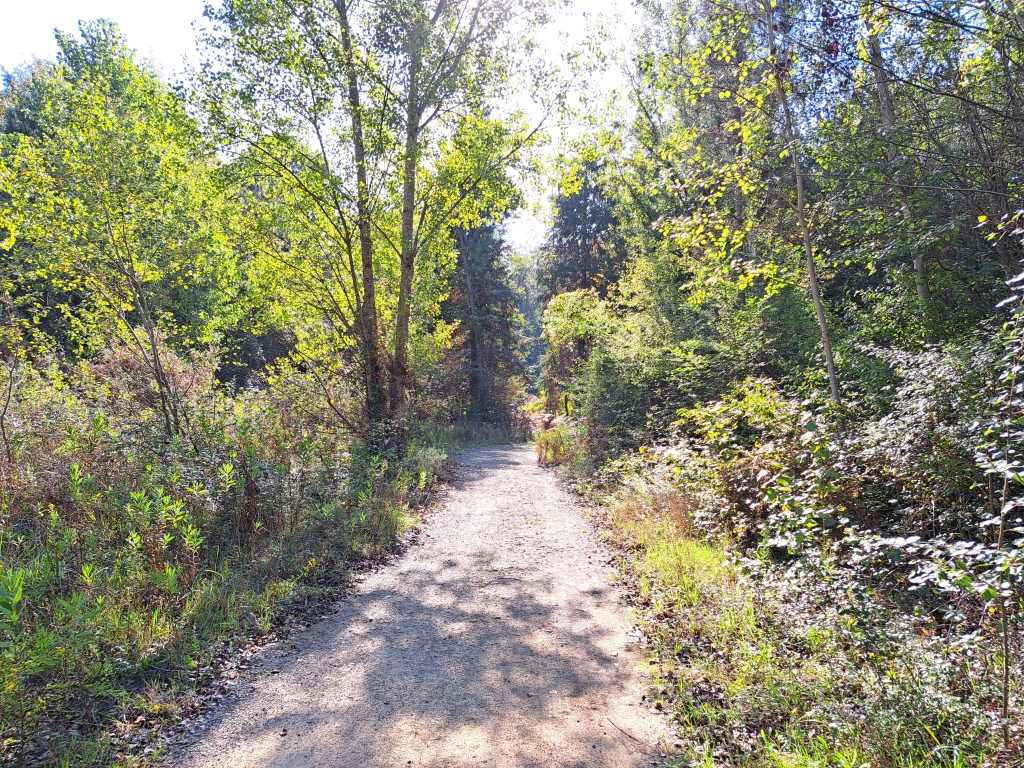

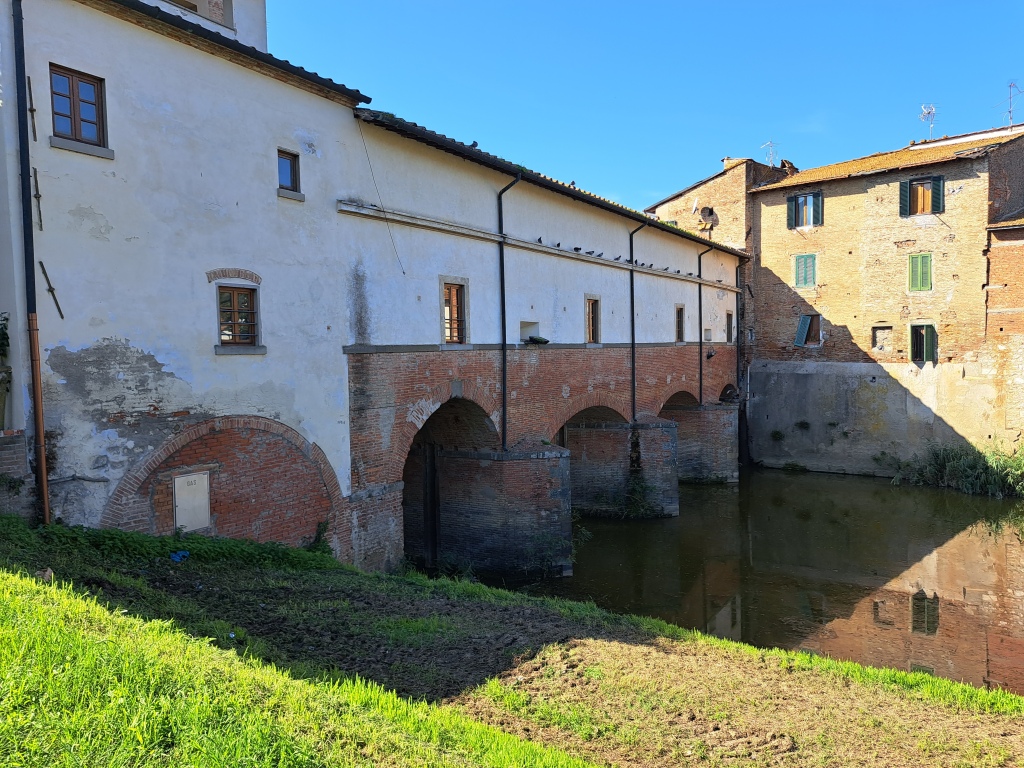


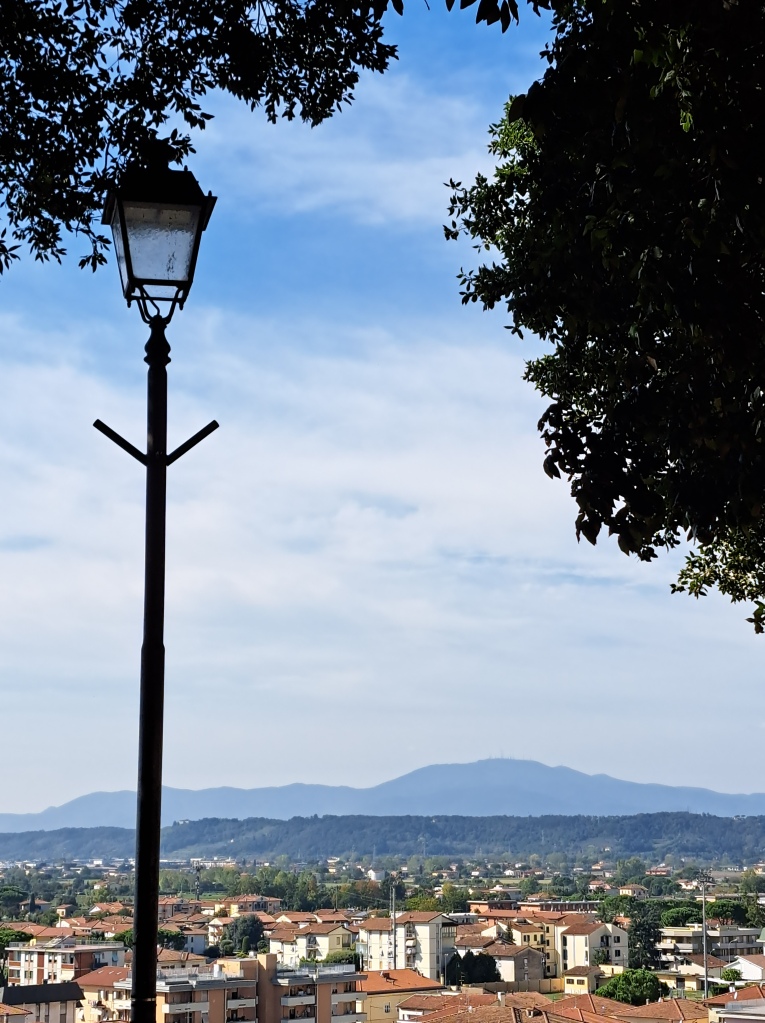


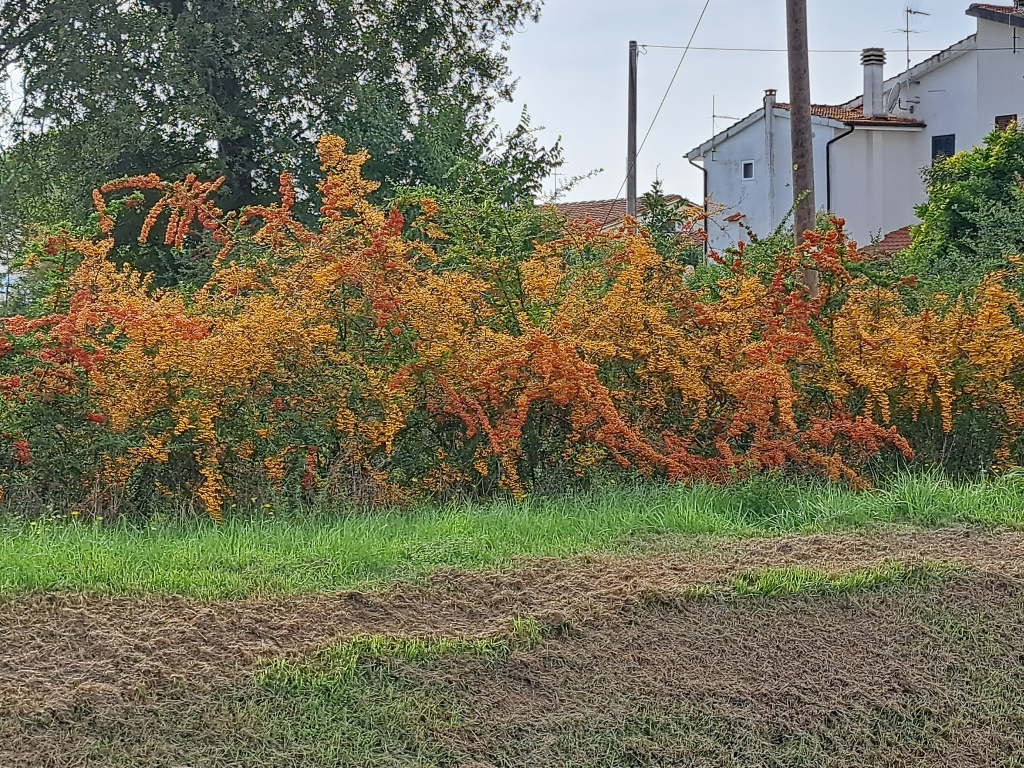

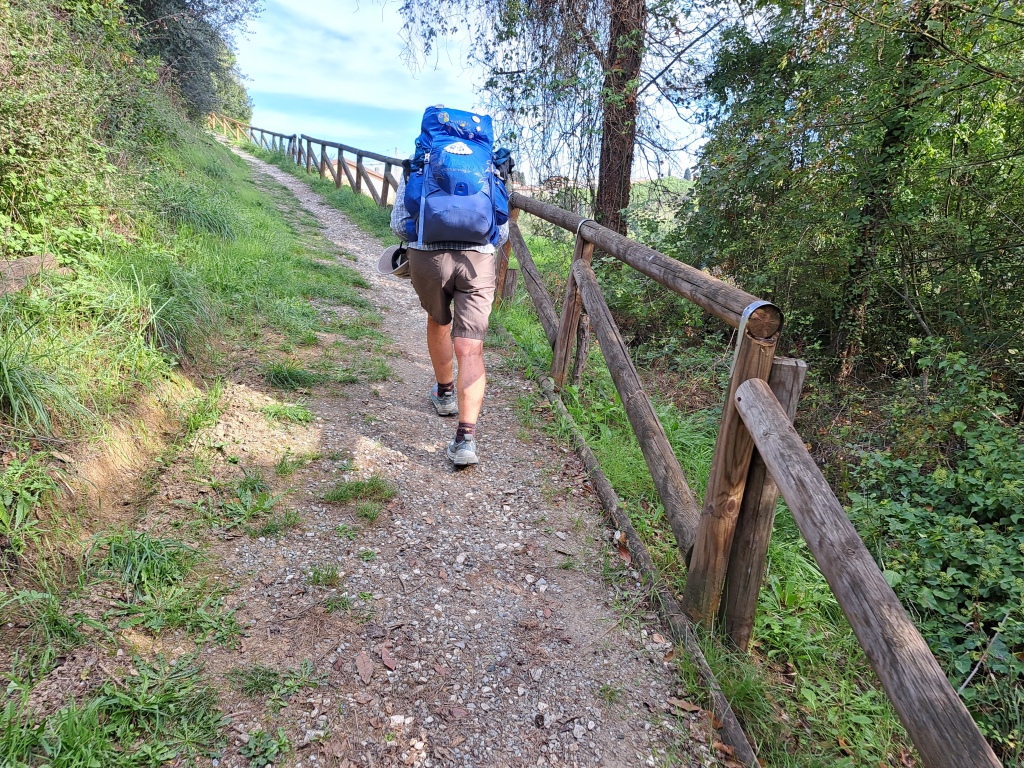
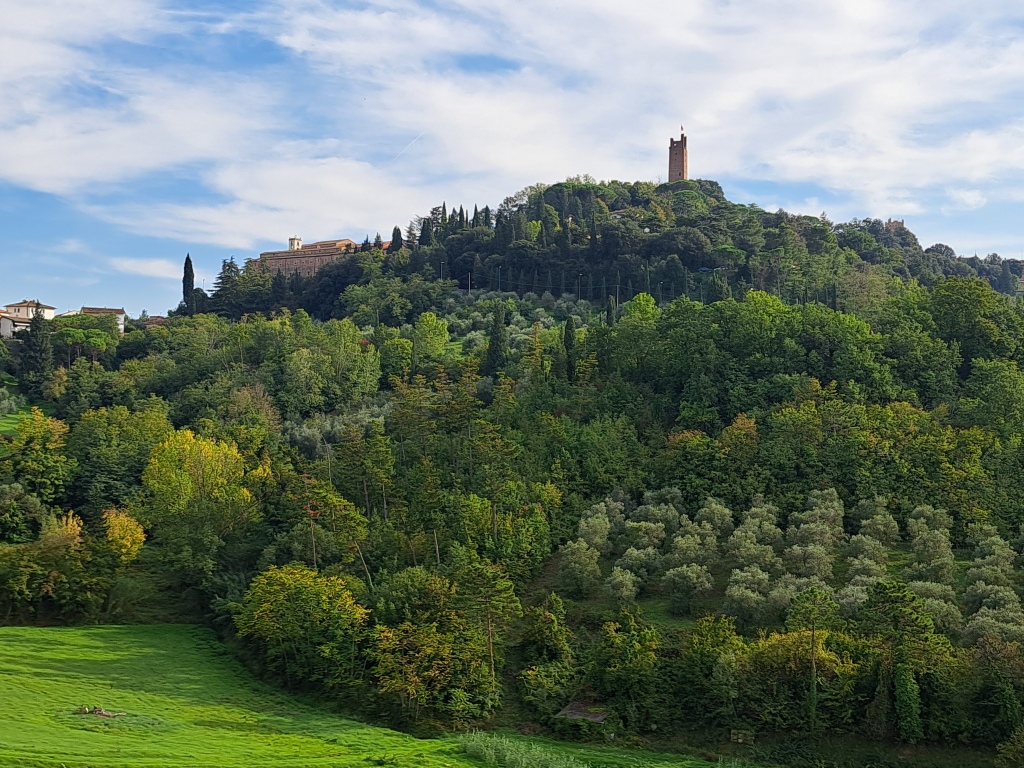




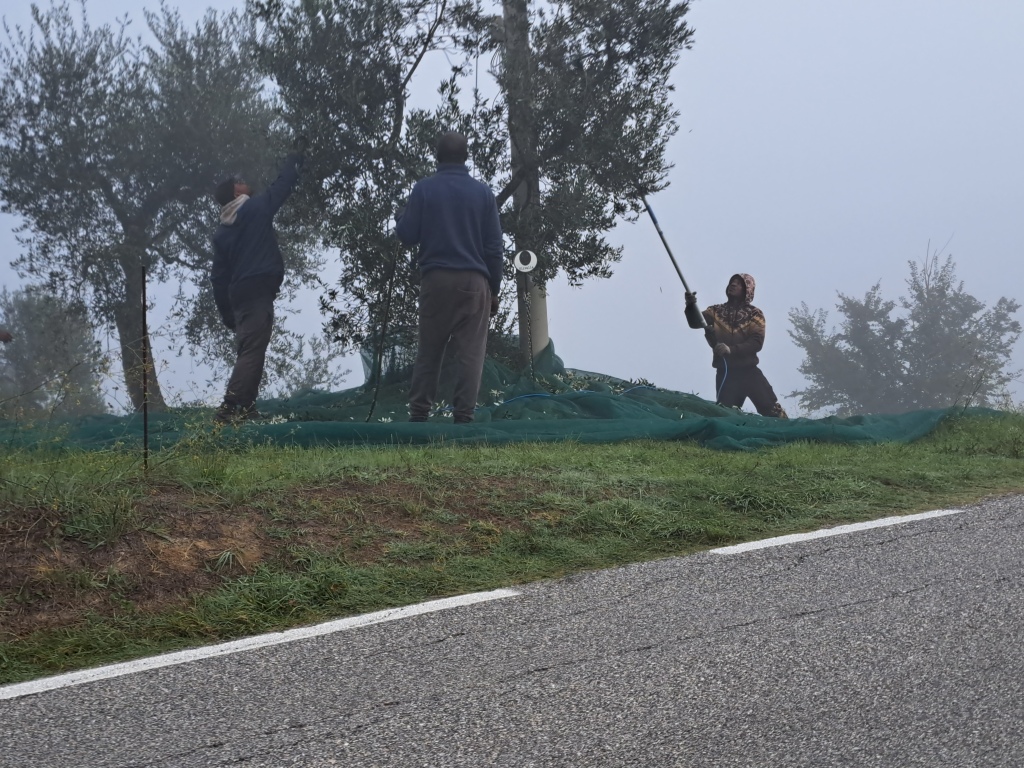




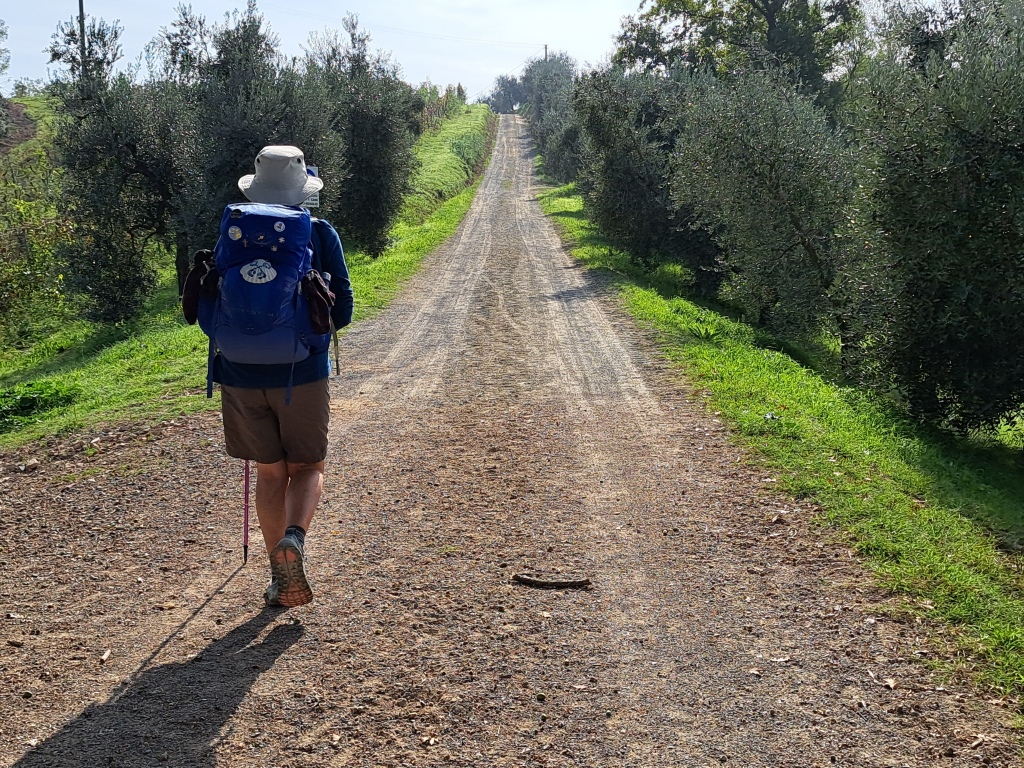

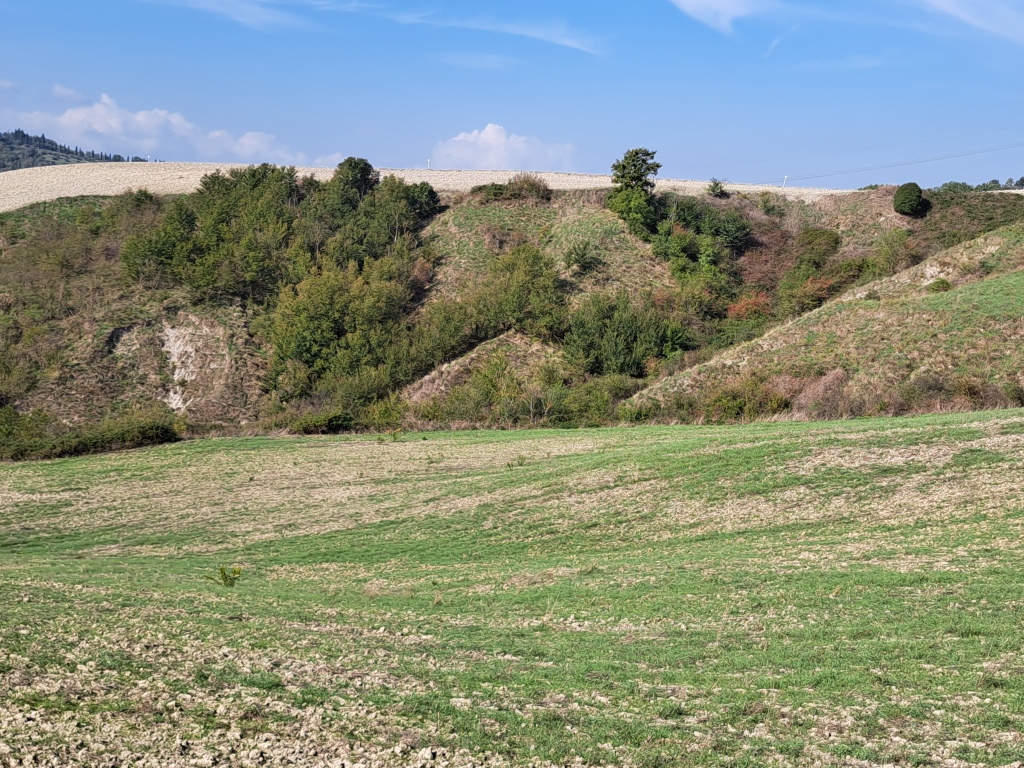














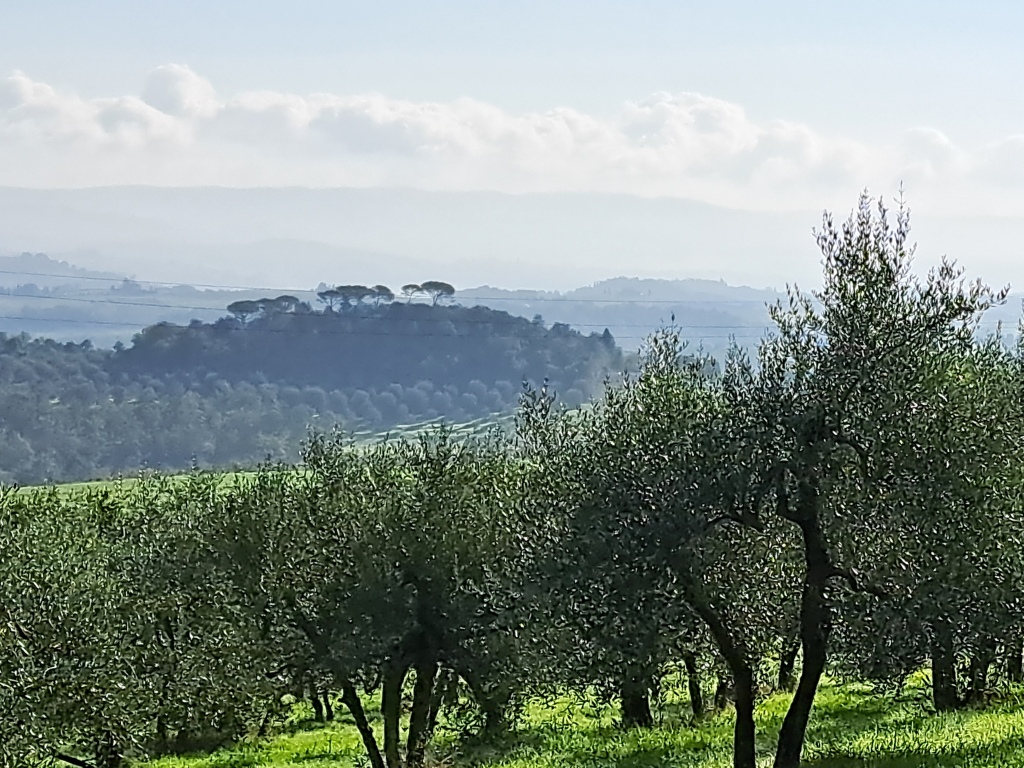




















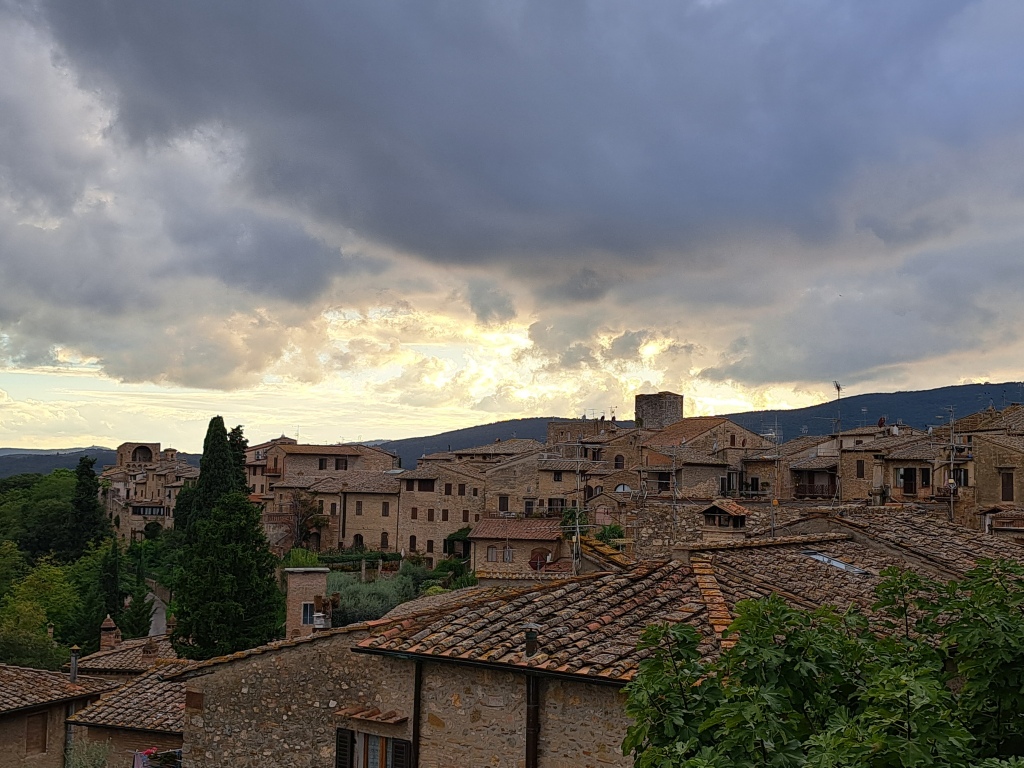
-
Every step we take
I am writing this in a place called Camaiore which is between Massa and Lucca. Below is our account to Massa but I just wanted to add something before posting this as I was not able to post the blog last night and we have enjoyed another day’s walking.
When we were last in Camaiore in 2017 we stayed in a pilgrim place outside the town. We tried contacting it again for this trip but there has been no response so we are in a one bedroomed apartment in the main street. The historic centre is really lovely, with a very narrow road lined with all sorts of little shops, bars and restaurants. We stopped at a similar place for lunch today, too. It’s called Pietrasanta and is a very stylish place with an awful lot of art works distributed throughout the town. We loved it when we passed through last time and were entranced by all of the statues again this time. It is a place that attracts many sculptors and artists and just before we passed through it had hosted a book festival, too, which looked really interesting.
Massa is at the heart of the marble industry here (this is the Carrera and Massa local authority area and, as you walk from Massa to Pietrasanta, you can see the mountains by Carrera that have been ripped open to extract marble since at least Roman times. You also pass so many places storing, cutting and fashioning marble, too. There is a café in the square at Pietrasanta that dates back to the 15th century and is reputed to be the place where Michaelangelo stayed when he was there negotiating for the marble he wanted to use on the façade of the church of San Lorenzo in Florence.
Along the way today we kept bumping into and chatting with a French couple from Nantes, a French man we met yesterday (who has walked from Le Mans) and a young German woman pilgrim that we have not met before. Everyone was in good spirits and the morning rain held off giving us a good walk through the hills where we were able to look down and survey the coastal plain stretching from the edge of the Ligurian coast all the way down to Viaregio. Despite the mists we could see the Mediterranean and also the mountains that loomed up behind us and stretched north and south. The wooded hills here are etched with lines and great patches of vineyards and olive groves and there are still fine mountain-top villages to spot with their brightly coloured houses and tall towered churches. You can hear their bells ringing out the hours and playing merry peels at odd times of the day.
It was not until we were on our final stretch in to Camaiore that the rain began to fall in earnest in great big drops that pounded our ponchos and danced around our feet. At one point, the drops were joined by flurries of hailstones, just to add a bit of excitement and, of course, this all took place as we were walking along a very exposed path right along the side of a deep trench where a river usually flows. The small stream occupying the bottom was hardly visible through the pounding rain. We were not surprised when the rain died away just as we entered the enclosed safety and shelter of the town.
Tomorrow we arrive in Lucca – a wonderful small city of real character and one of the places we thought might be our last stop on this pilgrimage. Thankfully, we have some days left and expect to get as far as Siena as my other blog entry, below, talks about……
Here is what I wrote yesterday –
Today (Sunday the 9th October) we are in Massa.
This is significant to both of us because we are staying in the same hotel we stayed in when we last walked here in 2017. Last time we joined the Francigena at Sarzana then walked here. So, from today our route begins to mirror our 2017 route to Rome. It is no longer simply the Francigena for us, but the Home to Rome route of 2017, too.
It is also when we start to really get to grips with how far we will be able to go this time. We can certainly walk to Siena in the time we have left and so we are deciding whether we can walk any further. We will look at the time left, the route beyond Siena and work out what is practical for us. We both know that we want to return slowly and have booked our Eurostar journey for the evening of our last day (24th October). Before arriving home we want to have had a period of decompression….
And, the truth is, we are more than a bit shocked at the idea of actually stopping and the concept of our pilgrimage journey ending so soon.
We met a lovely English pilgrim today. A man called David from Harrogate who was arriving at the bar we were just vacating (after enjoying coffee and a shared focaccia and ham sandwich) We said hello in Italian and wished him a good journey and he replied partly in Italian and English, and I said, in English, that the bar was good and he jumped back exclaiming, “You’re English!” which I didn’t deny as Alison said yes.
He told us we were the first people from the UK he had met since he started walking (from Bourg St Pierre – on the way up to the Col St Bernard) and we had to admit that he was the first UK pilgrim we had met, too, since Calais.
We had one of those great pilgrim exchanges and he gave us the link to his website (www.davidstott.weebly.com) and we went on our way as he set off into the bar.
It wasn’t until later that we really got to grips with the concept that we had been walking all this time and had met a few people from the US, Australia and New Zealand, a Korean and several Europeans but he was our first English person. It was as we were talking about the end of the walk that the shivers set in. He had been (as some others have been) quite excited at the idea of us having walked from our home and that we had been on the road for so long. We always accept people’s enthusiasm with a mixture of pleasure and increasing worry as we see the end looming up.
All of this was made more immediate when I look at the text I was writing a couple of days ago. I was reflecting on the fact that it is probably difficult to really express just how wonderful it is to get up each day and head off to a new place, discovering the route as we walk it, meeting people as we go and ending in a new, different town.
In my blog I often describe what we have been doing and share the difficulties and absurdities we encounter. I also talk about what we have been thinking about and discussing but, underlying everything, and quietly bubbling along with each day, no matter how hard it has been, is this feeling that we are so lucky and so excited to be doing this thing.
We stop from time to time to actually say how lucky we are as we look across a wooded valley at a series of jagged mountains rising out of a vast pool of white mist, or as we climb up and along a rugged forest track and we find ourselves being urged onwards by the vibrant song of so many different small birds. We have shared so much and each day we set of we can only hold our breath and see what the new day has to offer.
So, just as we know that the reward for climbing up a series of broken paths to the top of a hill or mountain will be the view, and the liberating feeling that we have reached this peak, we know that each day we complete gives us similar satisfaction and reminds us that we will have a fresh start in the morning.
And all of that just makes the idea of ending our pilgrimage all the harder to face.
Hence the idea of a few days of decompression – just as a deep sea diver has to take time to re-adjust to a different type of atmosphere, we will need a few days to come back home.
Now that I have managed to get that off my chest, let me tell you that the route from Pontremoli to Aulla and then on to Sarzana was both pretty demanding at times but utterly stunning, too. Lots of steep climbs and descents, often on demanding and very rough or unstable paths, but they were all do-able and enjoyable. Concentrating for long periods on exactly where to put each step can be more exhausting than the actual physical part, so we rested well and took an easier afternoon route today, to Massa to keep us fresh enough for tomorrow’s hill climbs.
The photos I want to share include the effects from the mist and the sun and are a couple of the reasons why we will always look forward to returning to this wonderful land.
(I have also added a few from today….)
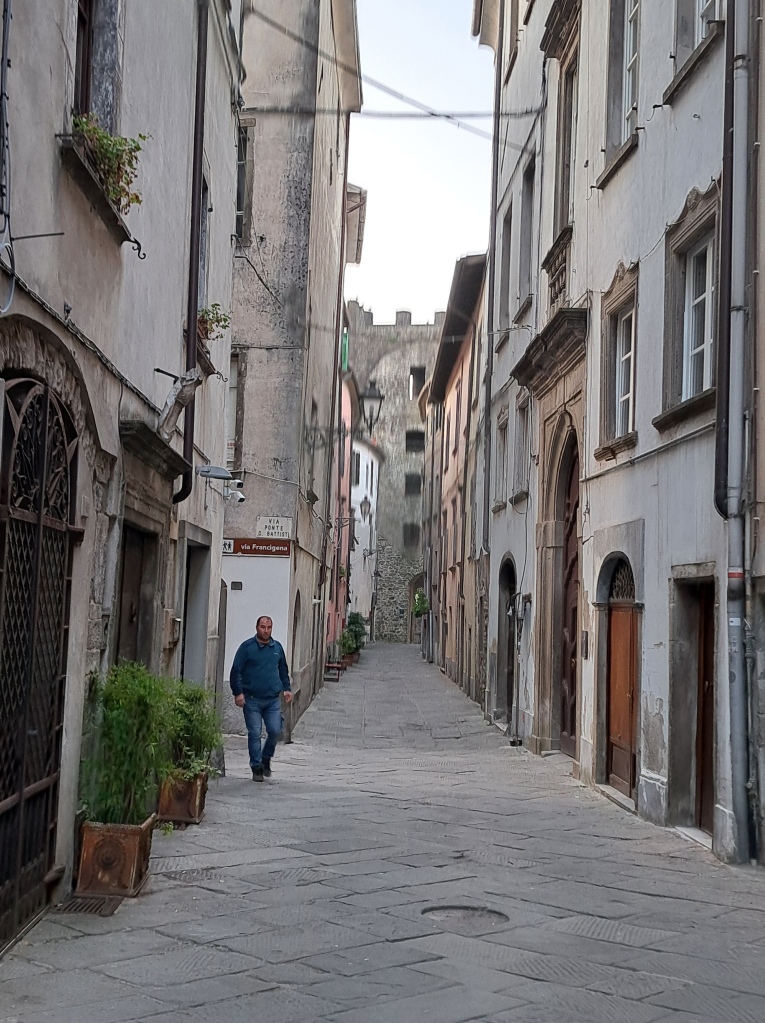



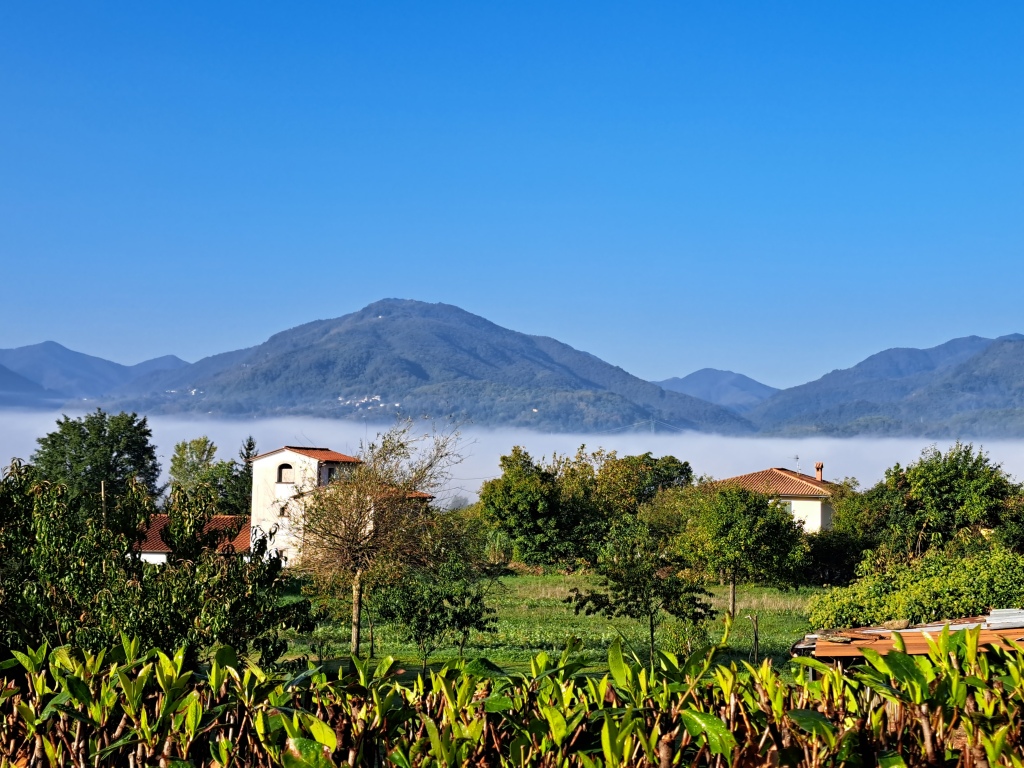




















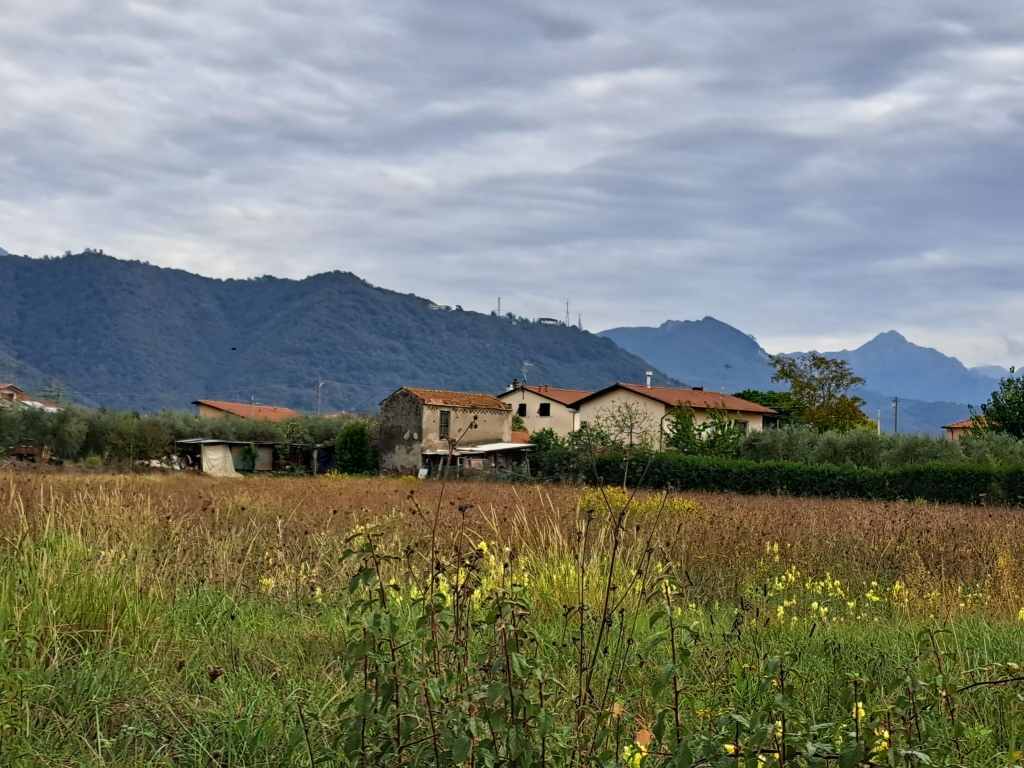
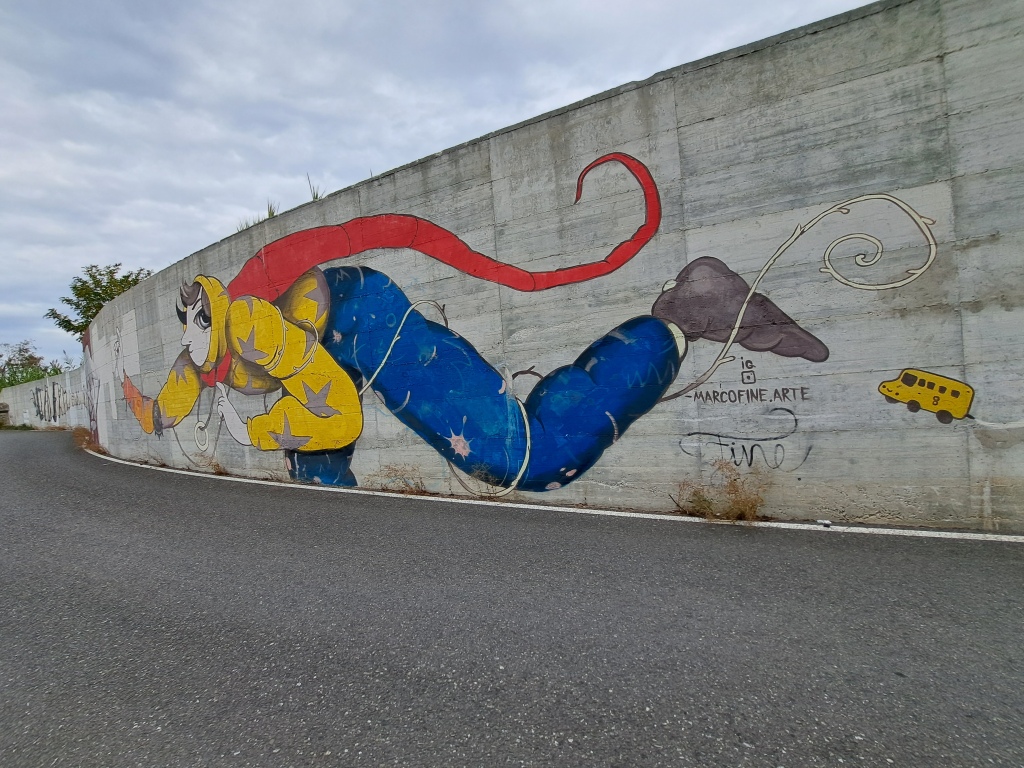







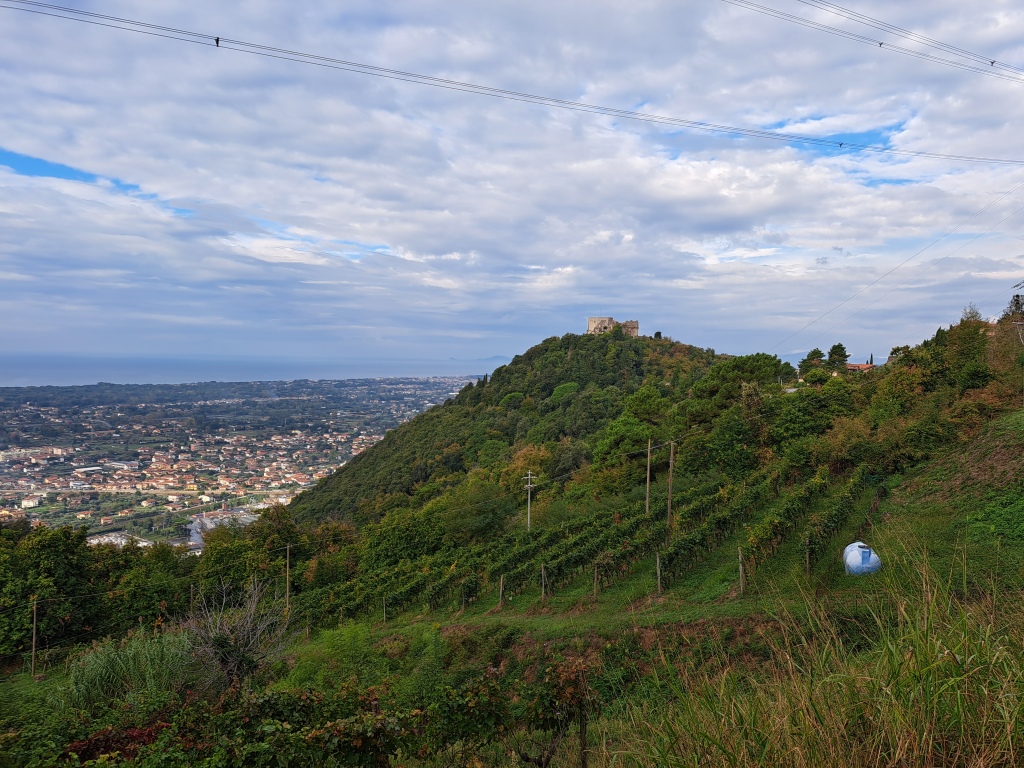










-
New places and old stories
We are in a small mountain town called Pontremoli, which basically means trembling bridge. It has two fabulous medieval bridges and, I am sure neither are likely to do any wobbling, so I assume that the original bridge was a rope and wood bridge of some sort back in the distant past. It stands on the junction of two rivers so there are more bridges to be found here, too. Almost next door is the church now used as the parish church, but it was founded by St Francis along with a convent that is no longer here (a Capuchin one is on the other side of the river from here). Sadly, the church is not open at the moment, which is unusual, but it just means this is another place to return to at a later date.
Yesterday we walked from Fiorenzuola d’Arda to a place called Fidenza. Both are lovely places and the walk was only 23Kms (compared with the previous days walk which was almost 35 Kms – from Piacenza). We will miss the annual food festival at Fidenza which starts today and goes on till Sunday, which is Ironic because we struggled to find anywhere open yesterday evening where we could have dinner. We ended up sitting in a bar that promised it would open up for dinner at 8pm which was too long a wait for Alison but we did it anyway.
The hotel we stayed at last night was the only one we could find (our fellow Korean pilgrim also stayed there) it was a pretty weird place. Called Hotel of the two “spades” I assumed it meant the two of spades but, of course, spades in Italian are something other than shovels. It is the hotel of the two swords – I worked it out from it’s logo… So, quite a dashing sort of place….
We entered the lobby and there were two older women sitting in the reception/lounge watching the equivalent of that TV programme where a couple argue and accuse each other of terrible things and let the audience decide. One was watching avidly as the older one dozed. We arrived and said hello and the conscious one elbowed the other who jerked upright and tried to stand up, nearly falling over with her effort. She was a tiny, very frail, elderly woman with bright red died hair and a very wobbly gait (no evidence she was from Pontremoli) and had a distinct resemblance to Mrs Overall from the comedy sketches “Acorn Antiques”. After signing us in, etc, we went up to our room and tried to have showers. Alison was first and returned after quite a long time saying the shower was cold. I tried it to see if I was brave enough to use it then went down stairs to waken up out host again. She insisted that I needed to leave the water running for a while and, after insisting that this had not worked I gave up and had a grimly icy wash
As we left, later on, to explore the town and find a place for dinner she insisted that the water would be fixed soon. Only two hours, she said, and it will be hot again.
After our rather extended outing we returned at about half nine to find the women with three men of various ages talking loudly in the foyer. They all greeted us warmly and the older man, who turned out to be the main hotel person happily assured us that within the next hour we would have hot water and pointed the one of the other men saying that he was our angel who had come to solve the water problem.
Needless to say, we did not try the shower until the next morning.
We had committed to spend the morning in Fidenza because we had been having trouble finding accommodation for a couple of the stops over part of the mountain sections. We had one booked and one that we thought we night be able to get into despite not being able to contact them but the other place was impossible to contact my phone, email or text so we had given up and decided to take the train to Pontremoli and leapfrog those sections of the way across the Appenine mountains. So we were able to visit the Cathedral and check out a few other places including a church with a very moving memorial.
Fidenza is a place that has been fought over and subject to violence since its earliest days when it was a Roman fort and town. The local Saint, who gives his name to the Post-Roman title of the town “Borgo San Donnino”, was martyred there by the Romans and the shrine for the saint (who was beheaded) was already an established pilgrim site by the late fourth century. The crypt of the Cathedral has his bones laid out neatly in a glass and metal case below the altar, there. On the outside of the Cathedral there is a statue of St Peter with a scroll in his hand referring to the pilgrim route to Rome and pointing the way, so this has been a major stopping of point on the way for a very long time.
The city has been owned by various kings and dukes, fought over and destroyed a few times and, in the early twentieth century was heavily invested in by Mussolini who renamed it Fidenza to be closer to the original Roman name for the place. Then, during the war it was heavily bombed by the Allied forces, destroying quite a large part of the city, and then the Germans took the place over during their retreat and conducted a series of atrocities on the poor folk there. The memorial in the church has a painting of a woman distinctly like Mary (The Church is dedicated to Mary the Mother of God) with a man very like Christ laid out over her lap looking dead while she throws her arms up in despair. Near her are two angels offering solace and all around her is devastation with other dead bodies and the church badly damaged, in the back ground. Next to the paining is a memorial plaque listing some 120 people (men, women and children) who died during the Allied bombing. Given the news of the Russian rockets fired into a Ukrainian block of flats, we stood there contemplating the tragedies and suffering caused by wars.
So, after visiting local churches and other sites, we did a bit of shopping and headed for the station. On our way we did a detour past a stall we had noticed that was selling freshly roasted chestnuts. We have been walking past sweet chestnut trees for a long time now and have felt saddened by the lovely nuts lying crushed by cars and people’s shoes. So we bought a bag of them and sat on the train watching the Italian countryside speed by as we peeled and ate these delicious things. We went first to Parma, where the ham and violets come from (amongst other things…) and then on a second train that took us out of the flat lands of the Po valley and into the mountains. Tomorrow we set out to roam across some of those dramatic and heavily wooded mountains and spend the day walking about 32 Kms to a place called Aulla.
The train journey took us out of the previous Italian region we had been walking in called Emilia Romagna and has plonked us in the Ligurian region where we have walked before. Different food, different language and different landscape, too.
So, I am sitting writing this in a room where I can see one of the medieval bridges arching across a river whose banks are amply dressed with many trees and to my left another window shows the edge of the town with the hills and mountains rising up behind it. The wooded hills are a bit in shadow now but the jaded, rocky mountains behind them are pink and golden in the light from the sinking sun.
Alison is sorting out our washing and hoping it will all dry before we leave tomorrow as we have an early start and we went a bit mad, washing lots of our stuff as we have a washing machine here and wanted to take advantage of the luxury (we usually wash our clothes each day by hand). Everything will be fine and we will leave here early to get a good start on the day!
As we have a clunky wifi system here I will put up a few pictures and leave it till another day to share other ones. One of the pictures I will add is of the fields we passed yesterday. The farmers do a really deep ploughing of the fields, then they take a couple of goes at breaking the soil up, after leaving the field for a few days for the soil to dry hard. Then, they end up with a light, very fine, dry loam soil that they appear to reseed with a crop. We don’t know what the crop is but the pattern they leave in the field is intriguing and someone might know what that sort of seed pattern means…. Answers here please!!
I have also included a picture of an early to mid16th Century organ in an abbey we visited that is still in use (Abbey of Chiaravalle della Colomba, where the cloister photo comes from, too)!! Other pictures include a couple from the Matthis Hotel, which has a full body profile of Johny Matthis on the roof but was originally named after a car… The strange tubing is irrigation pipes that seem to be being scrapped all over the area!! And a couple of pictures of the not so shaky medieval bridges…


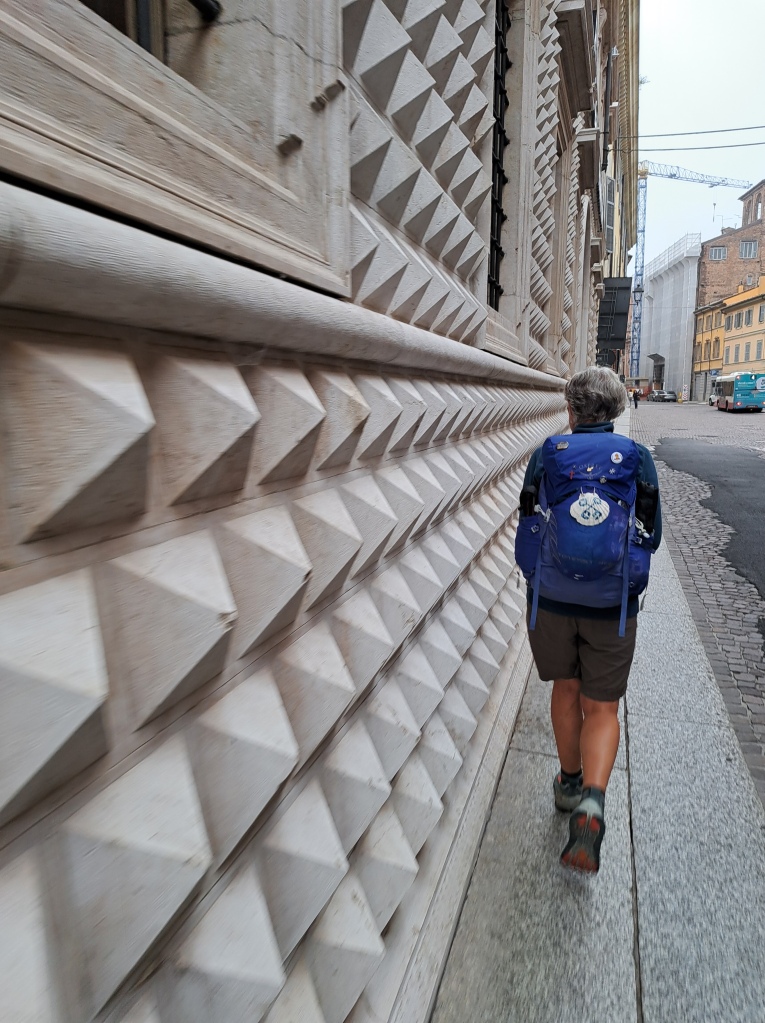



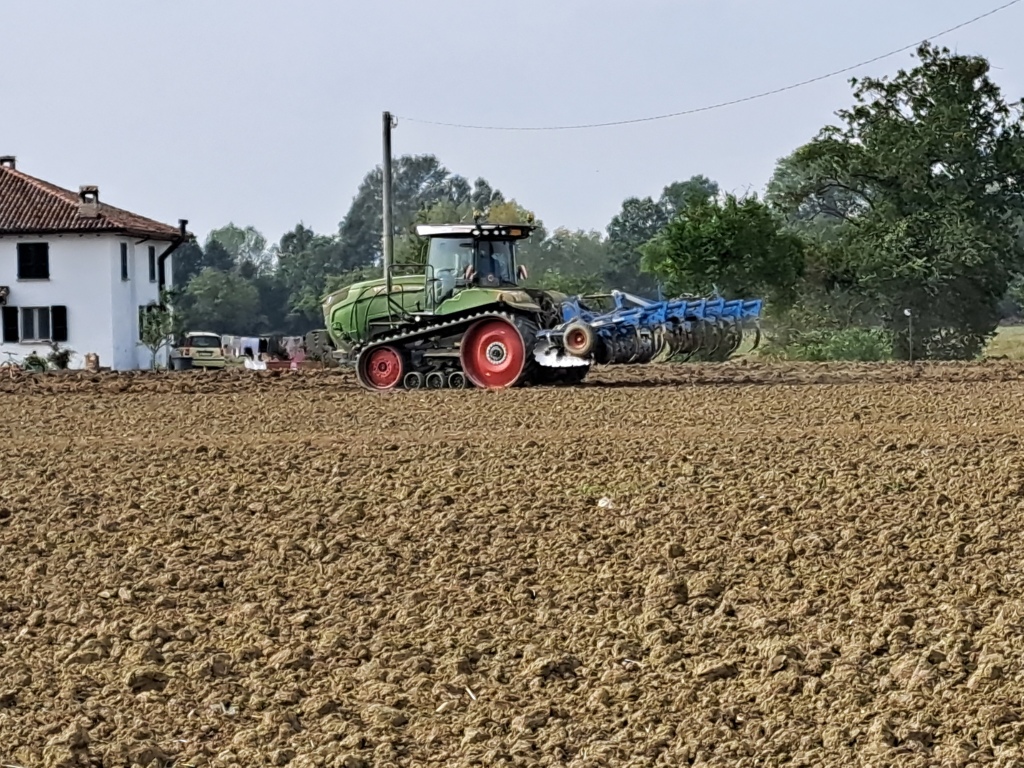
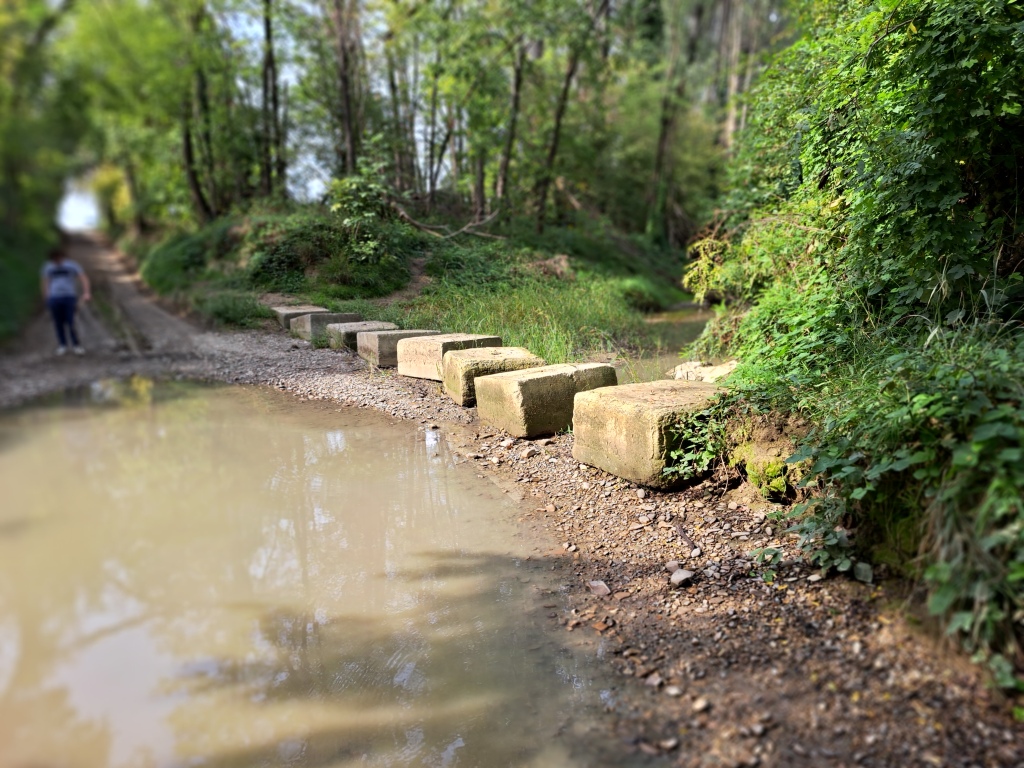









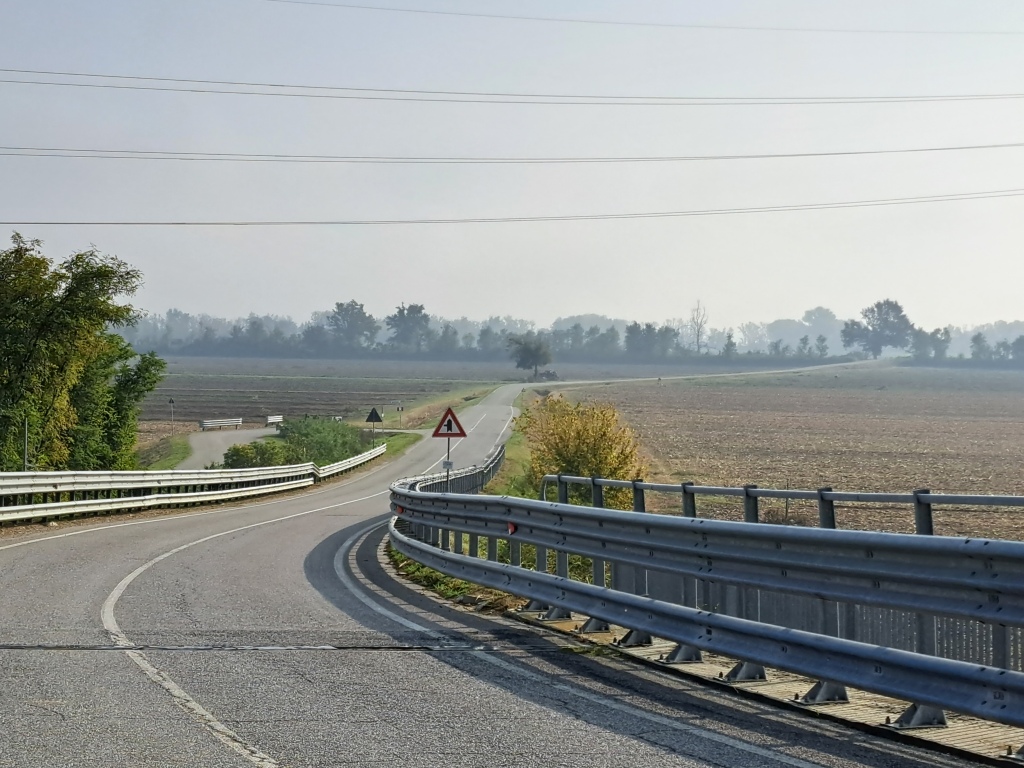








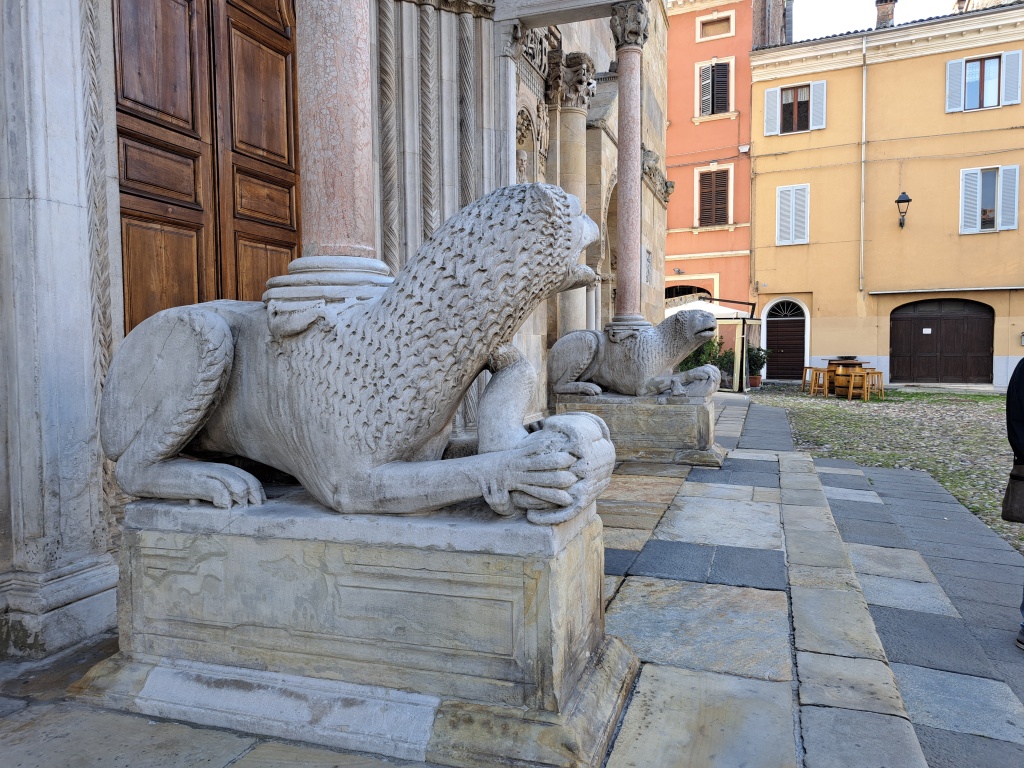




-
Walking with purpose
There is always a thought that people might be doing a pilgrimage because of something that has happened in their lives.
The first time we walked the Camino we met quite a few people who had reached a point in their lives where they needed to take a step away and re-examine what they were doing. Others were taking time out after a loss or break up of relationships, and so on. Over the years we have met many who fit into those sorts of categories alongside people who had just retired and people who were fulfilling a long held ambition.
This is not to say that everyone on pilgrimage is like that, just that there is often all but significant proportion of people like that.
So far, on the Francigena we have not found anyone who has given us a reason like this for their journey. The closest was a cyclist from Denmark who is a young man, not more than thirty years of age who is a chef and had spent a year or more in an obscure town in rural Norway as a chef as a way of exploring a new way of looking at his work and was now cycling the Francigena as another part of his process of discernment. He was not troubled, just looking for an adventure and possibly a new route through to the next part of his life.
Of course, there may be a number of those whose paths have crossed ours who are seeking solace, answers or some other thing but were not with us long enough to share their thoughts with us or felt that our language skills and theirs were not up to such discussions, anyway.
So, the people we have met are busy enjoying the hike, or have a goal to get to Rome or Sienna, etc within a limited time frame. They are happy, are good company and most of them are faster walkers than us, so after a few days they hop one stage ahead and are away.
The other fact is that there are so few fellow pilgrims on this Way that we have not really seen more than a small handful for any more than a few days at a time, and only a portion of these are walking for more than one or two weeks so if they don’t speed past us, they jump on a train and go home, instead. Difficulties of finding accommodation also mean that there are times when everyone on the road at a given time will be in the parish or municipal hostel as that is the only place to stay, or they are spread across a mixture of hotels, B&Bs and apartments so you might see one or two walking the same streets in a town then not see them again until the next hostel stop.
Pilgrim numbers are much bigger in Italy than in France or Switzerland so tonight will be our first night with something like a full hostel. We are in Orio Litta, on the night before we cross the River Po on the famous small ferry and there’s an American couple we’ve walked with for a day or so, a young Italian Man (ditto) and a French couple who are doing the Francigena on bikes. The young man, is finishing his walk in a couple of day’s time and the Americans, Ab and Laura hope to go to Rome. We, as you know, hope to get as far as Lucca or Sienna but are unlikely to get much further.
The beautiful Municipal hostel was very busy when we arrived as the hall next to the hostel bit was full of people from the town celebrating the national day for Grandparents (2nd of October). So it was all a little bit chaotic and lovely (with three plus generations wandering about, little children dressed in their best followed by parents and sometimes grandparents, people moving in and out of the hall, and occasional toasts, announcements and speeches all accompanied by loud talking laughter and cheers – there was even a “hip hip hooray” by the full hall…).
In a few days we will be escaping the lowlands of Lombardy and we will be very please to leave them behind. Despite strong anti-insect sprays we are both royally bitten by a variety of the nasty beasts. I caught one on my neck this morning that had been enjoying its breakfast and it was an ugly, hard bodied creature rather than the gnat and mosquito variety, but it did the job just as well. The beasts bite through my socks and my T shirt, which makes it harder to even provide adequate protection, so the best policy will be to get out of here as quickly as we can. It makes the long, indirect routes we are taking even more frustrating than normal. We have good meds to reduce their effects, of course, with antihistamine (cream and tablets) and hydrocortisone. We also have a French gel that is really good called Apaisyl – especially good at reducing the itch and swelling.
There are many places in Northern Italy, even in this part of it, that we want to explore further (in a way that avoids the flies – so especially not in the Summer)in Pavia was lovely (the apartment we used was not so, if you are planning to go there contact us so we can guide you away from there). The university was just starting up and we watched the new students as they met and wandered around in small groups and gathering in bars, etc. glad to see they were not being restricted by the dreaded effects of Covid, etc, and there were particular groups celebrating graduations and, like in other parts of Europe, the graduates were wearing their laurel wreaths on their head very proudly, surrounded by doting parents and siblings. The Castle we visited was being prepared for a freshers fair with dozens of stalls going up along the arcades forming the inner courtyard and it helped make the whole city buzz with life.
The city’s university buildings are glorious and I could see how towns like this influenced the people who built Edinburgh and designed the older University buildings there as well as influencing places like Cambridge and parts of London, too. The whole of the old part of the city is worth exploring and we loved some of the churches and the Cathedral, too.
Remarkably, when we were walking around the outside of the Cathedral I noted how the building seemed reflect the much more modern style of industrial architecture where the building exposes and makes a feature of the exterior by revealing the purposes and processes carried out inside the building. The raw brickwork with the rows of tall cylinder shaped sections of wall revealed the series of chapels that ran along the interior walls of the church. Then when we visited the Castle museum we found an extraordinary, large wooden model of the Cathedral which was constructed during the buildings conception and design and discovered that has never really been completed and that work was still going on to build it in the early twentieth century – the model was built in the early sixteenth century….
The back story to places always gets to me.
Which brings me to the back story of this particular blog.
While not really finding anyone who expressed any desire to “find themselves” or deal with tragedies, or any other such thing by walking the Francigena, that doesn’t mean that no one on our walk is in any of those categories.
Both Alison and I re looking forward to this pilgrimage for a number of reasons. We (Alison especially) have suffered a number of losses of close people in a fairly short period of time and we needed the space to help deal with and process this as well as take time out to pray and reflect. So, as I’m sure you are already aware, we have been doing just that.
We have also not been able to do such a long walk for quite a while and have missed this very much as we find the concentrated time together something special, along with sharing the journey and the adventure together too.
And I have needed this time to reflect on my work, on my ideas, my priorities and what is left for me to do in the time that is left to me. I turned 69 on the first stage of the walk from London to Dover and the time around my birthday revolved around the effects of Alison tripping up and badly cutting her arm, which turned out to be just another reminder of our growing vulnerabilities. Something that shouldn’t limit us but help us choose our risks and our adventures. So, the time is being actively used to try to listen – to each other, to our thoughts, hopes, desires and ideals.
I have always said that you shouldn’t expect a pilgrimage to change you or give you all the answers. But it is where the next journey can begin. So, I am hoping and praying that this journey together is a good launch-pad for the next set of adventures in our life together.
And I think I can’t really ask for more, can I?





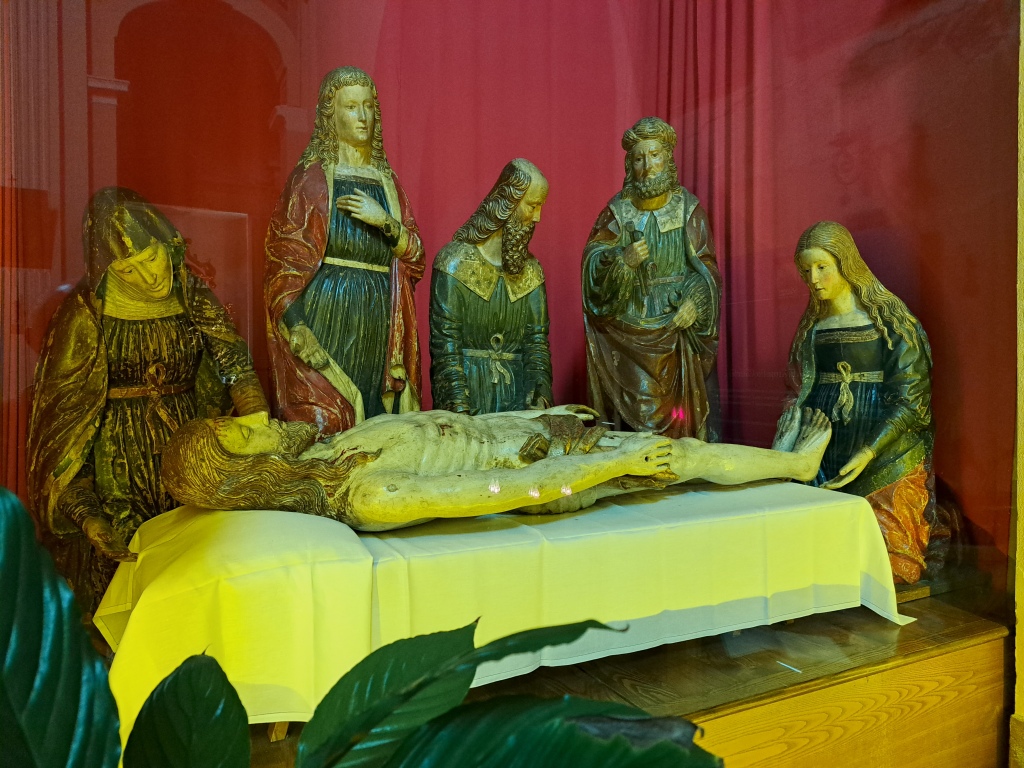














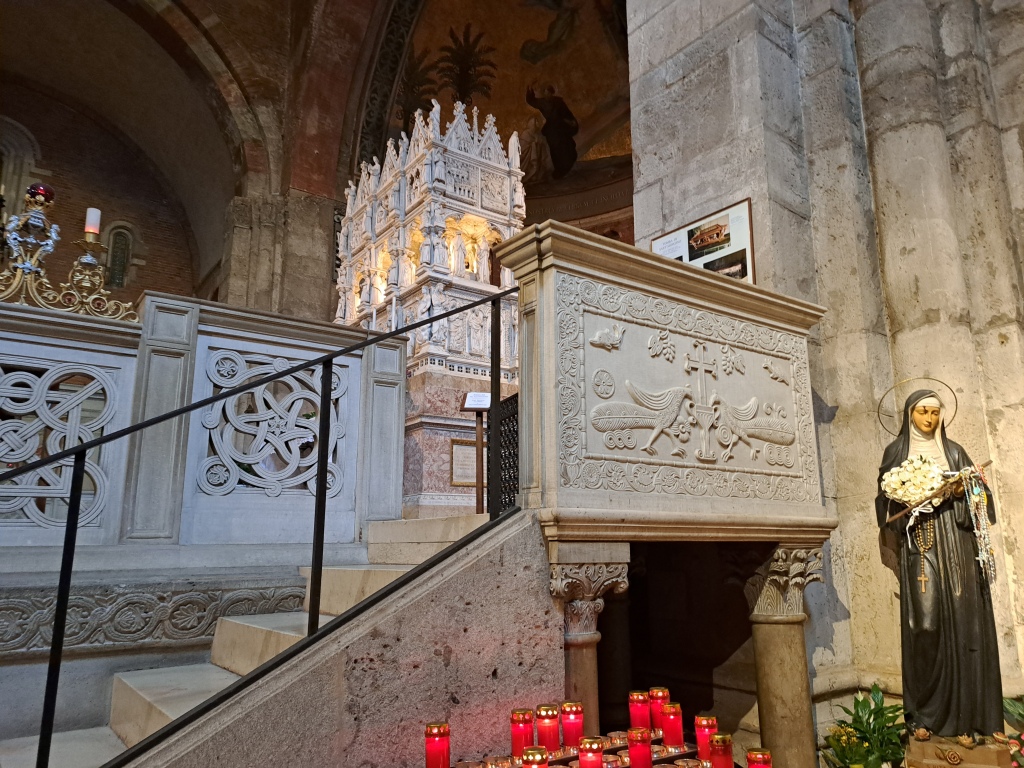













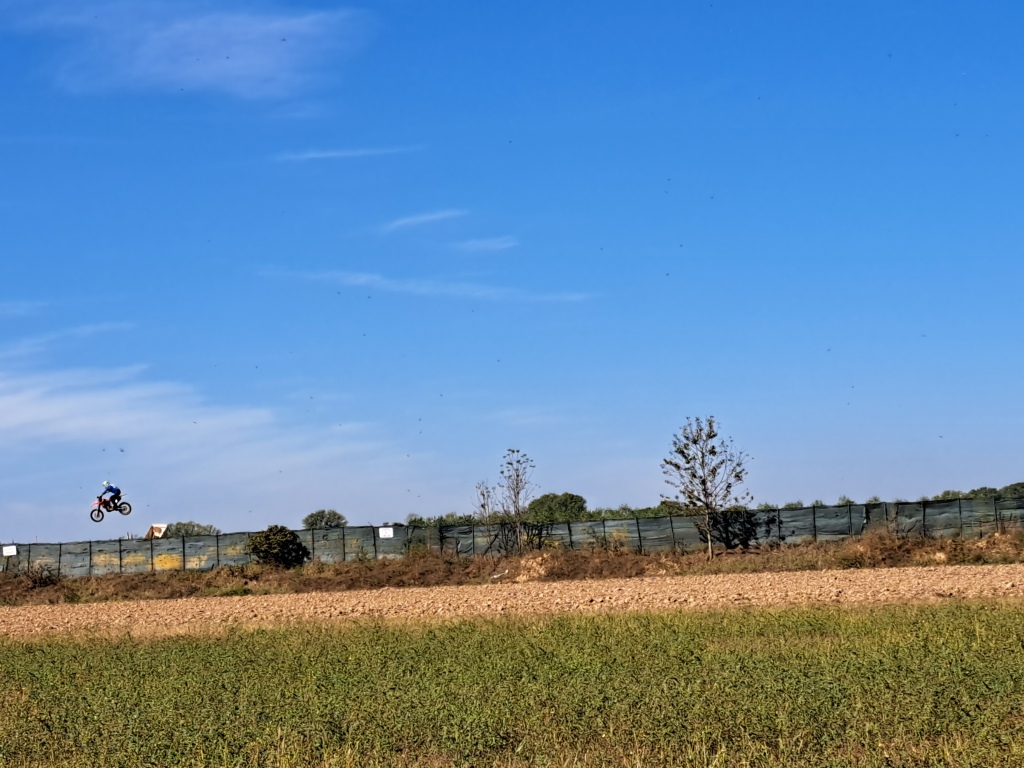







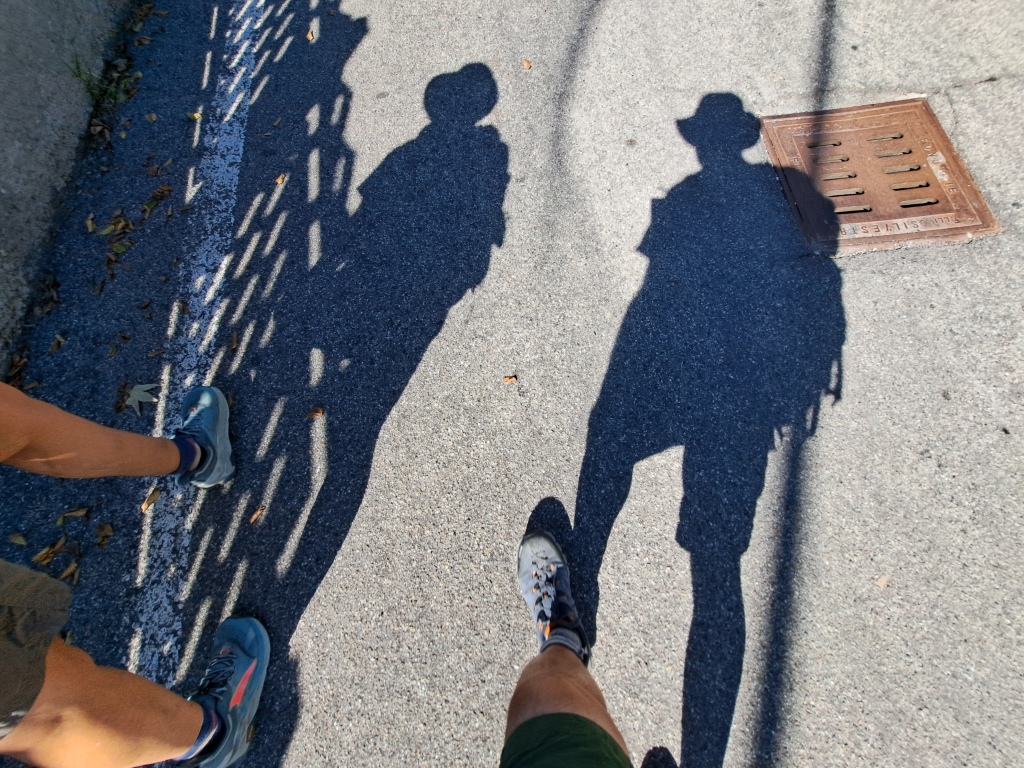

-
Down from the mountains and into the swamps…
Today is the 28th of September and we have arrived in a place called Tromello. Yesterday, when I wrote this, we were in a fabulous B&B in Mortara which is in Lombardy…..
We have walked through Piemonte to get here and have thus spent a few days in the rice growing heart of Italy.
I am writing here in a lovely garden owned by our hosts who are musicians. Roberto Allegro (also known under the name Roberto Maurizio) is a conductor and pianist/harpsicord player of note who has devoted his life to Baroque music. His son and one of his daughters are classical musicians. The son plays the oboe and daughter is a violinist specialising in playing the baroque violin. Both trained at the Royal College of Music in London as well as in Italy (he thinks the teaching in London is the best).
I have spent the last couple of days writing about the countryside we have been walking through and the effect it has been having on both of us, but particularly on me. Sadly, I did not save this and a few minutes ago, I accidentally closed Word and I seem to have lost everything. It didn’t even ask me to save things before it closed. I was in the middle of editing one of my sections and accidentally brought up another screen (from the stupid windows 10/MSN system ) and that was that. Will have to remember to save things rather than just leave them open.
I had been writing in our room but it doesn’t have a desk and was sitting with my computer on my lap, so I needed to get out and sit in the garden at a proper table with a proper chair. So, the sounds of the city and the irritating flies will keep me alert as I write this.
Walking in the rice growing area is quite instructive. We have walked in lots of low lying, flat landscapes and have always enjoyed the huge skies and wide vistas. Here, we have those in abundance. There are aspects of the landscape that are so familiar and yet the place is quite alien or odd in other ways. The contrast between the Fens and here is quite useful to start with. The Fens is a flat landscape that has been dried out with the use of a complex series of drainage ditches. So the land has shrunk and the roads and the villages and towns tend to be raised above the land as they were built on islands or at least dry areas and the land has gradually been lowered with the extraction of the water. The rivers and a number of the roads are also above the agricultural land for the same reasons, and the ditches cut through the landscape helping to manage, and limit the supply of water to the land.
The land here began as a large area of swamps fed by the Po and other rivers snaking across the flat region between the Alps and the Apennine mountains. Unlike the Fens, with the introduction of rice growing back in the late fifteenth century, the intention was to keep the water on the land for up to half of the year manage the draining of the land in order to complete the growing of the crops.
So the area became a vast managed swamp and, by the mid nineteenth century, with new understanding on how to do the water management and with big inputs of money as well and knowhow, the whole place became an even greater producer of this one crop.
Alongside the new canals and network of irrigation systems came the need for more and more workers. Growing rice was very people intensive and well over quarter of a million people were needed to prepare the land, plant the cops, week and maintain them and then harvest and process it. So, in the nineteenth century alongside the industrial scale of production came the industrial scale of exploitation of the workers. From March to October these people worked the heavy clay soil, planted the crops by hand, weeded in flooded fields, dealt with the voracious insect populations that these man-made swamps produced and dealt with the extremes of cold and heat that came with the three different seasons they worked in.
It was not until the early twentieth century that these workers got at least some improvements in their work conditions and it was the post ww2 period that finally brought about viable machinery and use of weedkillers and other solutions that significantly reduced the numbers needed for this crop.
Today, when walking through the region you will see isolated “farmsteads” consisting of a series of large buildings (a mix of farm buildings and blocks of accommodation) often forming great quadrangles that look like a cross between a stern monastery and a prison. These were where many of these impoverished and abused workers (often whole families) lived and worked. Most are abandoned or close to that state. The crop is machine harvested now and mainly processed in huge, featureless factory blocks. The derelict buildings do often give off a strange sense of unwelcome as you walk past them.
The other thing to note about rice growing (apart from the abundance of insects) is the nature of the crop itself.
Apart from a couple of fields today, every field we have past has been drained and is pretty much ready to harvest. The rain we have had has delayed some of the process but we pass by some fully cropped and partially cropped fields but most are still wating for the harvesting machine to come by. The colour of ripened rice is incredible with a different sort of gold to it from other crops, having a mix of both red and green in its hue.
The other thing is how densely the stuff is grown. You don’t get rows of individual stalks of rice. They are grown in tightly pack rows of bunches of stalks so, when you look at the field from above you don’t get a sense of there being individual plants. The tight packing and the heavy heads of rice form a thick carpet when you look down on it and across the field there is the look of a badly cut field with blades of grass sprawled across the land. But you are looking at the top of the crop and the earth is a good couple of feet below that. You have to see the field from a lower angle to understand what’s going on. I have some photos to illustrate this odd effect.
Having mentioned the insects, I should add that the walk has been quite rich in a number of different types of fauna. Yes, there have been a few mosquitoes, but largely we have managed to miss the major plague that persists across the summer months as the fields are mainly drained and much of the water in the ditches is flowing along merrily. Many other flies, gnats and huge swarms of tiny flies are there to keep us uncomfortable and help distract us from the remaining mosquitoes whose bites uncomfortably dot my shoulders, forehead and legs. There are also various sizes of hopping insects that could be crickets or even locusts. The smaller ones mainly hop and the larger ones hop then fly on quite large sets of wings. We have seen a few animals we thought were marmots but turn out to be nutrias (a now common invasive species from the Americas) and other furry creatures who are at home both on land and in the water. The nutrias got us excited because we thought they might be beavers (we saw beavers in France) but, while they have the two big teeth and similar furry faces, they don’t have the big, flat tails, so nutrias are what they are. We see frogs and other amphibious creatures, evidence of snakes (skins and dead ones) and we have seen the prints of other animals including wild boar and deer. But the birds are probably the main creature that visibly dominates this landscape. Huge black and white birds with long curved beaks everywhere (African Ibis?), as are smaller, more elegant white birds we suspect are egrets. But many other birds, large and small add colour and grace to the landscape, too. Not so many jays as earlier but some magpies and of course, various birds of prey from very small ones whipping across the fields and large ones wheeling overhead.
In the last few days we have stayed in a variety of places and each one has proven itself to have its own distinct character with people hosting us who are keen to help, to show off the places they are renting and give us the support pilgrims need (like where to get food, where the route goes the next day, where to visit and get a stamp or what the significant sites are for pilgrims. We stayed in a pilgrim hostel in Santhia, an amazing room in a building built by the Italian version of a mixture of a friendly society and an early union. This was in the amazing city of Vercelli. Then we stayed in an agricultural centre on the end of Robbio where they take groups of mainly young people and teach them about rural life in this area. The building was amazing and they had a small farm section with chickens, geese, goats and a pony at the back. And now we are in Mortara, which is lovely.
One particular animal that has featured a few times on this stage of the journey has been the dogs. In other parts of Italy we have walked in dogs have not really featured (apart from some amazing sheep dogs) and, unlike France, they were never as persistent in their barking or their defence of their owners property. But here, they are easily as noisy and persistent as their French counterparts and today our experience was a bit troubling.
This morning, on the path just short of a place called Madonna del Campo, we were walking along a path between fields when we saw three very big dark brown dogs emerge from around a corner ahead of us. We thought they might be owned by hunters as they looked like they worked together and the started to run towards us, then stopped as if they had been called by someone, then they turned and trotted away out of view.
We got to the turn and walked into another section of the path with a ditch on the right and a field edged by trees on the other. We immediately saw the dogs in the diagonally opposite corner of the field to us. They were very alert and barked at us as we proceeded to walk along the path, then they began to approach us in short trots then pausing to bark and snarl as we walked along.
We did what we usually do in such circumstances. We didn’t engage with them, kept our gaze forward and walked together at a steady pace, as the dogs moved round to our rear and continued to threaten us. We remained steadfast and continued to walk to the far corner and then onto the next section of the path and, thankfully, we had left the zone they wanted to protect so they remained at the corner watching us until we were far enough away for them to be satisfied that they had done their job.
Someone should have had them under control and I worry that individuals or people less confident would have turned away and tried to find an alternative route rather than risk walking past that aggressive little pack of hounds. Even if we had known the Italian for “Go Home!”, as we do in French, we would not have tried it with these animals. They were not wagging their tails and their growls were not just for show.
We also hope that the young Dutch woman we have been occasionally encountering was spared from a similar encounter as she is walking with her dog and may not have been treated in the same way by those hounds. Or perhaps, as an experienced dog owner, she might have just sent them packing!! We hope that was the case…
So, all of the other stuff I have been writing about (and managed to lose today) will have to wait for another day. I have spent too long on a history lesson and wanting to share our mixed delights and encounters with nature with you.
We are getting closer to the River Po and hope to be able to take the ferry across in a few days’ time – the drought earlier on this year caused it to stop for a while but the rains have helped get it going again. We are also looking at a good day’s rest when we get to Pavia on the 29/30th September. Just one short and one long day to walk before then. (Well, just finished the short day!}
And here is a mix of photos starting as we left the lakeside town of Viverone where we stayed in a renovated monastery where, on the wall as you walked up the stairs to the large room where we had breakfast, was an interesting a reworking of the last supper that I had to share here….














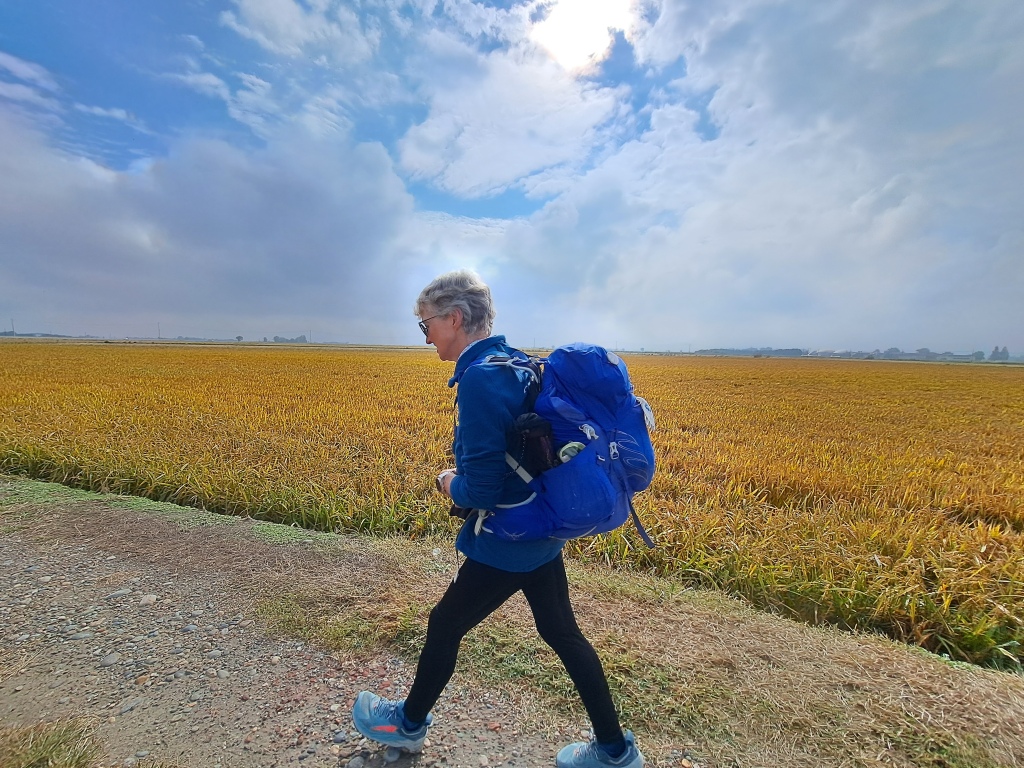












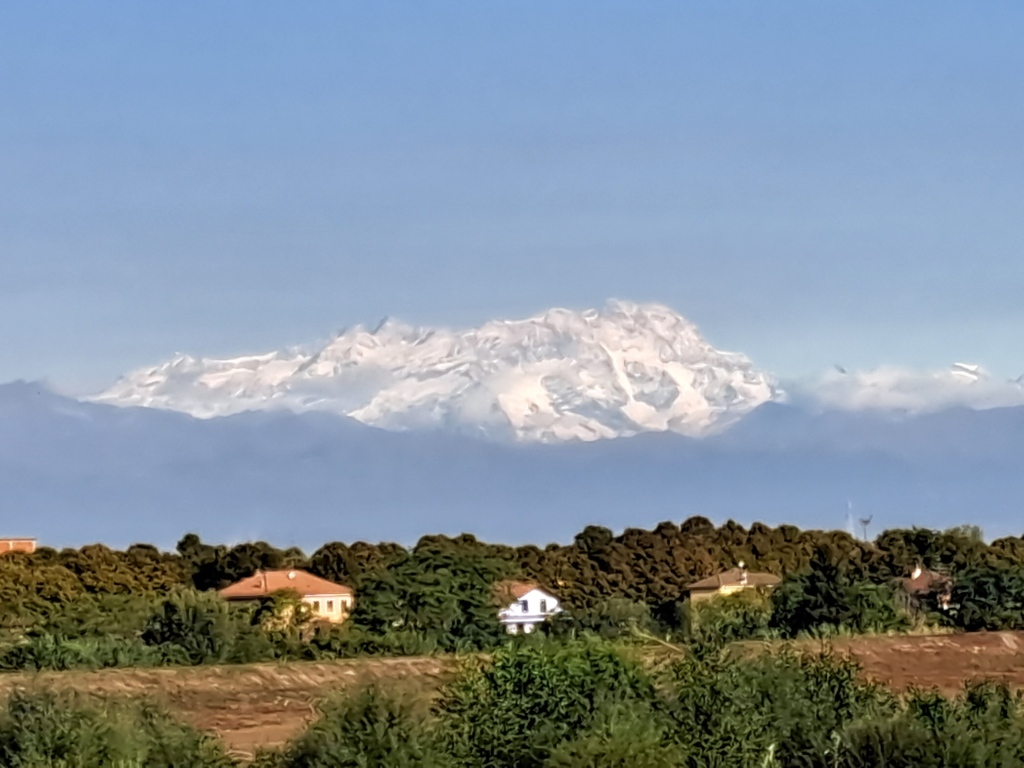



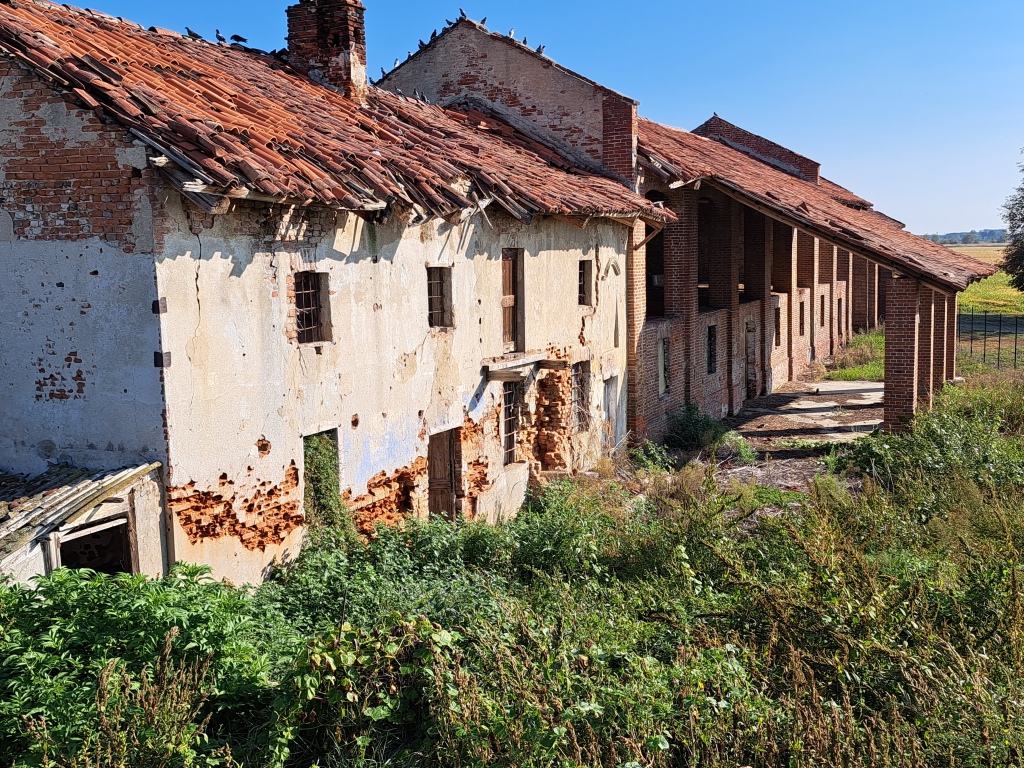

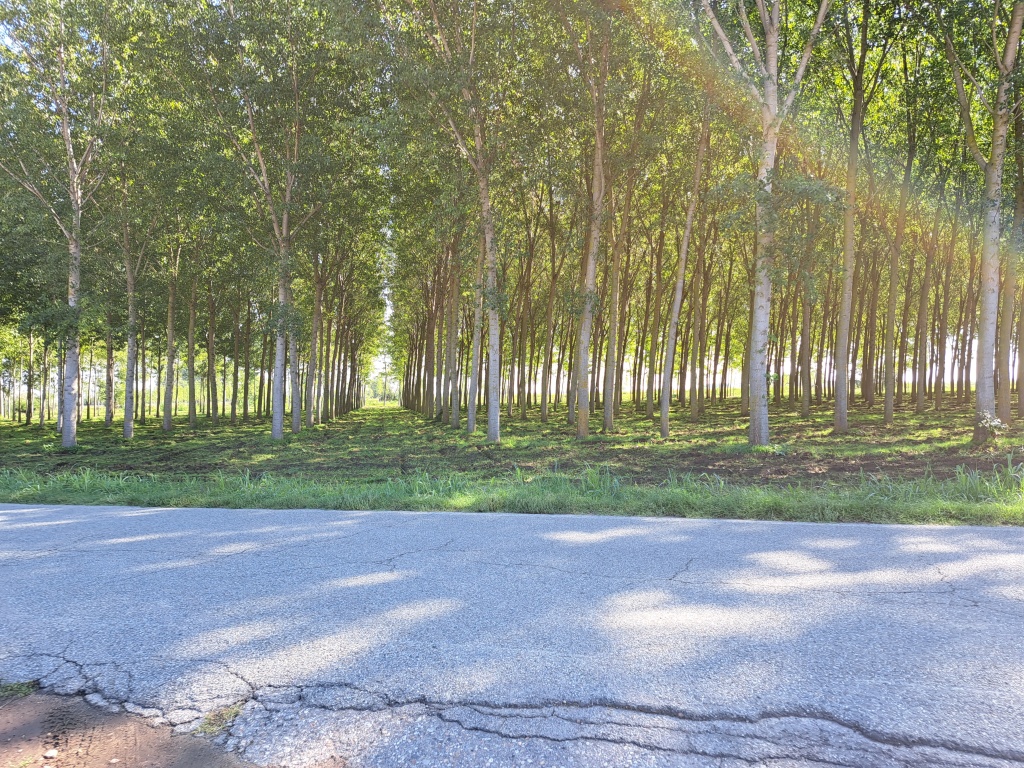

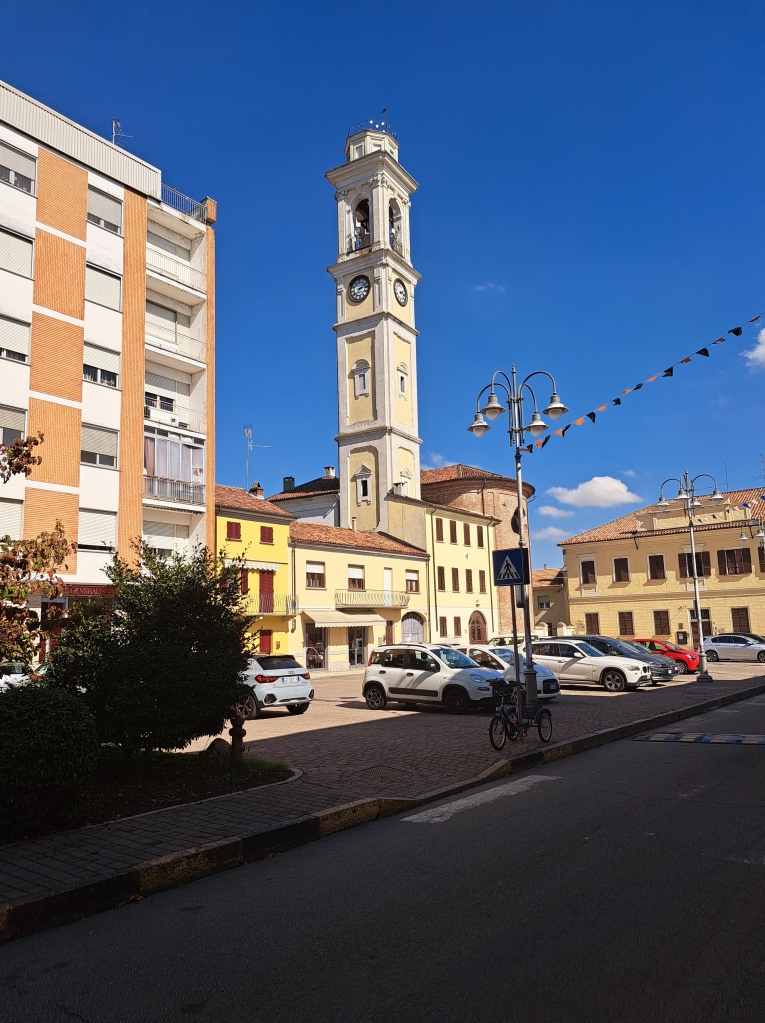






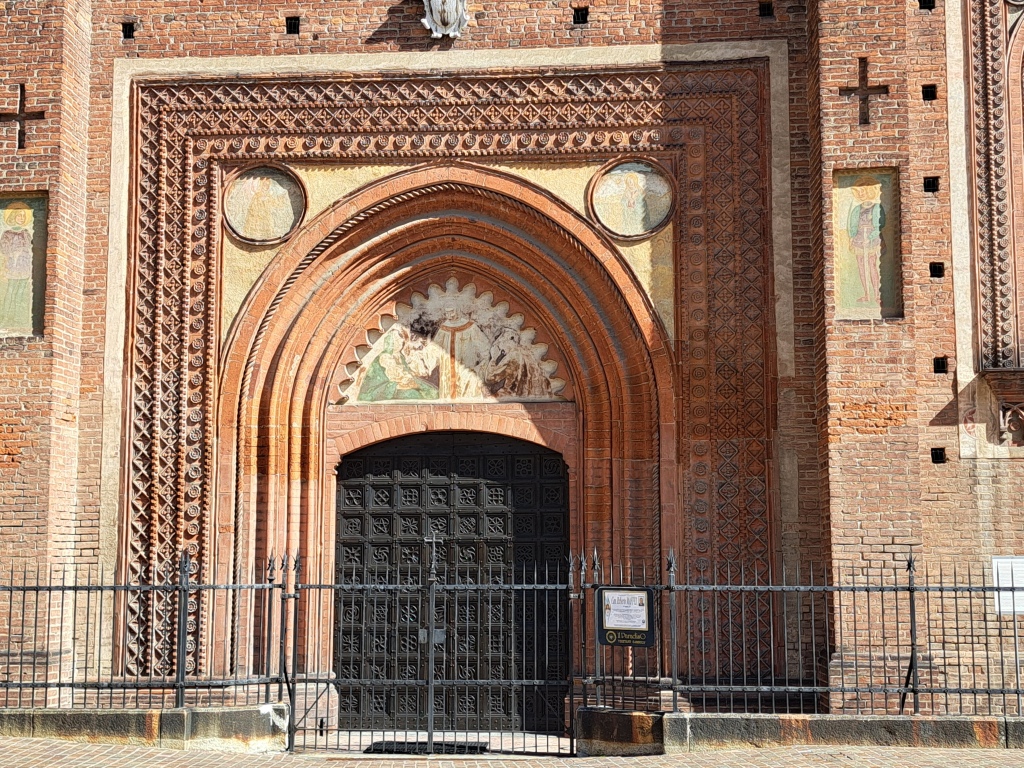

-
Landscape lessons`
It is the 21st September and we are in a small apartment in a place called Pont St Martin, which is a little town between Verres and Ivrea and we are heading out of the Aosta Valley and will soon be in Piedmont and heading to where the rice grows….. so soon (but not quite yet) we will not be climbing up and down steep paths surrounded by mountains and huge rocky outcrops with homes perched in impossible places amongst and above gravity defying terraces of vineyards.
By the way, we enjoyed lots of varieties of wine in Switzerland and have been loving the Aosta Valley ones, too. Almost all are mountain varieties with some really fine whites and fabulously deep reds and we have walked through the places where they grow these grapes, high on the side of mountains. The older style wines are almost all starting to fade away in a commercial sense (especially if you want it exported) and this is sad, because they are really good. The style of growing is similar to what we saw in Portugal with the vines growing up onto trellises that create tunnels of vines with the grapes hanging down, ready to pick at harvest time. These tunnels of vines allowed the locals here to grow other crops underneath so the rare commodity of land was effectively used by these marginal farmers. Growing them in narrow terraces that step steeply up the side of the hills made so much sense but, as with the Swiss wine makers and the ones along other parts of this valley, the cost of managing and harvesting becomes prohibitive when no machinery can reach the vines. So, people have been changing to other varieties of grapes that harvest easier with higher crop rates and are no longer able to grow other crops in tandem with the vines.
We have seen lots of the old style vines today and also a notice saying that local people are trying to keep the tradition alive. We hope that they continue to grow their vines this way and will happily support them any time we happen to be passing through here and can buy some of their produce… It is important to pursue traditions not just because they often have an intrinsic value in themselves, and can be a valuable way of linking today with the past and teaching people about that past. They can also be the source of plants (and livestock) with valuable genetic traits that we don’t even know we need to utilise yet. There is also a beauty in working and farming in traditional ways that need to be kept alive.
This also echoes a strong and constant theme that we have shared as we have walked through parts of England, France, Switzerland and now Italy.
Walking makes you intensely aware of how the land is being used and what it is being used for. We have seen farming on a massive scale with crops like little onions being grown and harvested across huge tracts of land and we have seen patchworks of small fields h lots of different crops flourishing. We have seen massive flocks or herds and many small holdings with few animals or with small flocks of unusual varieties of sheep or goats, and so on. Lots of approaches across hundreds of miles and through different types of landscape.
We have also stayed in all sorts of places from the ultra-modern to the ancient forms of homes and from tents to barns and castles. It has made us aware of the fragility of our homes with regard to climate change and helped us assess our responses to the issues the changes can present.
We have also walked in places where rivers and the wind used to be the sources of energy for the local people. Using wind to produce power is not a new idea but the value to us in making use of such a simple natural resource as wind disappeared until quite recently. Sadly, in Britain, if someone sees an old windmill they say how pretty it is and smile, but when they see a wind turbine they declaim it as ugly, an eye sore and dangerous to wild life… Sadder still is the official response which panders to this view. While I’m glad to see off-shore doing well (despite the Cameron Government’s withdrawal of support for the wind-powered generation industry) I still hope there will be room for on-shore production, too (along motorways and railway lines for example).
More pointed is the fact that so much of our industrial power started with water energy and that almost every river in Britain had several mills using that natural resource. We have walked past many hundreds of mills all over Britain and Europe that are pretty buildings but pretty useless as sources of energy.
It is my hope that rivers across the world will become major sources of renewable energy production and that our electrical power distribution systems will be improved and changed to allow for these sources to be both local and national sources of our energy supply. It is an area just waiting to be developed further.
From the Jura through Switzerland and into Italy, we have seen sometimes more than two hydroelectric power plants a day. I know we are in mountainous regions, but some of these plants are pretty recent and they all make me think of how proud I used to be as a Scottish lad claiming the value that Scotland added to the country through its hydroelectric power plants. But when was the last of these built and how much would new ones cost compared with just one nuclear power plant? I do believe that our natural resources have been place as second best to other, much more problematic sources/processes…. Of course I do
Which turns our thoughts to the current UK Government’s proposed solutions to the energy crisis, which include North Sea Oil and gas, nuclear power and fracking…. The first two are short term, limited and retrograde at best. The third is old technology that is, at best, dodgy given the providers and is very expensive even before you add in the cost of trying to decommission and deal with the waste it produces….
As for fracking, we walked with an expert in the oil industry when we were walking on the Camino Inglese in Spain and got a very detailed explanation as to why this life long advocate for oil had been deeply and profoundly shocked by the fracking industry. His assessment was that it did fundamental and irreparable damage to the earth, pumping highly toxic chemicals into the earth without regard to the consequences and the very, very long term effects. And, after causing so many serious and catastrophic problems in areas often well populated, the perpetrators leave and are never held to account for the irreparable blight they have inflicted on the deep structure of the strata beneath our feet (permanently broken) the aquafers and other important systems below ground (poisoned and with no means to limit future damage beyond the area) and the problems facing the land and the people above.
If that sounds dramatic, it is a faint shadow of what this man’s assessment was, and he, as I have said, has spent the whole of his working life in the oil industry and knows its shortcomings in great detail and will defend it, but not fracking…
And, alongside all of the medium and long term solutions to producing energy, we know that simply investing in making our homes and work places highly energy efficient would reduce our energy usage (and people’s bills) hugely. It would also be great if we could legislate to ensure that no one builds anything that is not designed to the highest energy efficiency standards (something called future proofing…). But none of this seems to be anywhere on the horizon in Britain… I worry about what we will return to and will have to face in the future.
So, as we walk through yet more stunning landscapes, in locations where both humans and their close ancestors lived and enjoyed the fruits of the lands, we continue to see things on a smaller, more intimate scale but still feel that the vulnerability as well as the riches of the places we are in can offer so much more without being abused and bled dry.
And we reflect on the opportunities available to anyone who has the power to do something about it now. We hope and pray that sometime soon someone will discover the idea that investing in the future might actually be a wise and prudent thing to do. It won’t happen any other way and, if you look around you, you will find the serious major powers all doing just that. I pray for clear sightedness, vision and responsibility in our country, too.
And tomorrow, we will hope that it doesn’t rain on us (not in our control), that the paths and the hills are kind to us (not in our control) and that we get to the next place safely and in time to get ourselves settled, sorted and rested enough so we can continue on our way, the next day.
……
Guess what? We are now in Ivrea, the Home of Olivetti typewriters. I had a great portable one given to me by The Observer when I worked there. It was stolen from a vintage Alpha Romeo Sports car parked in the Majestic Hotel in Brighton when I was speaking at a conference there in the early 80s. I ended up refusing the rubbish replacement and got one of the early Apple computers instead (boosted from 48 to 64 K ram….).
Anyway, we had a pretty strenuous day today but we were very lucky that it did not rain and gradually became rather sunny and warm. Some of the paths we took ended up being serious almost vertical scrambles but the views and the route was stunning, which was a great compensation for the effort.
The paths involved walking up and through both the remnants of old galleried vineyards set in terraces high above the valley floor but also included walking through many working vineyards and the harvest is just starting so we saw lots of activity as we went on our way (mainly just moving crates and preparing the vineyards for the pickers). I have included pictures from yesterday and today to show you how amazing this landscape is. At times it felt like we were walking through a series of abandoned Roman or Greek ruins that had been repurposed by winemakers, so colonnades of pillars now supporting vines hanging from trestles. It was also, at times, like we were walking in an alien landscape, but so beautiful…
The other significant experience was starting the walk in the midst of mountains and ending it with almost no hills in view except the small one that has the amazing castle on its brow next to the cathedral…
So, tomorrow we head towards the rice fields and see what the next region of Italy has to offer us….
The photos start at the top of the Pass and work their way to here… too many to choose from so just a quick flick…


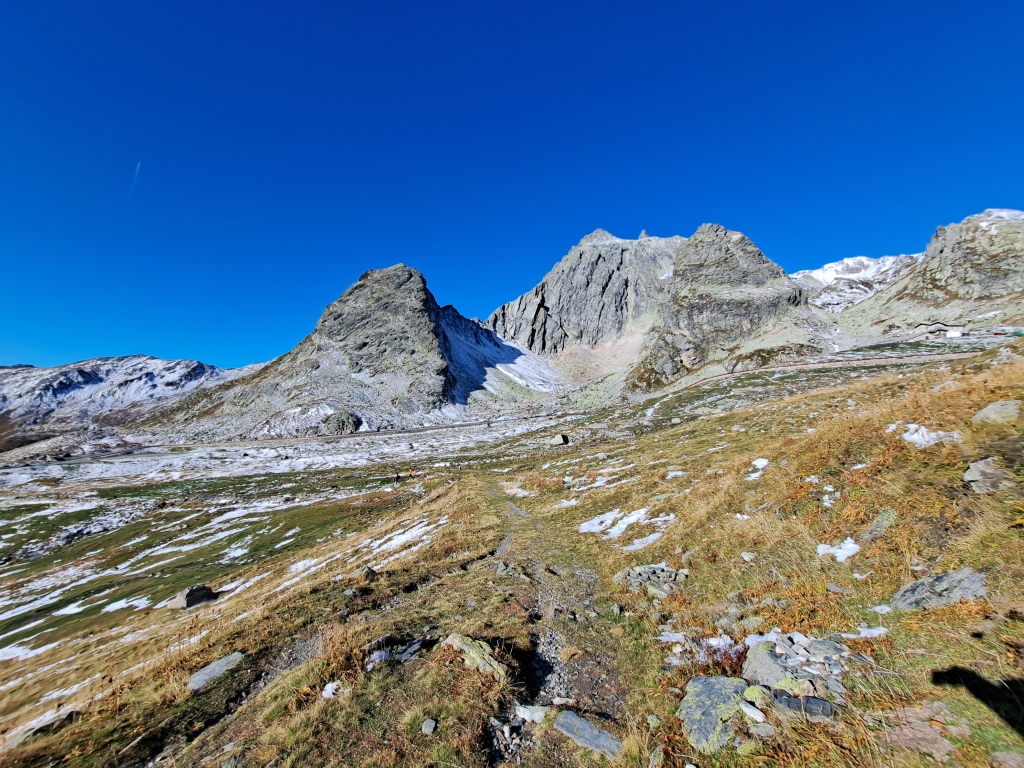




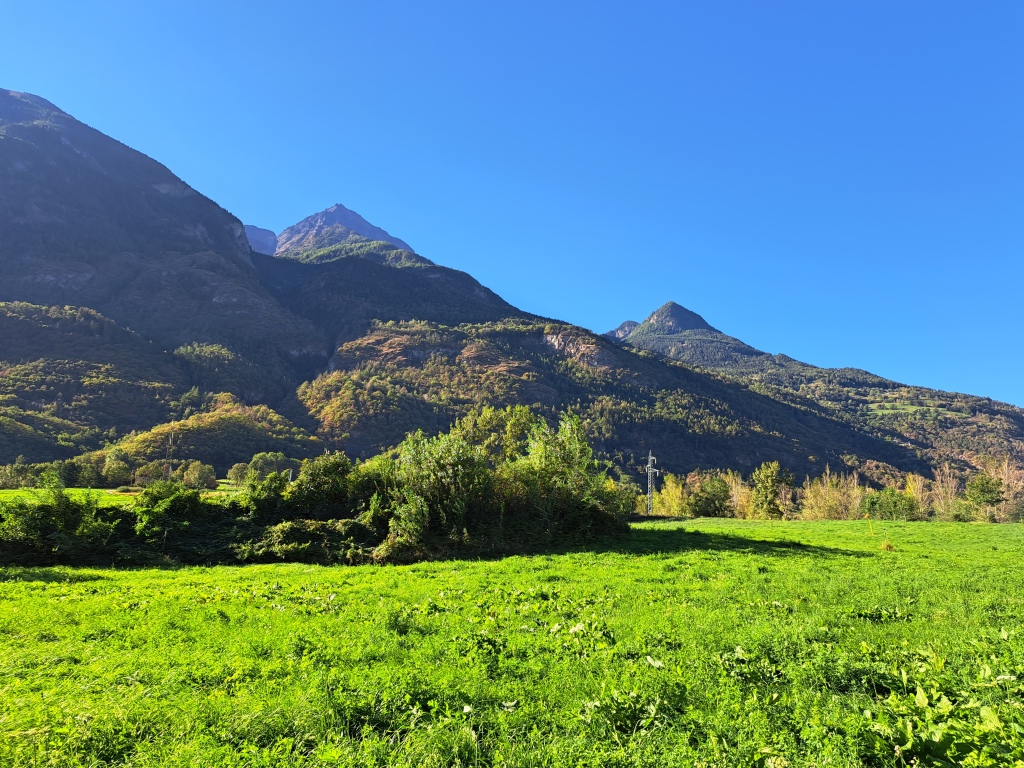


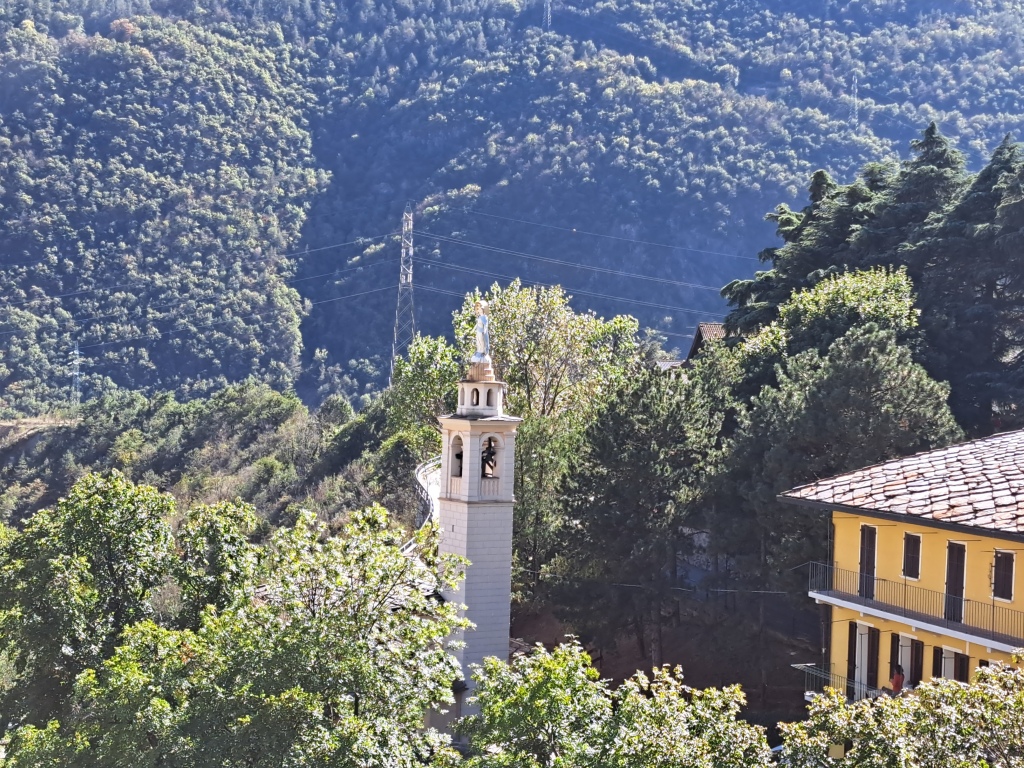



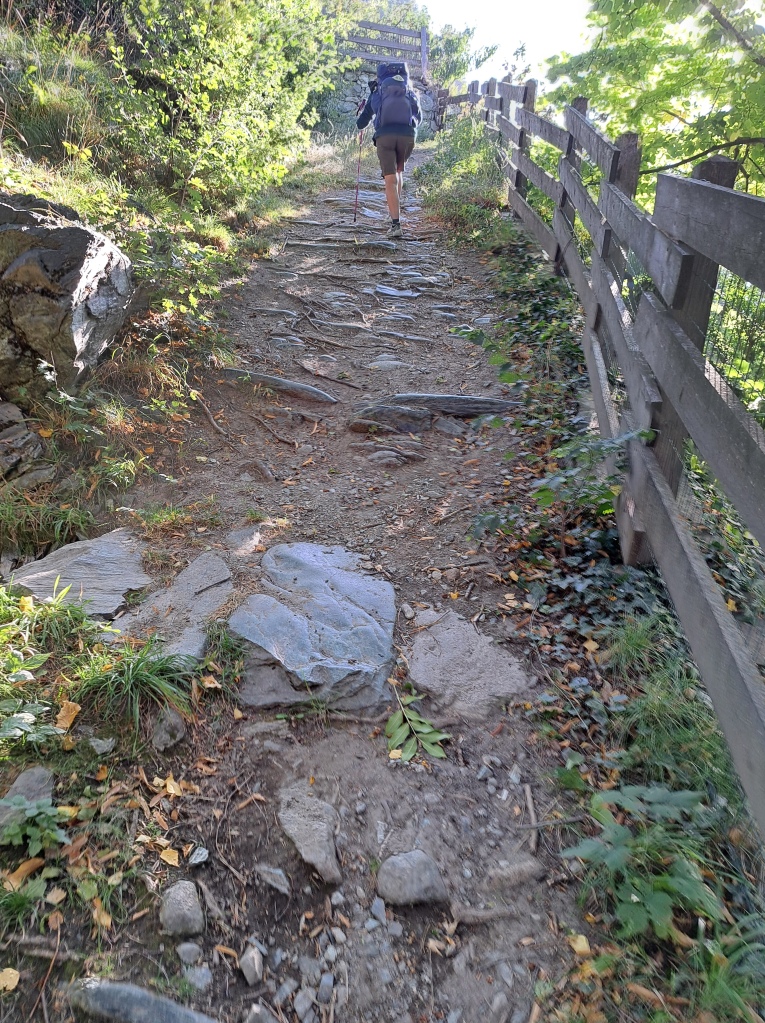





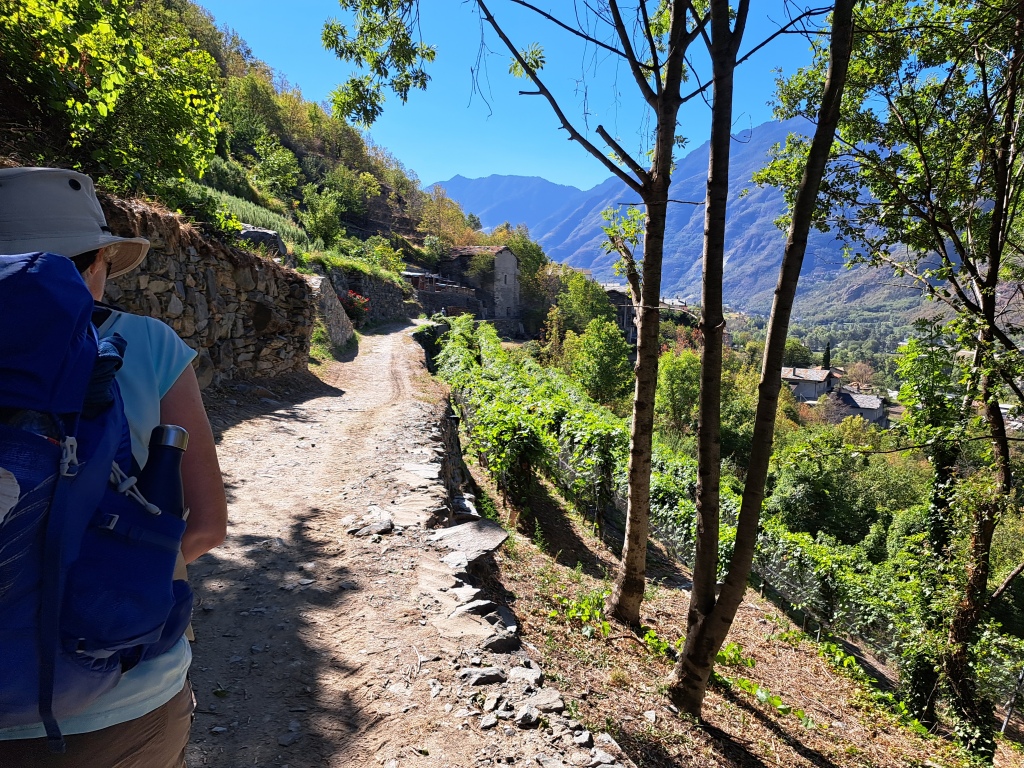

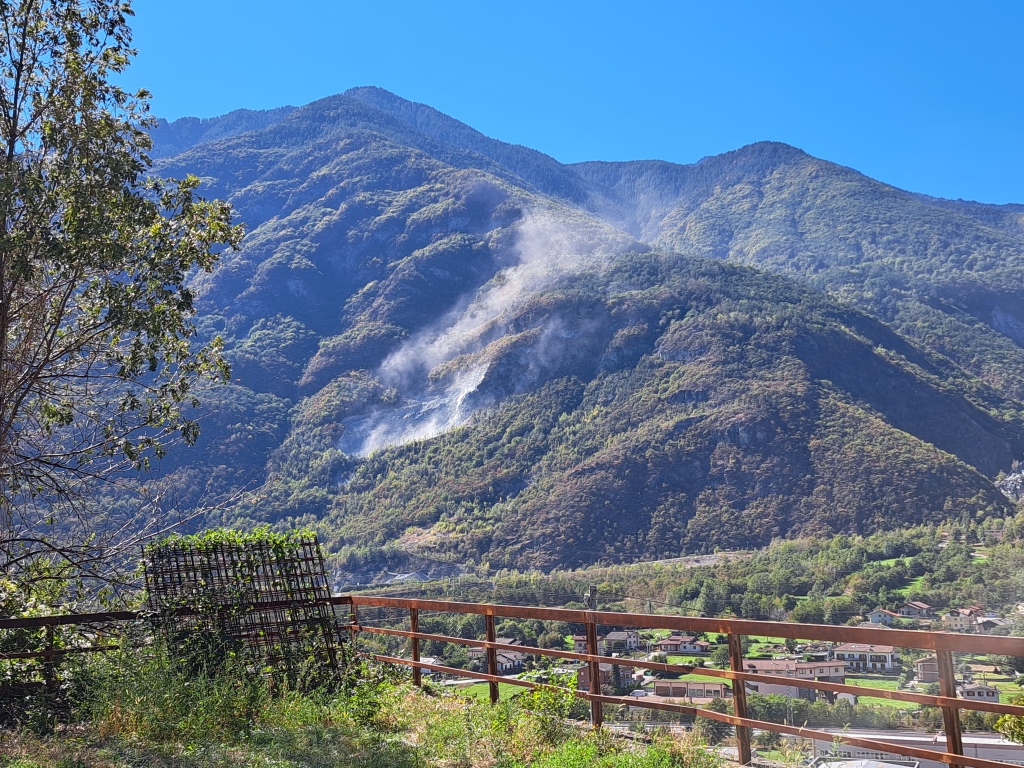





















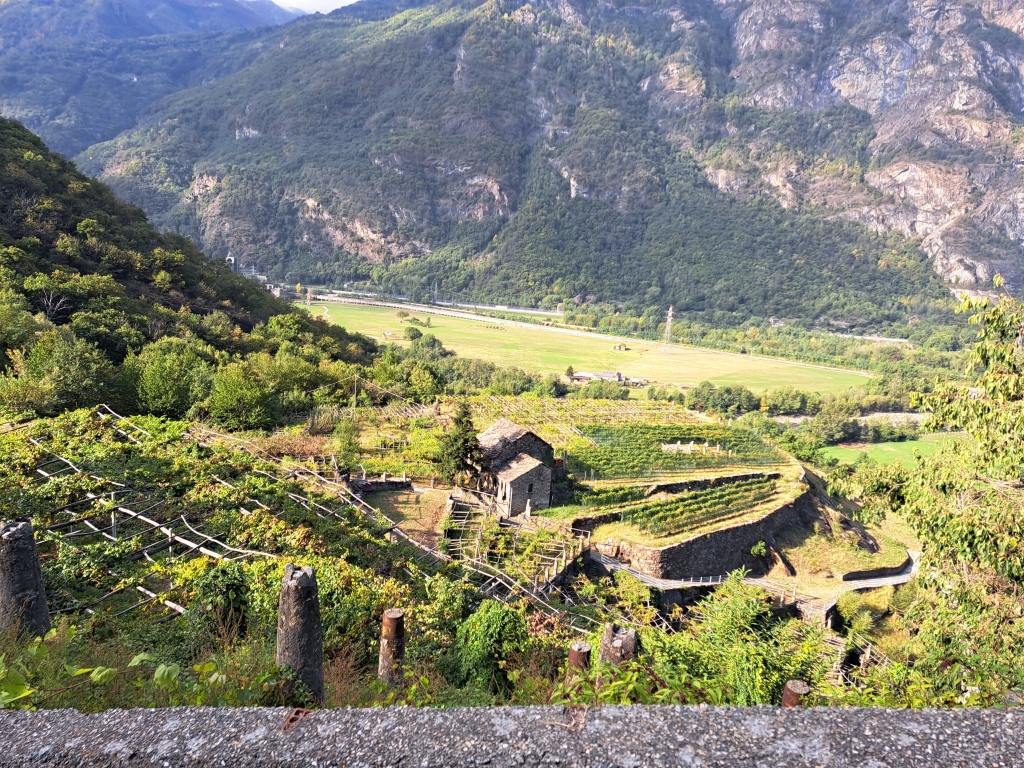
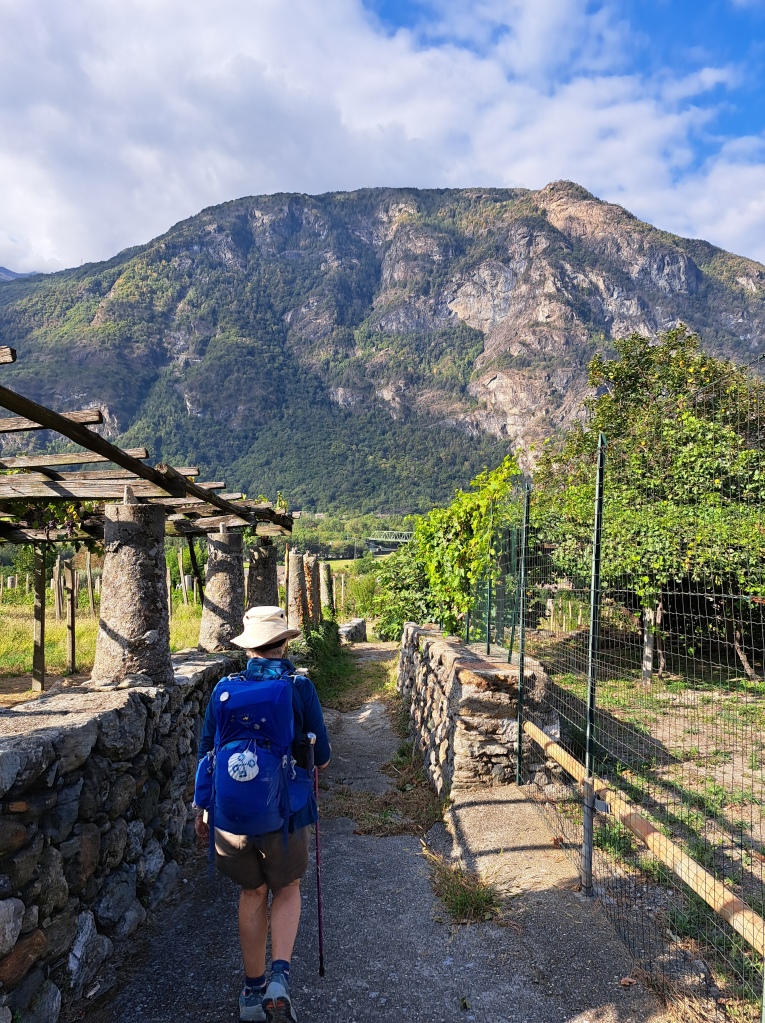






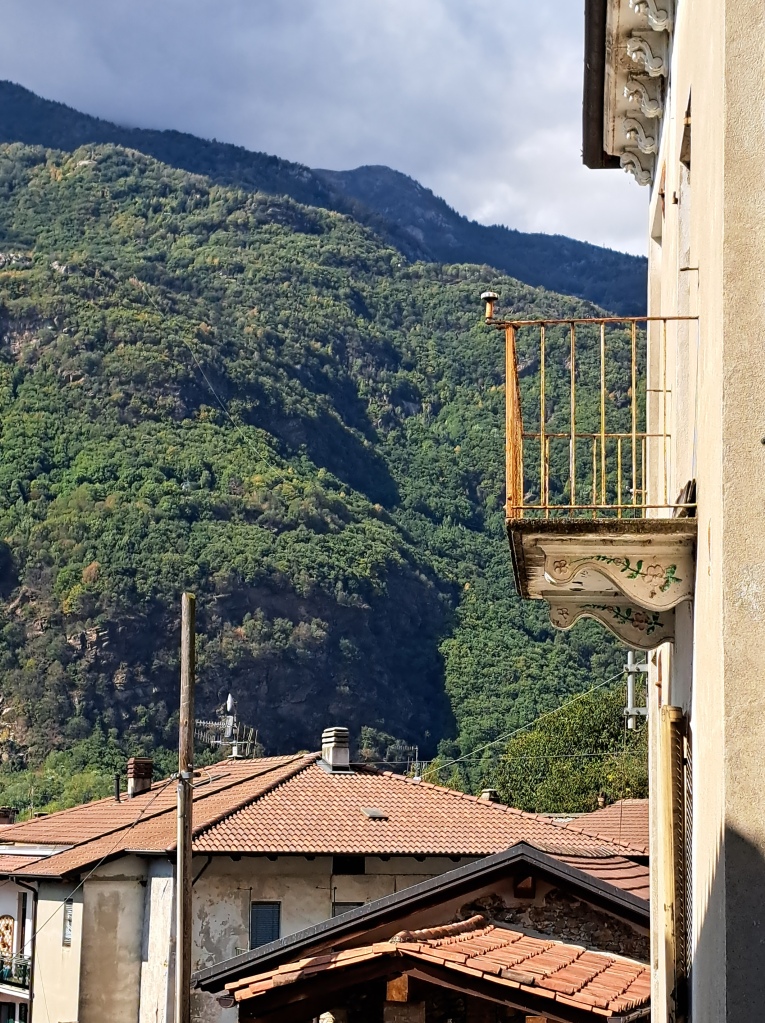



-
An unexpected gift on the way to the pass…
The Great St Bernard’s Pass was one of our objectives when we started out on our journey to Rome. The pass is pretty high at 2,469 m (8,100 ft) and will be the highest elevation we have ever walked up to – and yes, we did originally start at sea level!! But it was the timing that had to be right. The period when the Pass is reliably free of snow is mainly August and September according to all the guides, so we had to factor that into our calculations.
It is also a challenging route for anyone carrying a heavy backpack, and we are getting older. We would have rather done this a few years ago but various demands and events in our lives, plus the dreaded Covid, all got in the way. So we grabbed the chance when we could and here we are.
We walked up to Bourg St Pierre yesterday (16th Sept) and had a cosy hotel room with a good view over the village and on to the mountains. This morning we got up and were surprised to see the mountains with a good dusting of snow on them and flurries of the stuff blowing through the air at our bleary eyes.
So we headed off with a little anxiety alongside our excitement as we had read that a few parts of the walk could be difficult, especially when wet or icy.
Well, it was wet, it was often snow covered and it was definitely icy, but it was also fabulous. What a gift! A landscape dressed in snow was not what we had expected, even when we saw on the forecast that a bit of sleet or snow might be in the offing.
What I had not anticipated was the cold. The wind was fairly constant in the background and, from time to time it was quite strong. It was also freezing, and I had no gloves (something I had intended to add to my bag in London but had left on the side… ). So, it was icy for my fingers at times but the walk was sublime.
Much of it was a lot easier than we had anticipated with rough roads and tracks, and other bits were tough, very steep and covered with snow and ice, or narrow and slippery mud, and of course some of the paths were really streams. But this was pretty much what you expect on any mountainside, anywhere and brought to mind times in places like the West Highland Way, Mull and Ben Nevis. But this was much higher than anywhere in the UK and the beautiful snow was ankle deep in places and hid holes and rocks superbly. The ice was thicker and more prevalent as we climbed higher and the wind was often, but not always at our backs. But it was wonderful to hear that fabulous creak that snow makes when you step on it. All things considered it was a wonderful walk.
One big difficulty we faced on this morning’s walk was that there was no where to stop. We were exposed pretty much the whole way and there were no places to sit or huddle either. So we went straight up with not much more than a series of short pauses and had a good meal on our arrival at the first place we came to at the top. In fact it was lovely as we were able to sit and share it with our fellow pilgrim Peter, from Sidney.
We have our bunk beds in the heavily wood panelled dorms and had a freezing stroll around and visit to the church (prayers, pictures and live organ music to accompany us) and the little museum was wonderful next to the church. Sitting in the very nice Salon writing this I can hear the wind whistle and moan in the background.
As for the pictures, the two at the start are to contrast yesterday afternoon and this morning. The Icon is from the church and the two figures from the museum are a fifteenth century Maddona and child and, the one of a woman is an early reliquary of St Perpetua (for Dominique). The big white building is where we are staying, a place that has looked after pilgrims and other travellers since the eleventh century.
The two pictures of cattle include one with two young bulls fighting in the background and a line of cows that filed off to the right to let us past on the path. Thank you all!
And so, here we are at the top and happy to share today’s pictures with you.
Tomorrow we will set off on our way down from the Pass to Aosta, which is a decent distance of 28.8 Kms and a total descent of 2,347 metres. We expect to be pretty knackered by the end of the day so we have booked into a hotel with a restaurant so we don’t have to wander around looking for a place to eat. The next day to Chatillon is going to be as far and as hard but once we have got that section and the one to Verrez the next day, things will get better for a while.
Farewell Switzerland and tomorrow we say hello to Italy xxx.

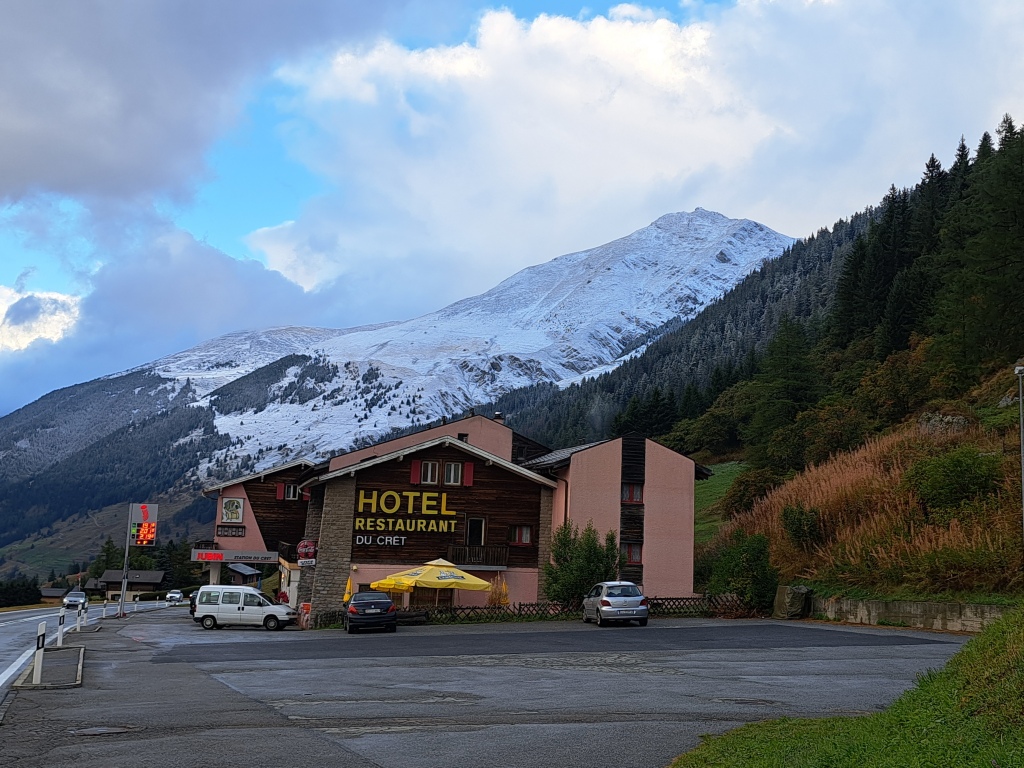

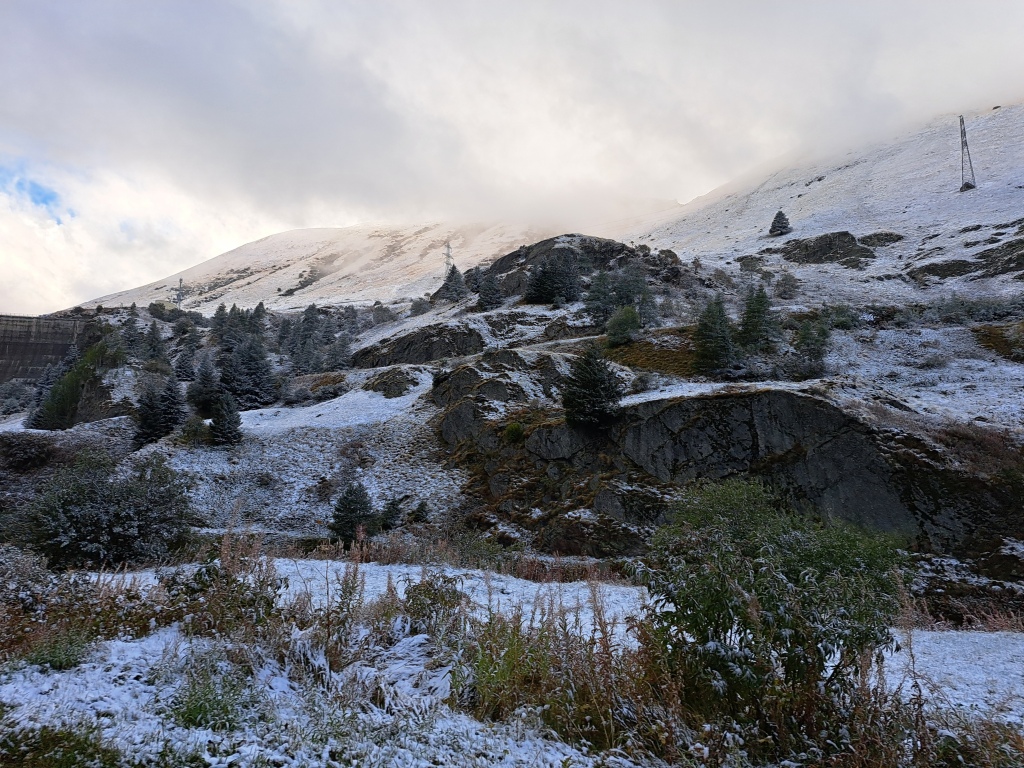









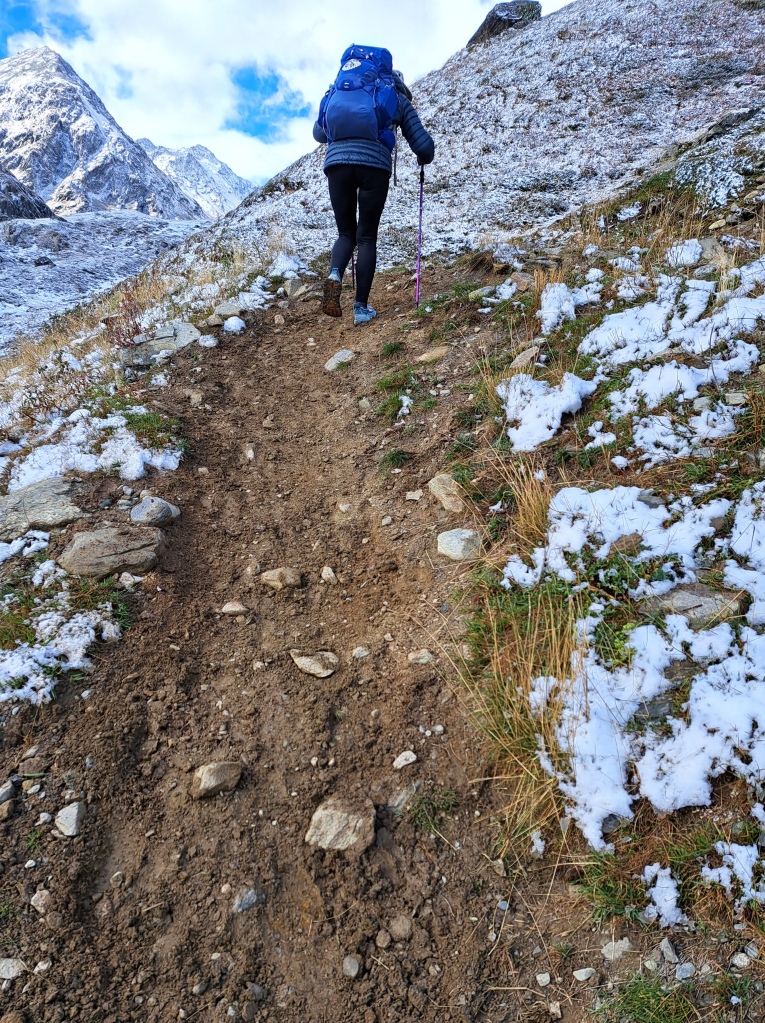














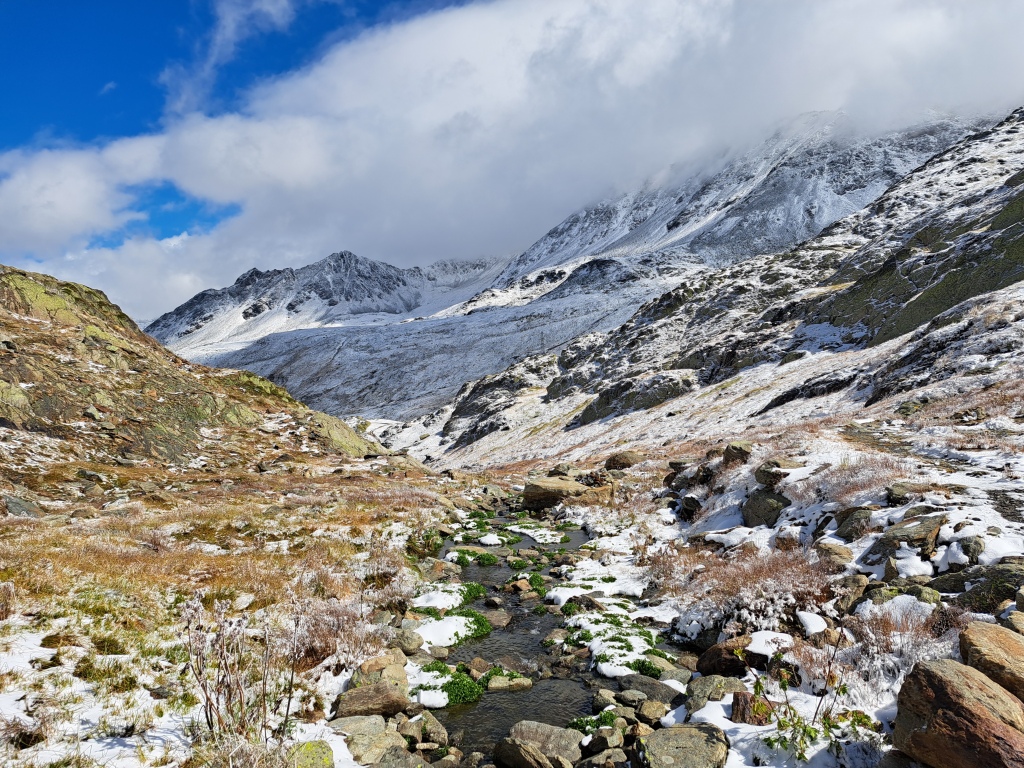




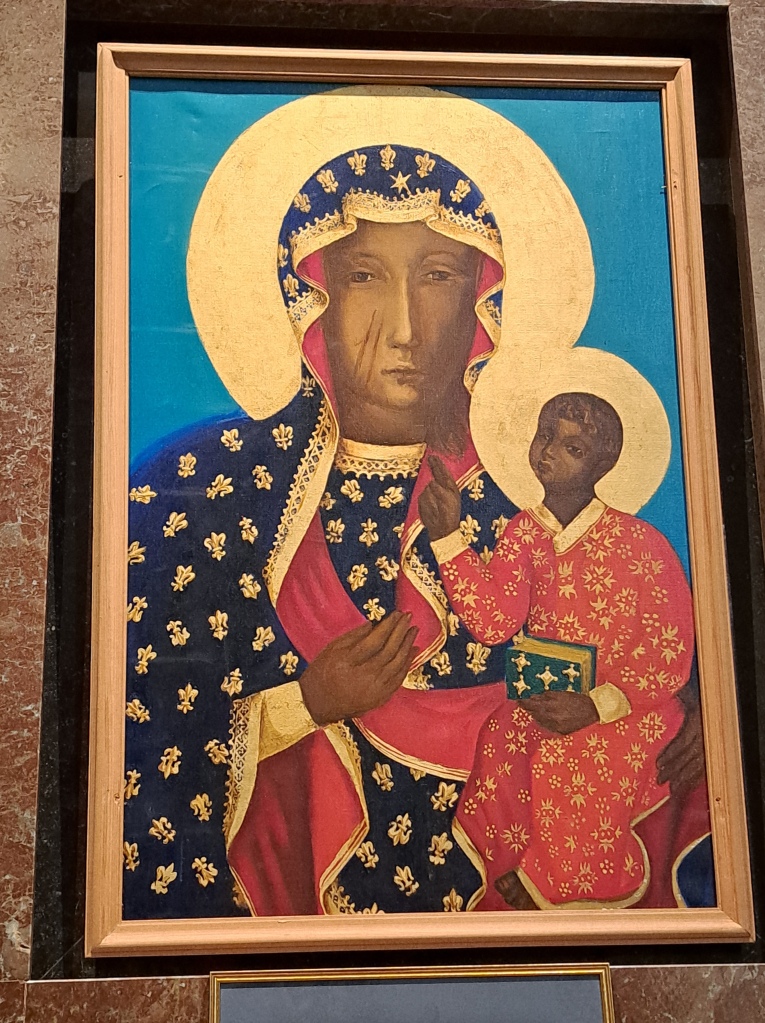




-
Taking steps to know Switzerland
Continuing a theme…. Switzerland is not France.
I started writing this in Vevey on Sunday the 11th September. From Vevey we have walked to Aigle, and are now in St Maurice….. correction, the Franciscan WiFi didn’t work so am posting this on arrival in Martigny….. (14th September)
In Switzerland there are shops open even on Sundays, and bars, and restaurants, too. In fact, most places, even quite small villages, often have shops and a bar, which is wonderful. They also have a lot more benches and other seats in public places (often with shade, and there are actually public loos all over the place, too!). This might not seem all that interesting but we have walked through North and Eastern France feeling glad when we found a bus shelter with a seat where we could sit and have our lunch out of the sun (or the rain) and there were about two places we walked through in a month where there were toilets (not including the rare occurrence of a bar, of course). Sorry about the pilgrim-centred obsessions…
There is a slight feel of temporal flashbacks with some places we enter, where it feels a bit like the nineteen seventies is still lurking in the woodwork, but in a nice way, and the people in bars, restaurants and some shops have large leather bags which contain lots of money. Yes, they still handle the stuff and, as Swiss Francs are still using a lot more coins than other currencies (as well as small change they have one, two and five Franc coins), the bags are full of silver…. It is quite strange and it was not until Alison mentioned that they seem to have not been affected by Covid in the same way as the rest of us that I realised why it seemed so strange.
For the last couple of years a huge number of the French boulangeries have little cash machines in their shops so, if you want to pay by cash the person serving you types in the price, you feed your cash into the machine and the change rolls out of the bottom. “look, no hands!” and in the UK it is almost universal to use a card now, but the Swiss like handling their currency.
Other things strike you as you go. Yes, the trains and buses are all well sorted and run as frequently on Sundays pretty much as they do on Tuesdays, there are differences in the food and the streets have different styles of architecture, etc. too. But while seeming to drive much faster here, Swiss drivers also always stop for you at the many (yellow) zebra crossings. Things are expensive here (of course) so, in restaurants they have 50cl bottles of wine as 75cl bottles are a bit too pricy for general dining purposes….
It feels like a very civil as well as civilised country.
We were in our hotel late yesterday afternoon (Saturday) and I heard a couple of short shouts so I looked out the window. Down below on the street I noticed two motorcycle police and a couple of police vans stopping traffic. Along a side street I saw a few police approaching on foot.
Very rapidly, the police were everywhere and the streets were full of waiting cars and buses. But nothing was happening. Then, at the crossroad the lights changed and the protesters walked across and along the road below, carefully monitored by police. At the back of the protesters I could see what looked like one of the organisers talking with a police officer as they went by. There must have been almost three dozen people in the group.
Normal service resumed soon after.
Well, another difference with other countries is that Switzerland has regular polls on different subjects as part of their political management of the country. So, as we were walking through the countryside we could see posters telling people to vote “No” with regard to the proposal about animal husbandry – they don’t understand, was the general view there. In the city it was mainly the other way round, saying they should stop farming animals intensively – animal welfare is more important, was the general theme. Other votes were due, too, on more obscure Swiss things….
The other thing that is noticeable here is the very multi-ethnic feel of the place which makes it a lot nicer to be in, somehow. It is not a monocultural place, which, I confess, must have been one of my assumptions because I have been surprised by it.
The other thing, which is obviously a function of its small size, is that we went from a very rural part of France to a very rural part of Switzerland but, whereas the French villages and towns were remote and really did feel like they were not part of and very distant from the centre of power in their country (we heard that a lot from people we spoke to), their rural neighbours in Switzerland clearly had a completely different experience. They may have been rural and did have differences with their urban counterparts, but they acted as if, and actually were also close to the centre and just as involved and connected as their city counterparts.
Now, that sounds pretty obvious when you write it out, but it shows something of not just the power of geography in people’s lives, it speaks to a need for a different way of organising things for people in larger countries. It really argues the case for subsidiarity. And with modern communications, no one is really far from the centre unless their lines of communication have been blocked… communication and connectivity/involvement should not be down to geography/distance.
So, this country is different and we are still learning as we go.
It is also a stunningly beautiful place with pretty good cities (beware, Lausanne is a city of several layers with the lake side areas and then a few very steep hills housing the rest of it. Our hotel was in the Old Centre (well, the medieval city, the lakeside is where the Roman city was established but hills are easier to defend) so we walked from the lake shore for a couple of kilometres mainly up very steep roads, then crossed an amazing bridge from one hill to the next to get to our hotel. Of course, google maps didn’t give us a clue about this. We should have done more research…. Especially since, as it is a Swiss city, Lausanne has an amazing public transport network that includes buses, electric trolley buses and a Metro system that includes what is basically a partially underground funicular railway system…. And the hotel gave us free tickets for the system, too, so we took the Metro back down the hill in the morning.
A short confession now follows. On our arrival at the bottom of the metro we emerged onto streets that had all been cordoned off. There was some sort of race about to commence and we were on the wrong side of the road. We walked up and down trying to find out what to do, I had seen a man slip across the road using two parts of the barriers that were not properly fixed, so I looked around, couldn’t find any other solution, so I ushered Alison through the barrier, trotted across the road, found the other loose one and we went through.
As I was reinstating the barrier a young man in a uniform and fluorescent tabard shouted at us and told us off. There were official places to cross, we should have done the proper thing. We were acting unlawfully. We apologised, told him he was the first person we had seen of any sort of authority and wouldn’t do it again! We had been very bad people – and on a Sunday, too.
Turns out it was a triathlon race and no one was expected along that road for quite a long time. But that was not the point, was it?
So we headed for the lakeside path and began to enjoy one of the most entrancing day’s walks we have had in a long time.
The mist cloaking the mountains on the other side of the lake were dissolving as we walked East towards the sun. This felt very much like we were walking along the Mediterranean coast but with only a gentle lapping of water on the shore. The houses, bars, restaurants, boat yards and marinas, bathing beaches and gardens all felt and looked like familiar parts of the South of France or Ligurian Coast but with the mountains on the south of the lake emerging from the haze. Small towns glinted from their narrow perches at the bottom of the mountains and boats slid gently across the almost still water. The elegant ferry cruised out and passed us creating a bow wave that produced something like real waves splashing against the stones on the shore.
Then, as the afternoon sun began to really dig in to our skin, we left the shore and climbed short but very steep paths into the main area of vineyards of this area. Another stunningly beautiful place to walk, with the lake far below and the very steep slopes tightly banked with rows and rows of vines creaking with huge bunches of golden or black grapes. Little villages dotted the hillside and the railway line, down closer to the shore added flashes of colour as different types of trains and carriages quickly slid past. The grape harvest was just beginning and we could see people far below doing the work while, up where we were, there were workers driving noisy little tractors along the paths shifting loads of plastic crates and setting up the series of monorails to carry little carriages up or down and along the terraces to collect the picked grapes. And, of course, the mountains were now sharply in focus, the sun catching every curve and crag and offering us an extra spectacle both across the lake and all the way down on both sides to the end where we were headed. At one point another steamer ferry hooted its horn and a passing train answered it with its own horn and we could hear people whooping and cheering on the boat far below. Then, with the sun at its zenith and our need to sit down and eat and drink reaching a vital point, too, we encountered a level area with some shade and benches and a young man in a wooden shack who was selling plastic glasses of cold white wine. So we stopped, drank some of the elixir and ate our sandwiches in the shade. It was glorious!
Vevey, our night stop, is a seaside resort on a lake…. It is where Charlie Chaplin lived the latter years of his life and they are very proud of it, here. They were amazed when we said we lived close to where he was born and brought up as a child, and that we had walked from there to here. The pilgrim stamp from the hostel we stayed in has Charlie featured on it!
The walk from Vevey to Aigle and on to St Maurice has been both varied and continues to be spectacular. We expect to be delighted with Switzerland for a few more days to come. We expect to reach the hostel at the top of the St Bernard’s Pass on the 17th (next Saturday) and then we descend into Italy for the next phase in our adventure.
Just one more thing I will add to the notes about the last couple of days.
Firstly, we discovered that the wine the Swiss produce is very nice and, when I get some decent internet connection I will research the grapes as well as the wine in a bit more detail. The two main grapes have been or companions on a number of sections of our walk, with rows and rows of big, juicy golden grapes and then large bunches of very dark, almost black grapes.
Of course, these are all being grown commercially and we have refrained from sampling any of these fruit – especially since the harvest has just started and we do not want to be even a minor source of problems – we keep our distance and admire (even when we are walking through the vineyards themselves).
But yesterday, in Aigle, we arrived at our night stop and our hosts were not around. We phoned them up and eventually were assured they would get to us in eight minutes (very precise) but we were still waiting twenty minutes later (less good and not the usual service here). We were staying in a little chalet that night and the whole of the grounds around the place were filled with vines. While waiting in the shade at the back of the garden I tried a golden grape. It was nice, very juicy and just a bit sweet. I then tried a black grape and it was awesome. Not only was the juice sweet but it had a distinct and excellent flavour, and even the skin was perfumed with the taste and aroma of the grape. It could have been the local variety of their pinot noir and certainly, the flavour echoed their red wine based on that grape.
I felt it prudent not to remark on their grape’s flavour as I suspected that they, too, are a small but active part of the wine production of the area but I vowed to check it out on line when I had a chance.
By the way, my telephone provider doesn’t have a deal with Switzerland and the cost of data on my phone is astronomical. I doubled my limit when I stopped getting any internet on my phone shortly after crossing the border and immediately got a message from my provider that I had less than 5 percent of my allowance left I should have switched off data roaming before upping my limit, you might say…. But I needed the internet to up the limit in the first place…. Anyway, I have switched off any vague hint of data roaming on my phone and rely on what ever (dodgy) wifi I can find…
The second note is to say that we arrived in St Maurice early as we wanted to visit the Abbey and its remains and it also made sense as we are staying in the foyer/hotel run by the Franciscans here. The site has been a place of Christian worship and place of pilgrimage since the fourth century and a monastery shortly thereafter. It is an amazing place to visit as an archaeological site, as well as an historical church site and it’s museum of ancient reliquaries and other works of art (from the 8th century onwards) is remarkable. As we had arrived early and was here well before the check in time, we just left our bags with the people in the hotel and went off to explore. It was not until we checked in that we discovered that, as guests, we got a free pass to the Abbey and a number of other local sites, too. So when you come and stay, get your pass first and save quite a bit of money in the process!
A few stats for those interested – we have been on the road now for 58 days. If you count the day spent going over to Calais on the boat, we have had three rest days (Laon and Besancon were the others) so we are a bit short on rests. We have covered around 1,281 kms from London to here and there is approximately 1,087 kms left to Rome. Of the 58 days, we have spent 49 days in mainland Europe so we have 41 days left before we have to leave. We expect to get to somewhere between Lucca and Siena before we turn around and that is without taking into account any other rest days we might have (as I said, we should be resting more) and it doesn’t account for any other issues we might face…. So, we still don’t know how far we will go yet and we will just keep going and see what the journey has to offer. So far, it has been amazing.
Finally, I have deliberately avoided to mention anything about events in the UK because my last post went out before I knew the news and we are here, not there.
I just wanted to end by saying that we continue to reflect and pray on all of the events in the UK (and elsewhere) and that our prayers are for peace in all of its forms. I understand that the recent events have offered many an opportunity to take part in expressing sadness and grief that extends back into the last few years as well as today. Times when people were denied the opportunity to express their grief publicly and so, I pray that this is a restorative and healing process for everyone, no matter what their situation is.
Since leaving home, we have spent a lot of time reflecting on loss; personal loss of loved ones, loss of close friends, shared loss through tragedies and so on. It is a journey, and, like our pilgrimage, our final destination is far from being clear. But what we can do is we can share the hope we constantly find as we move along the road.
All I have to do now is find a selection of photos from the uncompromisingly huge number of fabulous views we have enjoyed in the last few days. You will note that there looks to be two photos of large stone tablet carved with some knot-work designs, one at the start and one at the finish. They look similar because they are of a similar age. The first is from an abbey in Romanmotier about 15 Kms short of Lausanne and the other one is from St Maurice. Both are dated to the mid 8th century and are awesome. They are the front panels of ambos, so the place where the Old and New Testament was read from and, in both cases, they may have been seen and admired by Sigeric, the Archbishop whose record of his journeys to Rome from Canterbury are the inspiration for the route we are walking and, very likely other famous people too, including King Alfred the Great, who went to Rome twice …..















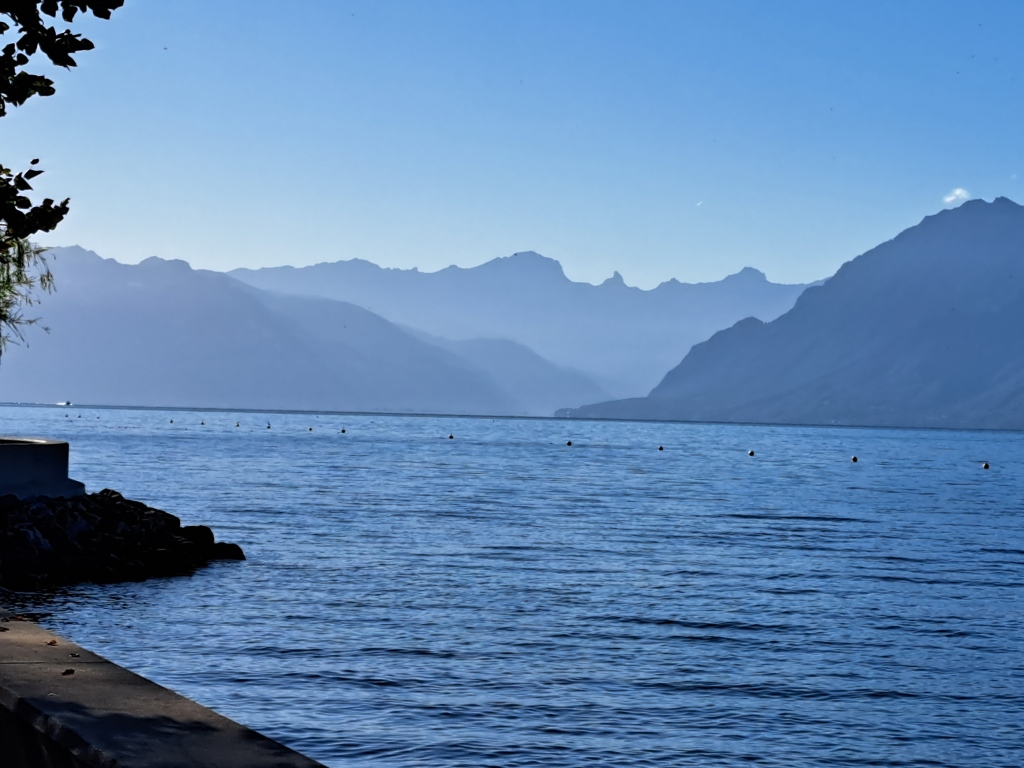





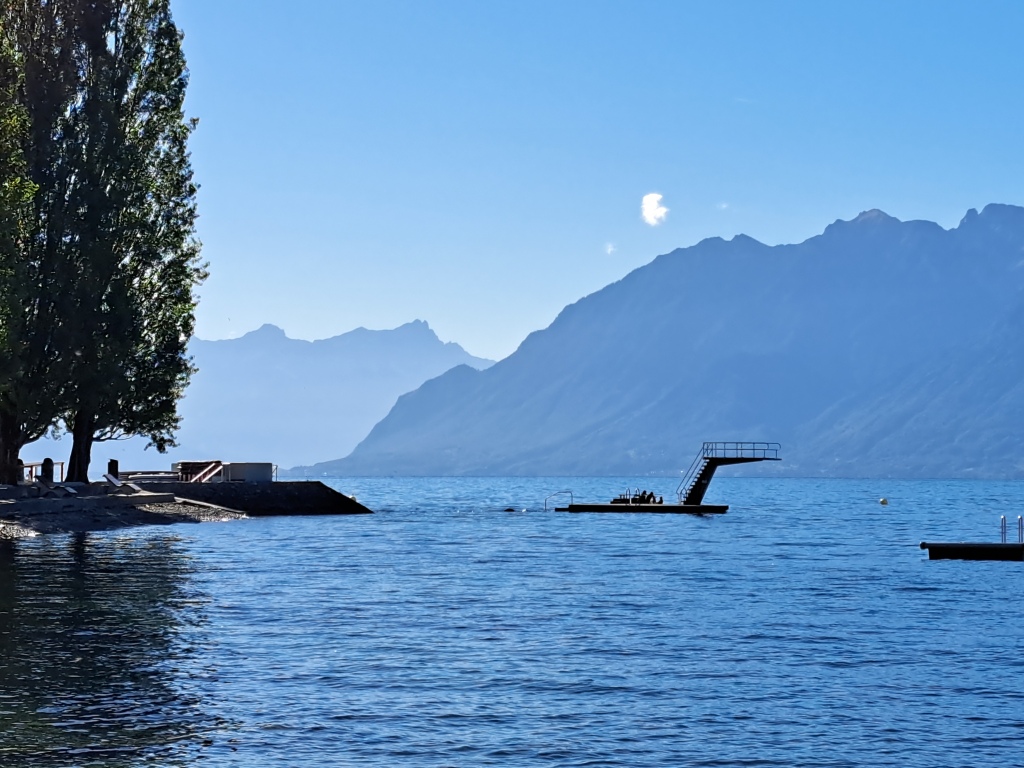

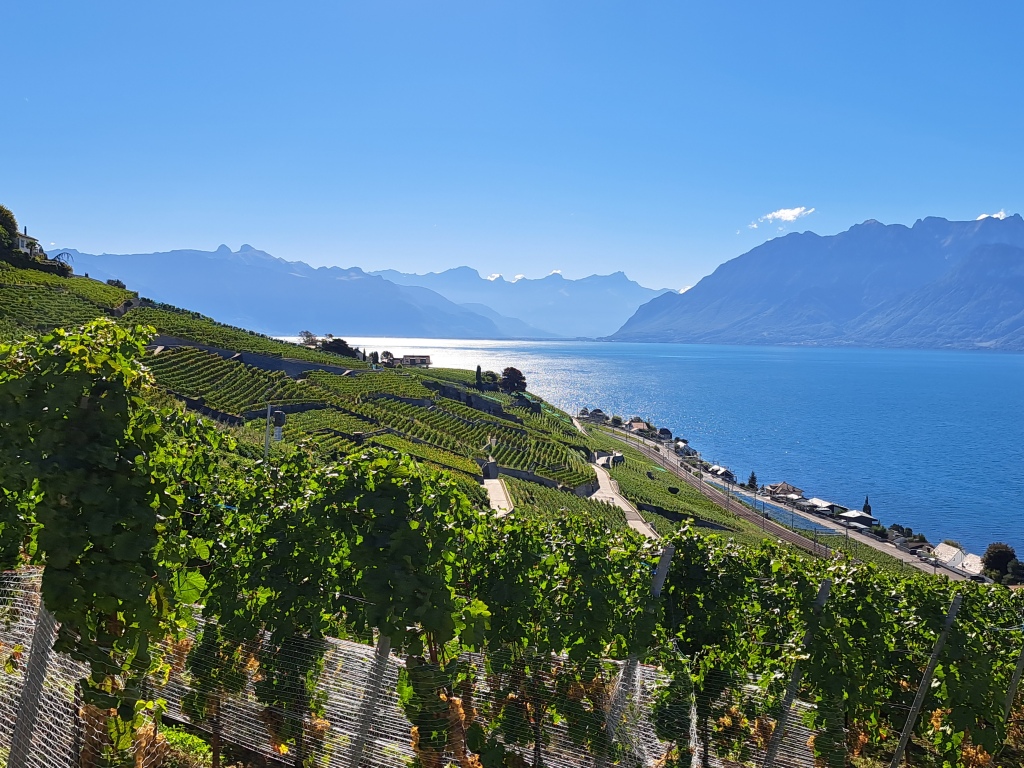


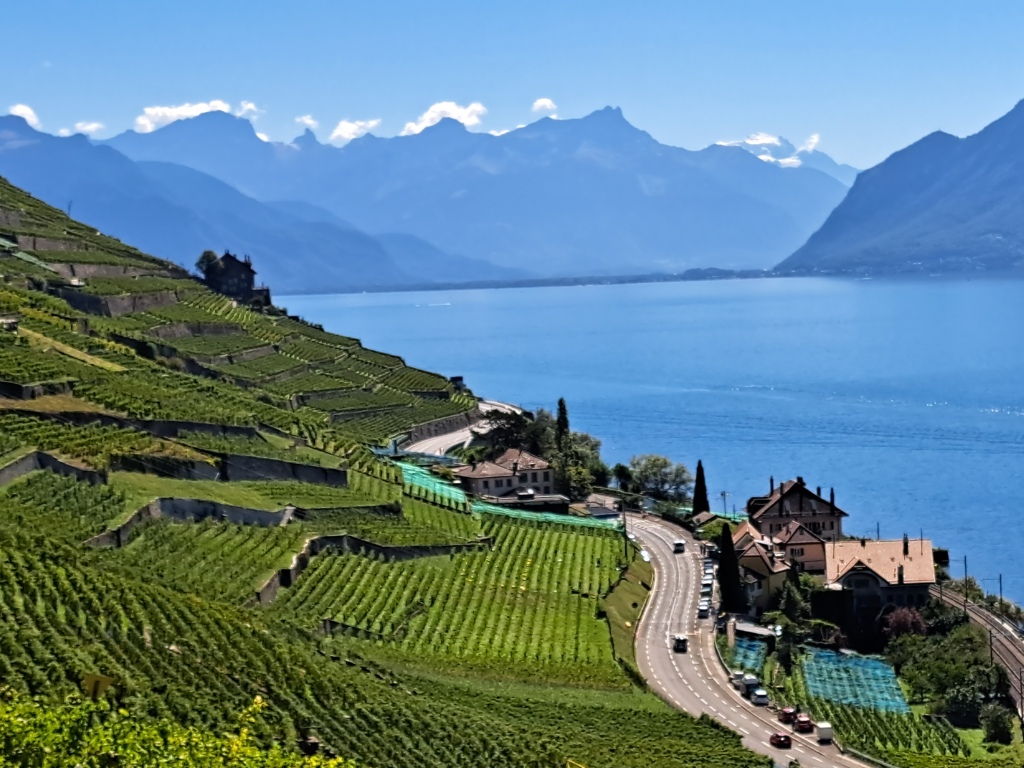



















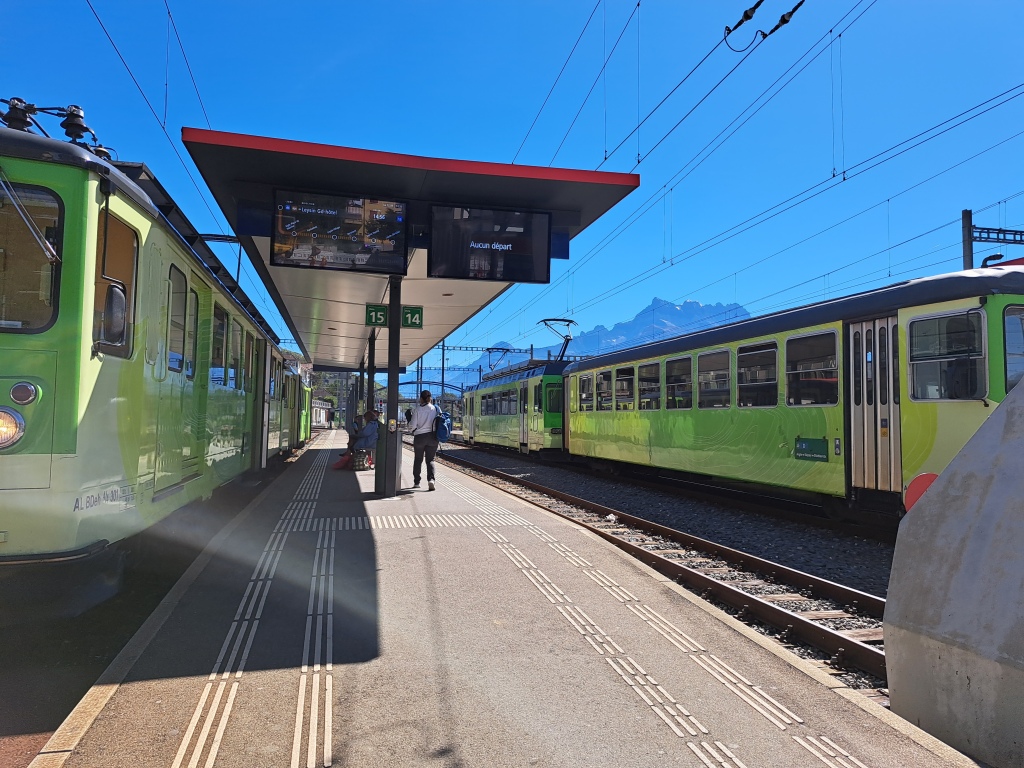
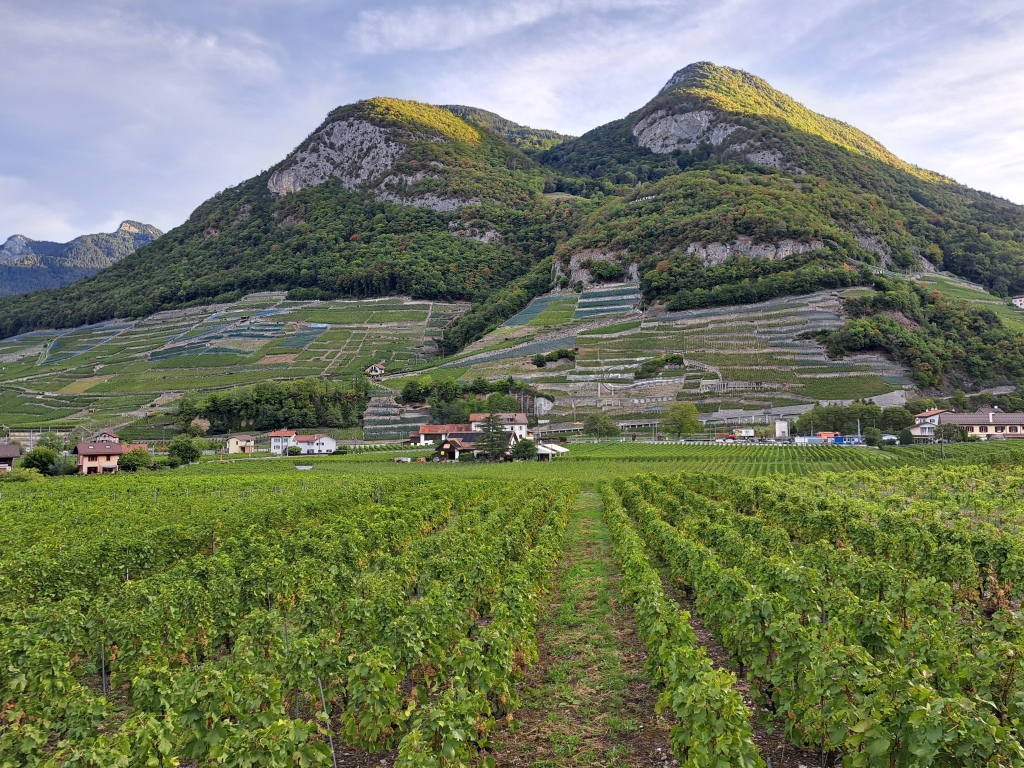




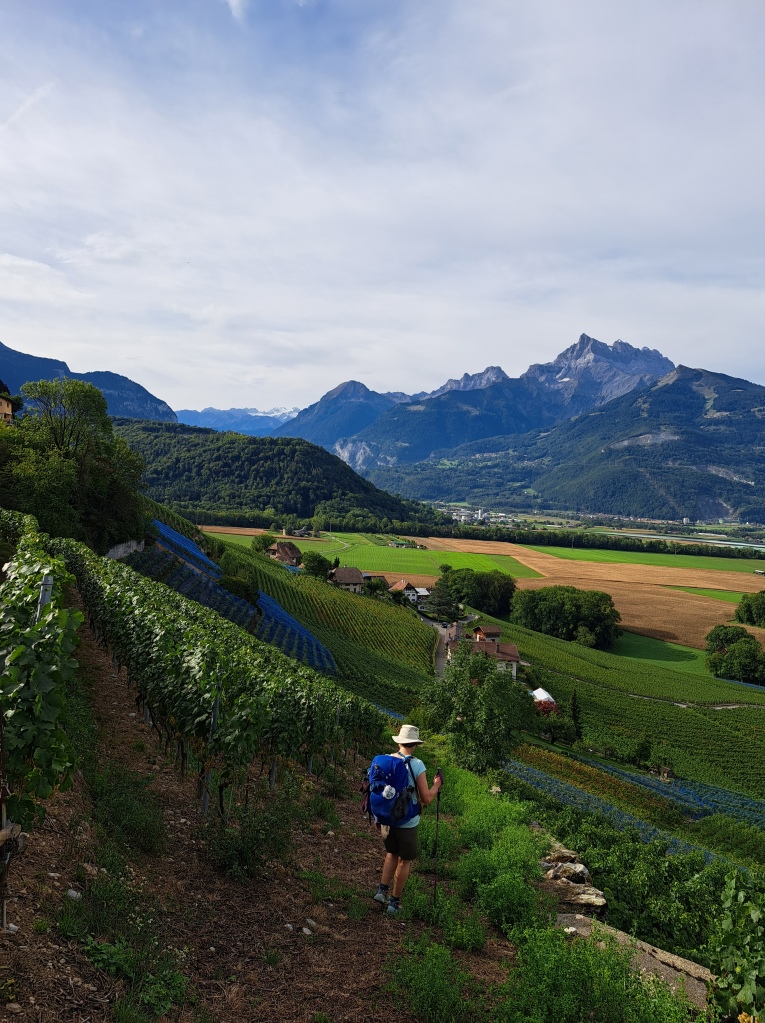
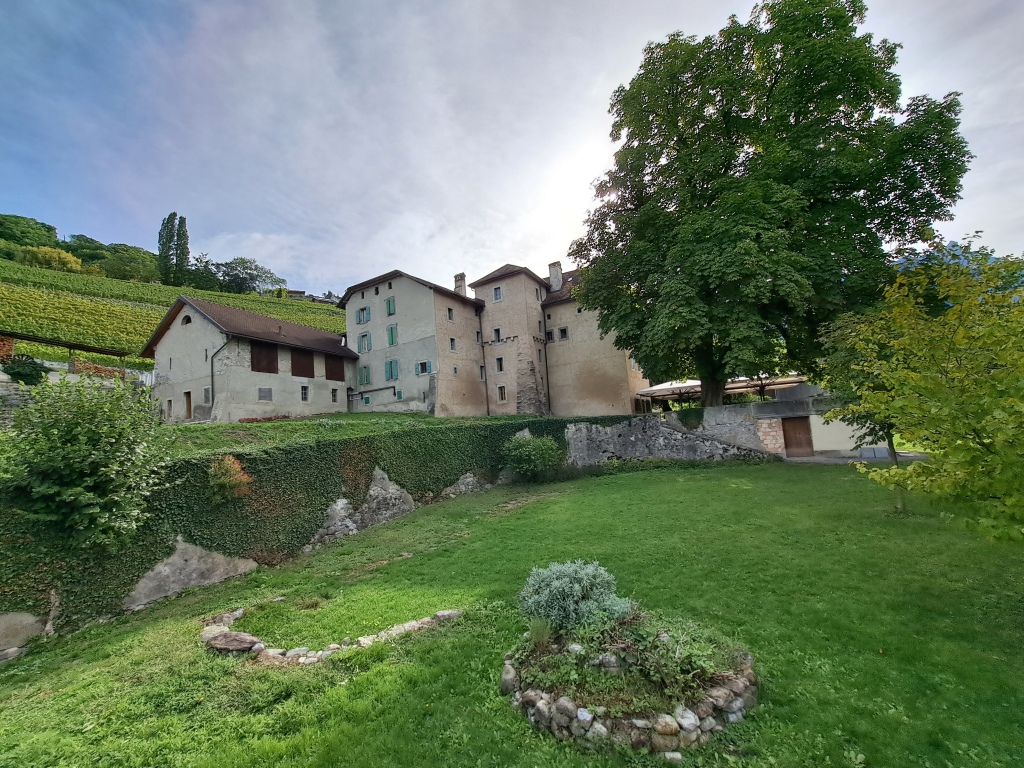
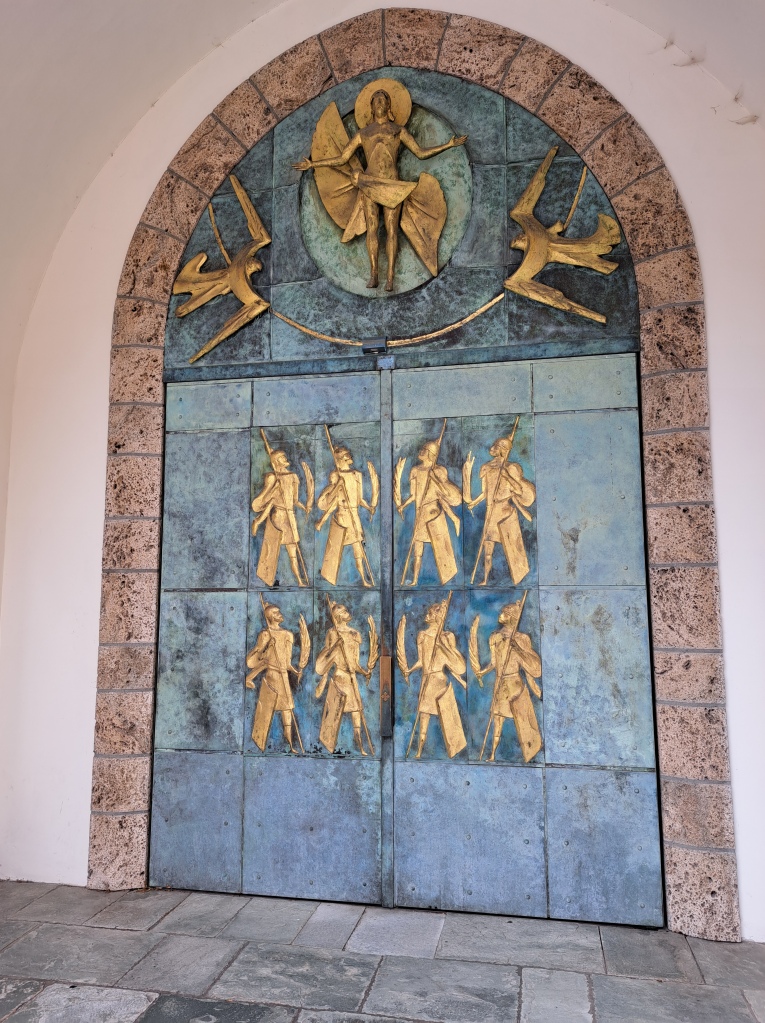




-
Marking out new territory
The last few days been spent in the Jura, which is a high region bordering France, Germany and Switzerland, but it is mainly in France. Franche-Comte, the main area we have been walking through since Besancon is one of those places that has a fairly unsettled history, being part of Burgundy and Spain as well as France and was only recently re-joined with Burgundy as part of a new larger region. It feels quite its own place and is a place of deep gorges and high ridges, forests and alpine style villages and farmsteads. We are now in a place where cows have bells, where the wine and beer are individual in style and the cheeses dominate. The home of not just Comte cheese, but of many different but familiar types of cheese that are extremely popular with cheese lovers in Britain.
Today, our last night in Franche-Comte and also in France had me roaming the streets of our night stop trying to find somewhere open that sold any type of food. We are in a small apartment in a skiing village just off our route (Metabief) and the restaurants are all closed apart from (possibly) the one related to the only open hotel here and, typically, there was no one in reception or anywhere in the hotel until 5.30 pm who would be able to tell us if the restaurant was open tonight, but the shops all closed pretty much at the same time (5.30). So, do I try to find a shop that would be able to sell us some food or wait until the place closes in order to find out if the restaurant is actually open tonight?
I didn’t wait. I went to the bakers and bought bread and went to the only other shop with food, which was…. A cheese shop.
Thankfully, it sold other things as well, so we will eat cheese (Alison) and pate (me) with bread. Both high quality ingredients to go with the superb local bread.
Ironically, the guy in front of me in the cheese shop was a familiar customer to the woman behind the counter. He got a quarter of a round of the major, old Comte which is a bloody large cheese, and a smaller, younger round of cheese, only about a foot and a half in diameter and a smaller soft cheese about nine inches in diameter. He struggled out with his heavy load without paying (it was his choice for the evening, on account) and was the chef from the hotel…
On my way in to the shop I took a photo you will see. In France we have seen rural communities being served by machines that deliver fresh bread to locals (either in the place du Mairie or next to the Boulangerie that is not always open. We have also seen pizza machines that cook and serve pizzas in places with no restaurants. But here, when the cheese shop is closed, you can still (thank the Lord) buy your favourite local cheeses from a similar vending machine.
The thing is. Tomorrow we leave France. It is such a strange feeling!
For about a week or so we will be in Switzerland and then we will enter Italy.
France has been a joy, but it has been very hard work this time. August is always hard in France but we seem to have walked through some of the hardest regions for this month with almost nothing open. Nothing! Hard to find accommodation, harder to find shops that are open or places that serve food and drink open…. And in this village, with four restaurants near us none were open (the fifth one might have been but, well, you know the story).
Final grump, and this is the big one… It was all made harder by the absolutely rubbish service provided by Google Maps. Go to your village/town/city, click on restaurants (for example), check which ones are open, walk there, and nothing is open, some are just closed for the season, some have just folded and some are long gone…. Nothing like up to date info…. Yes, there will be some open and there will be places that are not even on the map, but it’s the unreliability that is the problem.
So, as we wind our way through forests, over steep ridges and along very deep gorges with amazing cliffs and wild, crystal clear rivers pounding over rocks and through tangled forests, we feel like we are getting further away from the sorts of lands we have been crossing for several weeks and into new territory.
Fewer cultivated fields, more highland meadows with cattle, some horses or sheep, glimpses of vineyards across valleys and villages with houses with roofs that get deeper and longer that enjoy more generous eaves that swoop down over stairs to the first floor and then huge barns with homes tucked on the lower floor with a huge, arched ramp of soil and stone, like half a bridge, leading to a first floor barn door on the side of the building – new, different structures. More alpine looking houses and now more chalets as we get into skiing country. Big swathes of green pasture lands are now being revealed between forests of pines rather than deciduous woodlands, and there are fields with strange structures that end up being ski lifts stranded in fields with a line of pylon like structures taking the wires up and over the hill beyond. Long lines of cleared land through forests mark out ski slopes and every road has tall poles with white and red markings to show you where the roads are after deep drifts of snow arrive.
Yes, we are getting into the Alps and tomorrow we will be in Switzerland (have I already said that?).
The final thing to say. The one thing I wish someone had been able to tell the population of Britain before Brexit, is that borders here are both clear definitions of where one country stops and another starts.
The thing is, you can walk from one country to the next in Europe and the boundaries are lines in the ground with nothing to stop you from going from one place to the next. But you step out of one town, go over the border and step into another town and they are different countries, not just different towns. The people speak a different language from the previous town, the people have different world views, have different histories and loyalties and cultures.
France is France and Germany is Germany, Spain is Spain and Italy is Italy. They have different political structures, their politics is different and they don’t even think the same. But it can take a simple walk of a few hundred metres to go from one country to the next and clearly and vitally know you are in a different place altogether. … they are different in all respects.
So, the people of Britain refused to accept the same currency, because of sovereignty, they refused to take part in Europe in so many ways and they didn’t accept ID cards and be quite as open in their borders as the rest of Europe, we had a sea between us and policed the rail lines that make up our only real land borders but somehow, being part of Europe robbed us of our sovereignty…. Such nonsense, such lies.
How could what I have described be true if EU membership robbed people of their identity or sovereignty?
I am a Scot and I know that Scottish people don’t think they will become English because the border between the two countries is open. And, even with our political system and the ways in which power is distributed, it does not stop the Scots from being who they are.
The glories of open borders do not lead to people losing who they are or how they run their lives, but people can be manipulated into believing such things. Lies are easy when you hide the truth. It makes me so sad and frustrated!
So, tomorrow we will need to check our maps in order to know when we actually cross the border, but we will know we are in a new country as soon as we enter the first village.
Wonderful !
Today’s footnote:
With no chance to post this yesterday, we have walked into Switzerland and are established in a little hotel in a town called Orbe (we have followed the river l’Orbe for most of the day through a gorge, mainly).
I have added to the photos, too. So the photographic journey takes you briefly through Besancon to Ornans, then on to Moutier Haute Pierre where you will see our socks drying on the balcony, on to Pontarlier which did a good line in statues, including an interesting dog made of wellies, then off to Metabief where itI is true to say, blessed are the cheesemakers, and now we are in Orbe.
The thunderstorms of the last couple of days made some of the paths very treacherous, especially going down the very steep ones and along the narrow ledges high up on the gorge’s cliff. The Orbe river was in full spate, roaring along the valley and its tributaries were also thundering along, too. As we began to walk along the start of the hydroelectric pipe by the Orbe, we encountered a herd of Alpine Ibex and we got our first glimpse of the Alps (through the maximum magnification on the camera lens)…
We are in Switzerland, and it is actually a different place from France despite crossing the border which was indicated by a white cross and a very old stone. I think the garage we passed was once the border post…. Vive la Difference!!!
And we have just returned from our dinner at a local restaurant, which was very good. The service and food were excellent, it felt quite traditional, but the food was as good as anywhere (with matchstick chips, which were also fun) then just as we finished our meal (around quarter past nine) people started to arrive, most of the diners had gone and we thought the place was winding down, but people arrived as small groups and as individuals, everyone seemed to know each other, and the restaurant filled up. beers and wine began to flow, the outside seats were also filling up and food was also beginning to be served…. we asked about this, and it was their regular community Thursday evening event. it felt like we were in a buzzing pub, all of a sudden! And, along the road we can hear the local brass band practicing…. the street is alive… this is not France….













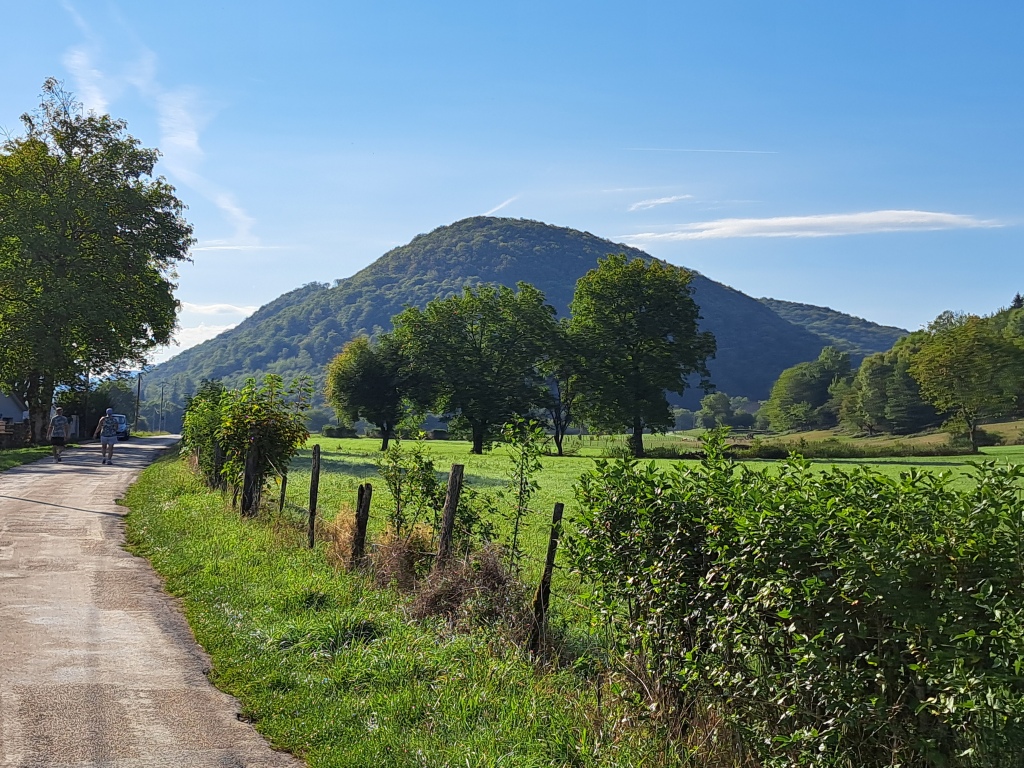







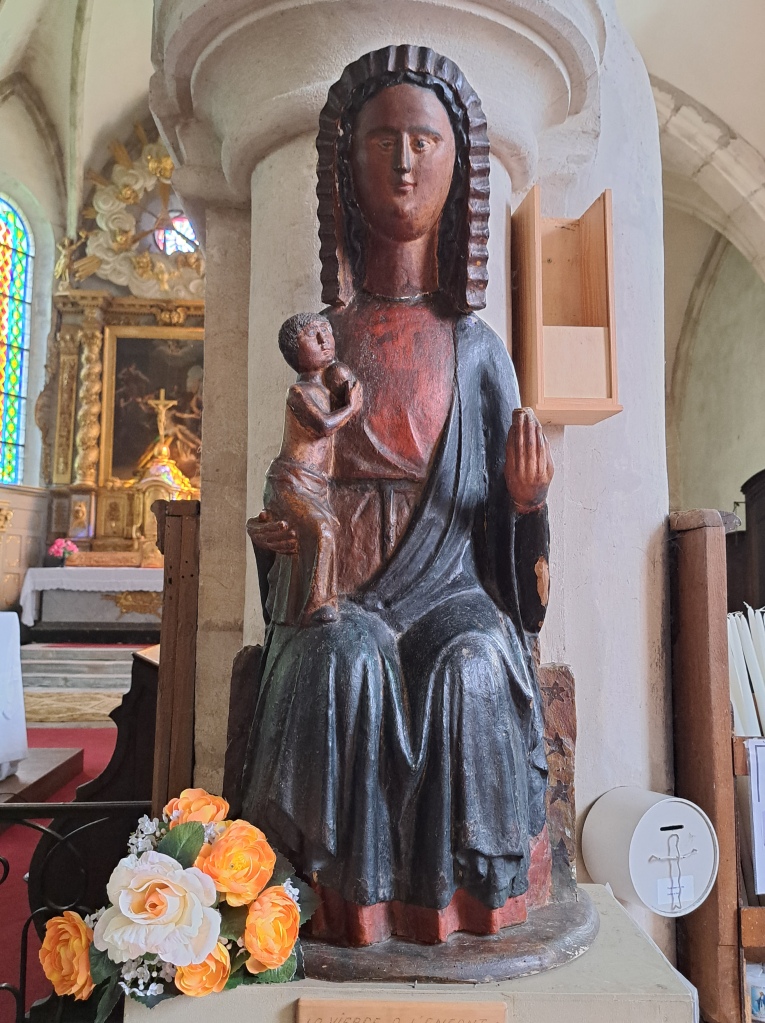


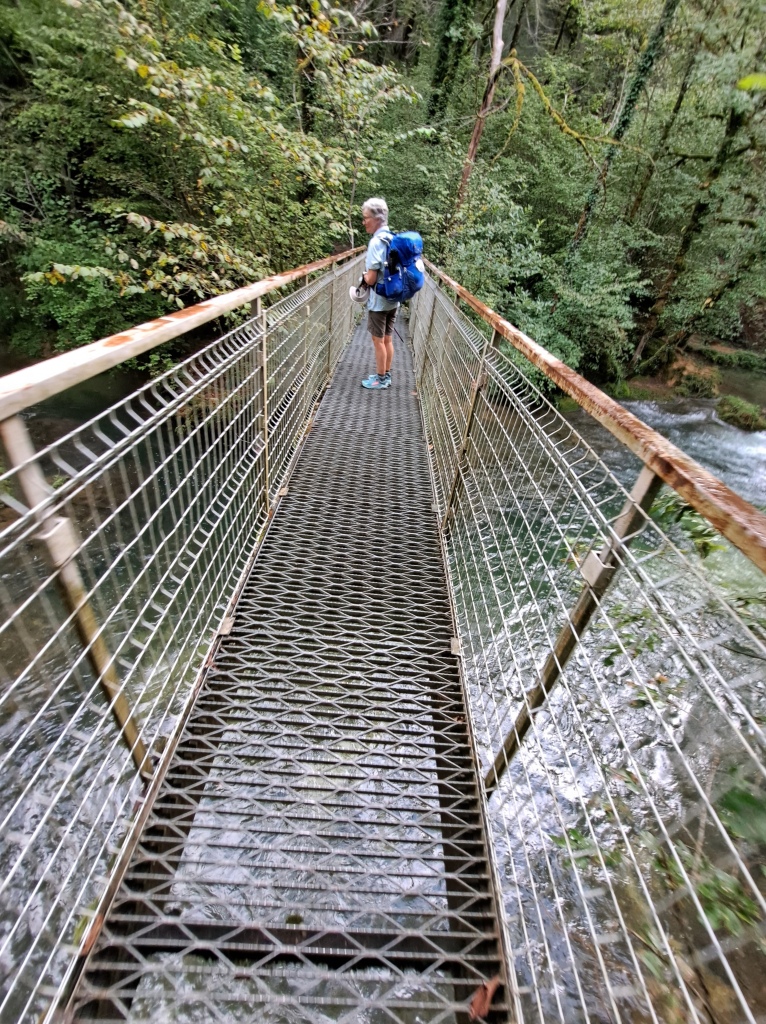









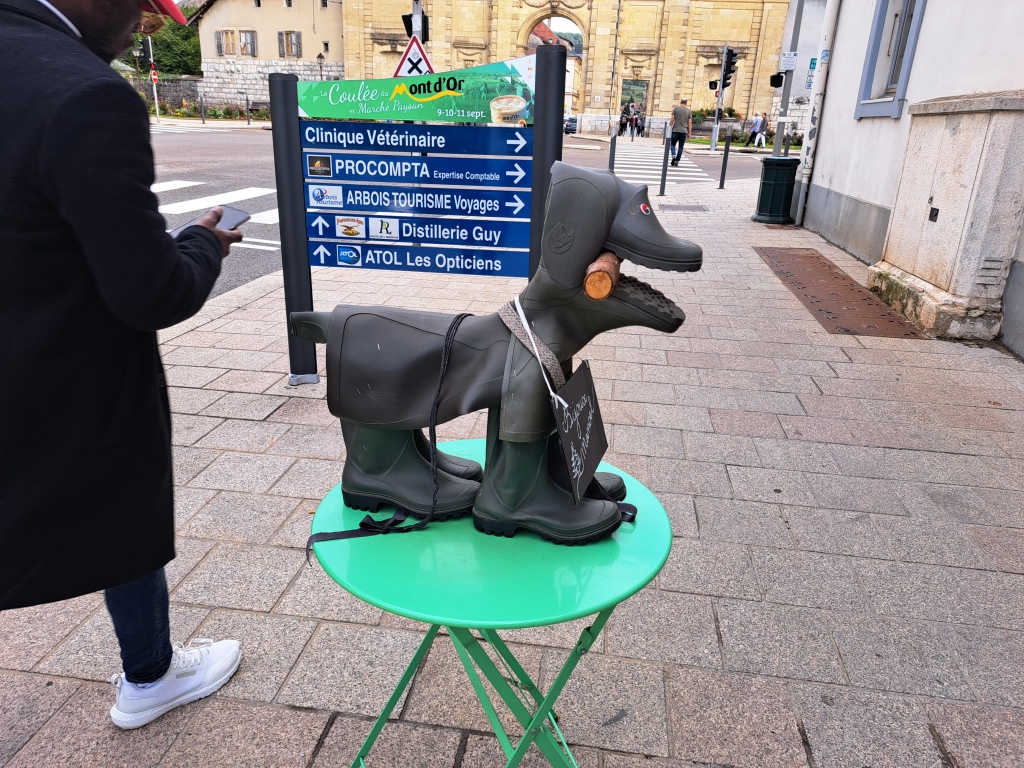


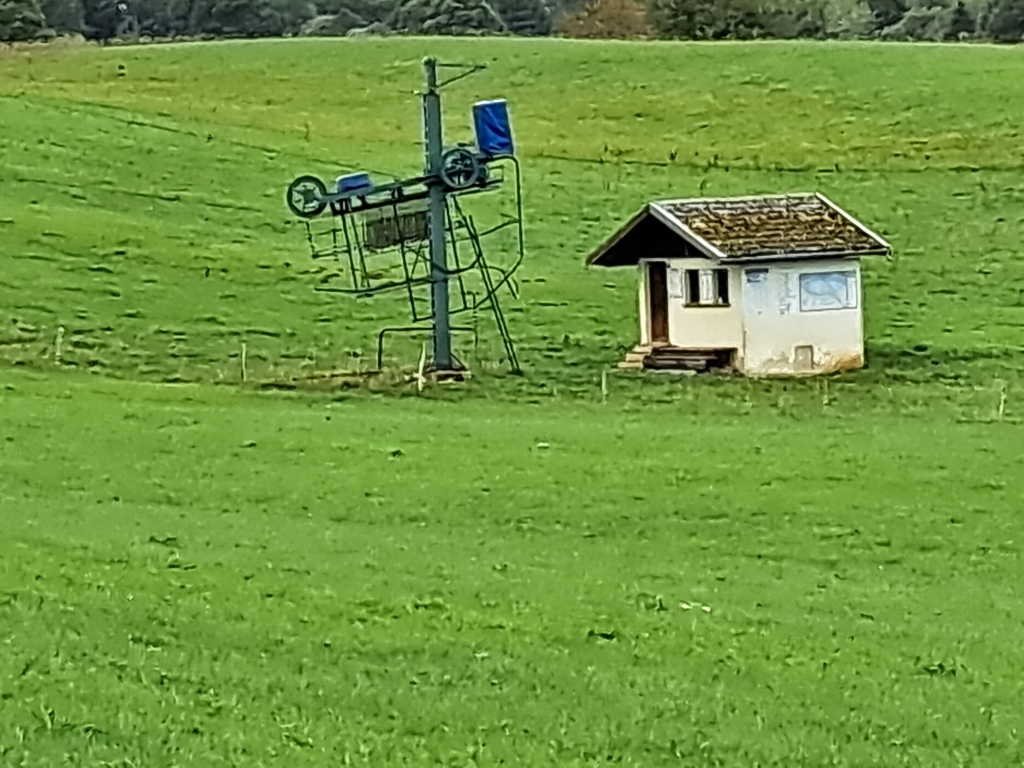




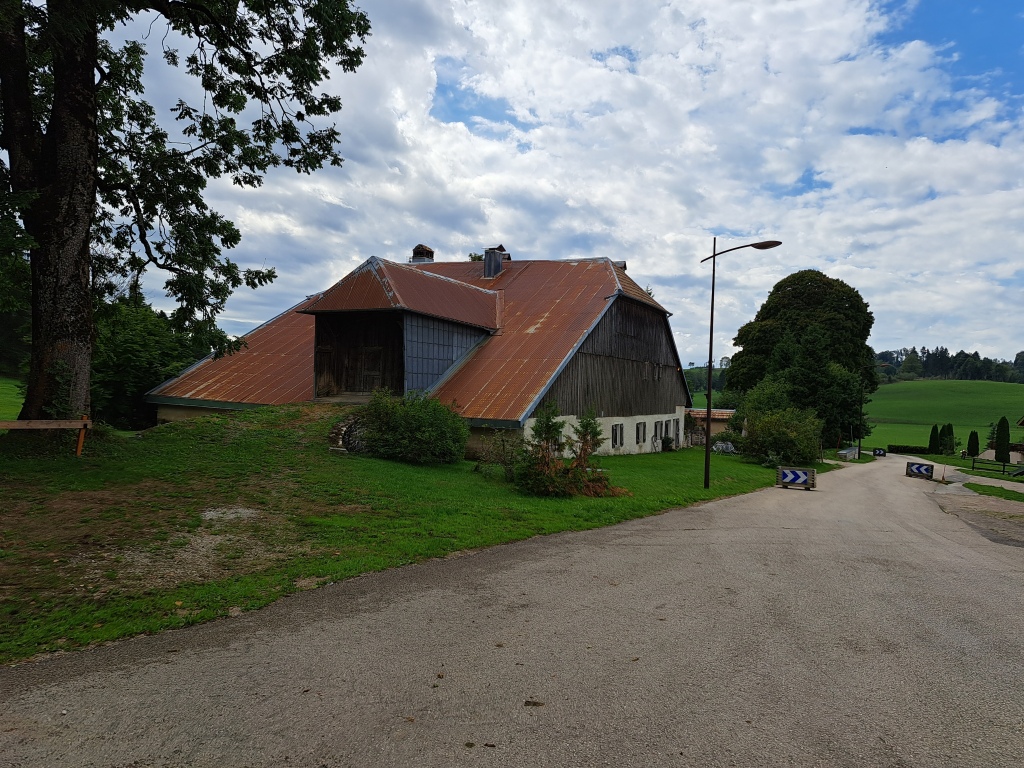

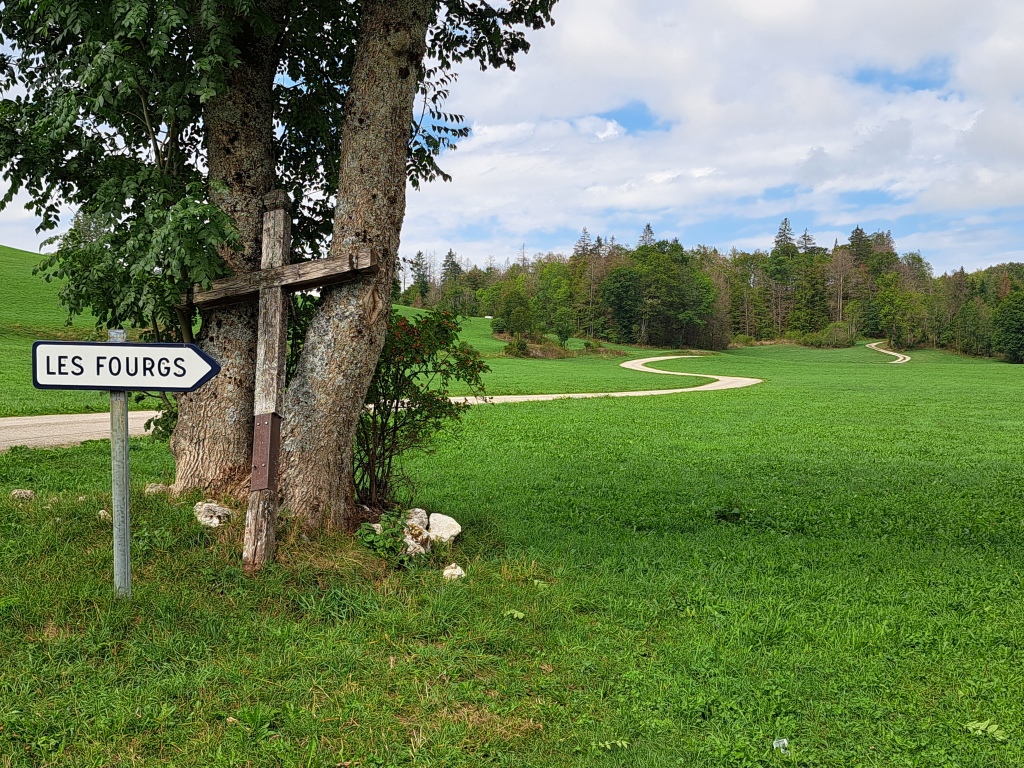



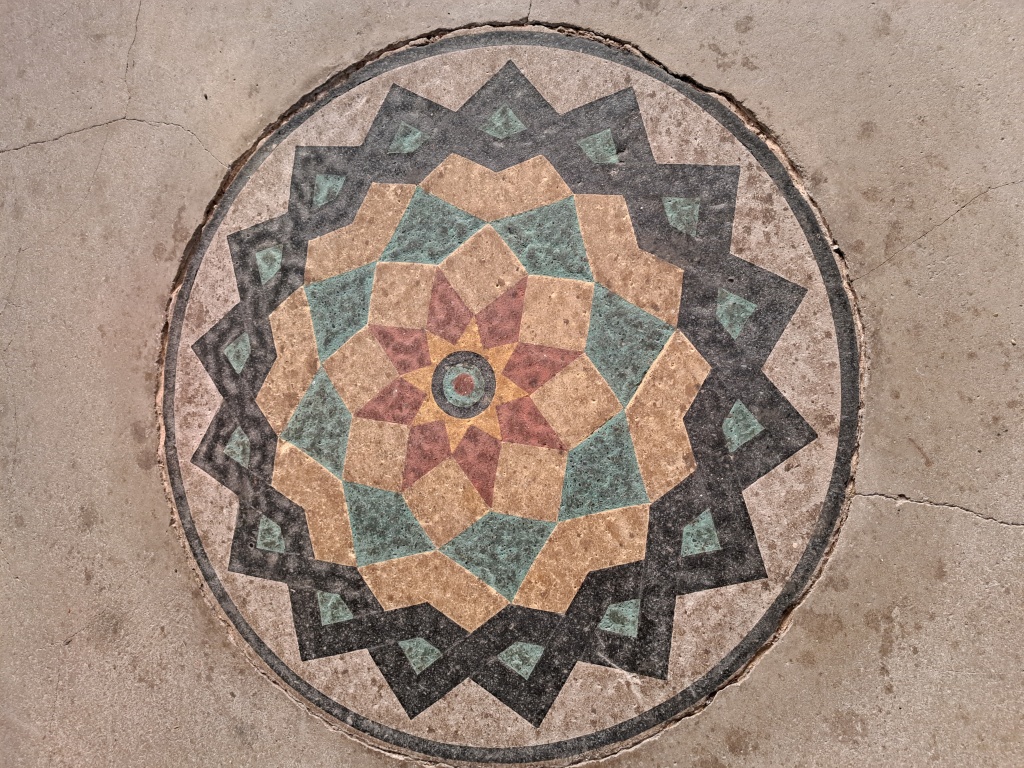








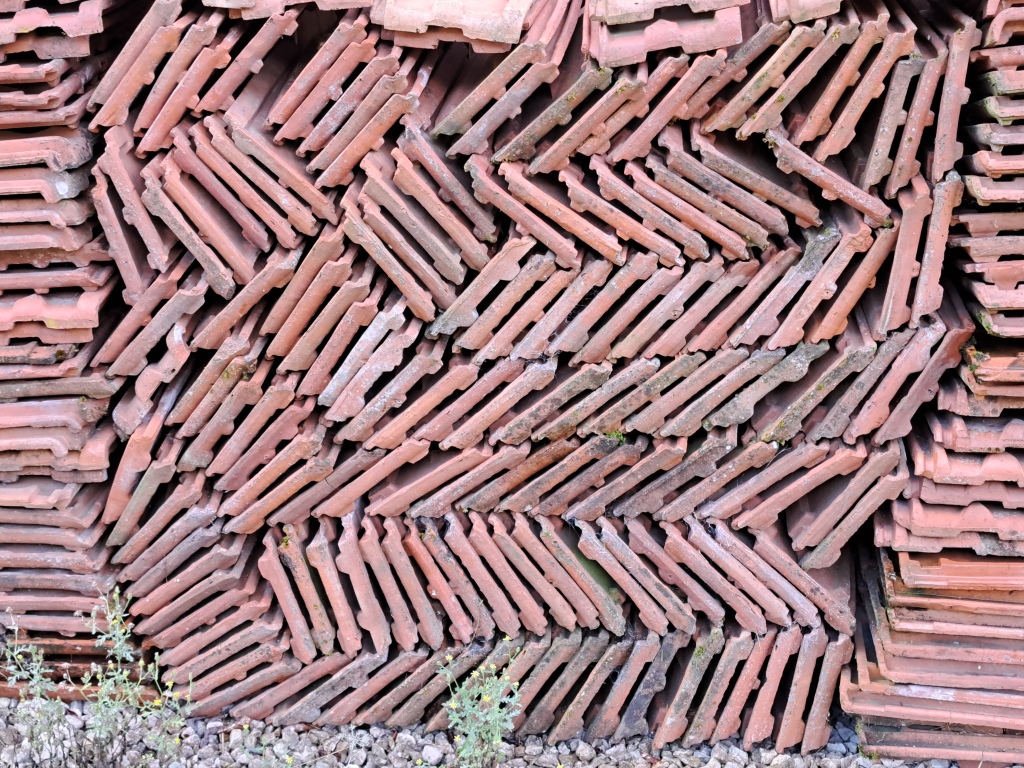


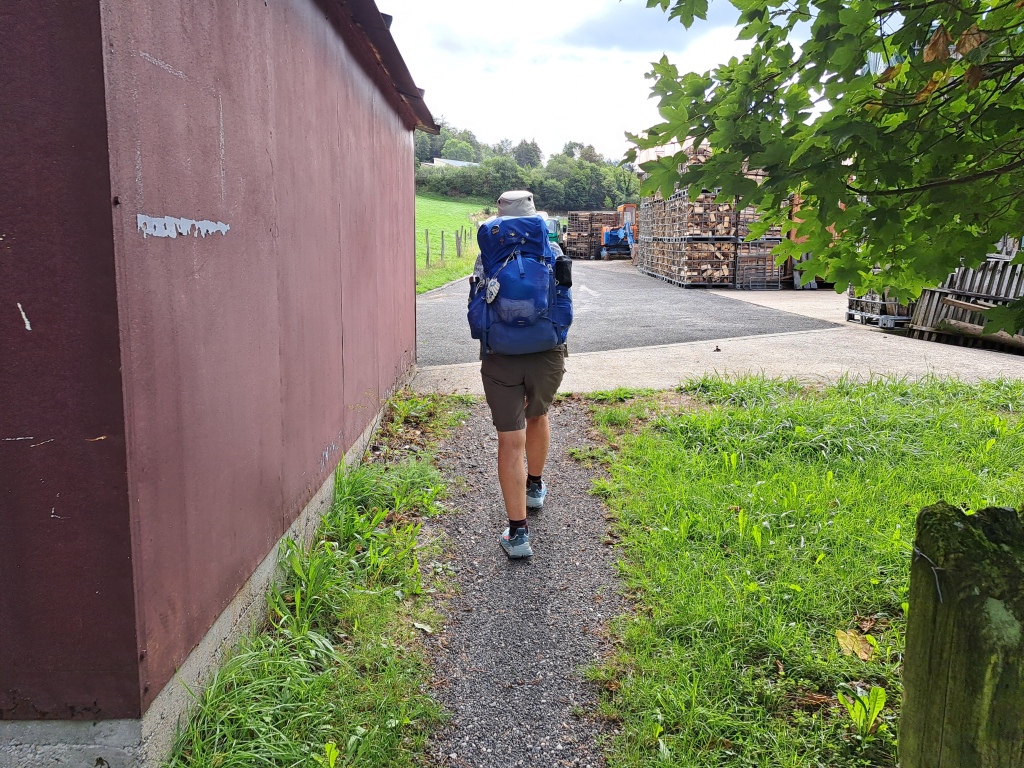



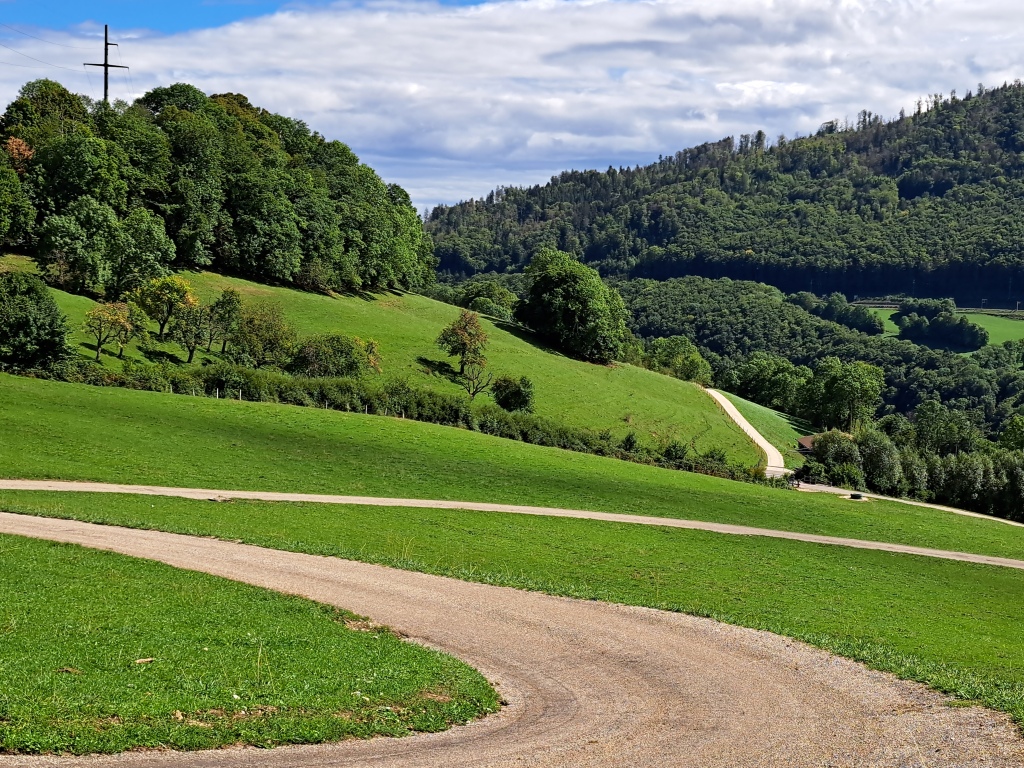

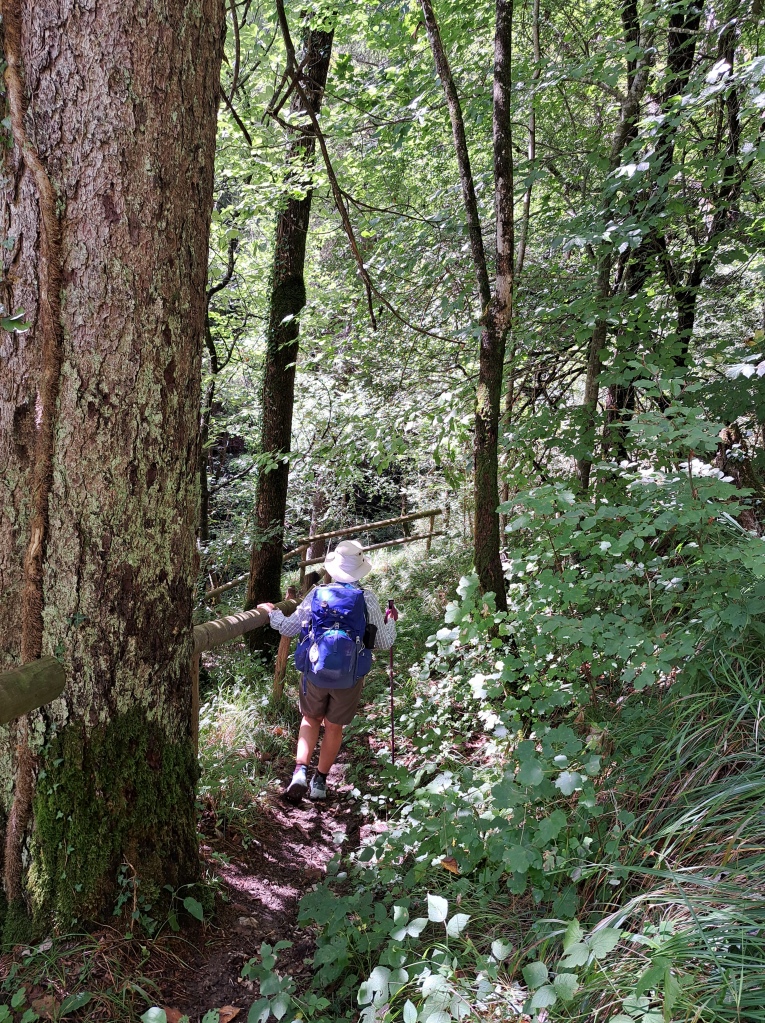




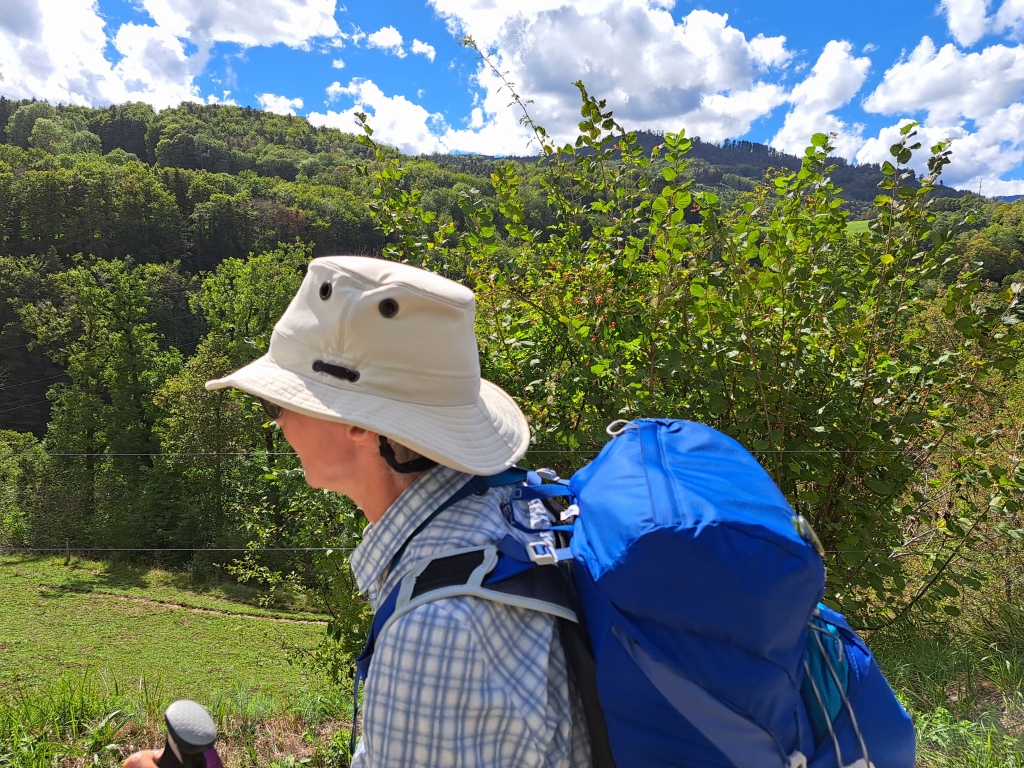

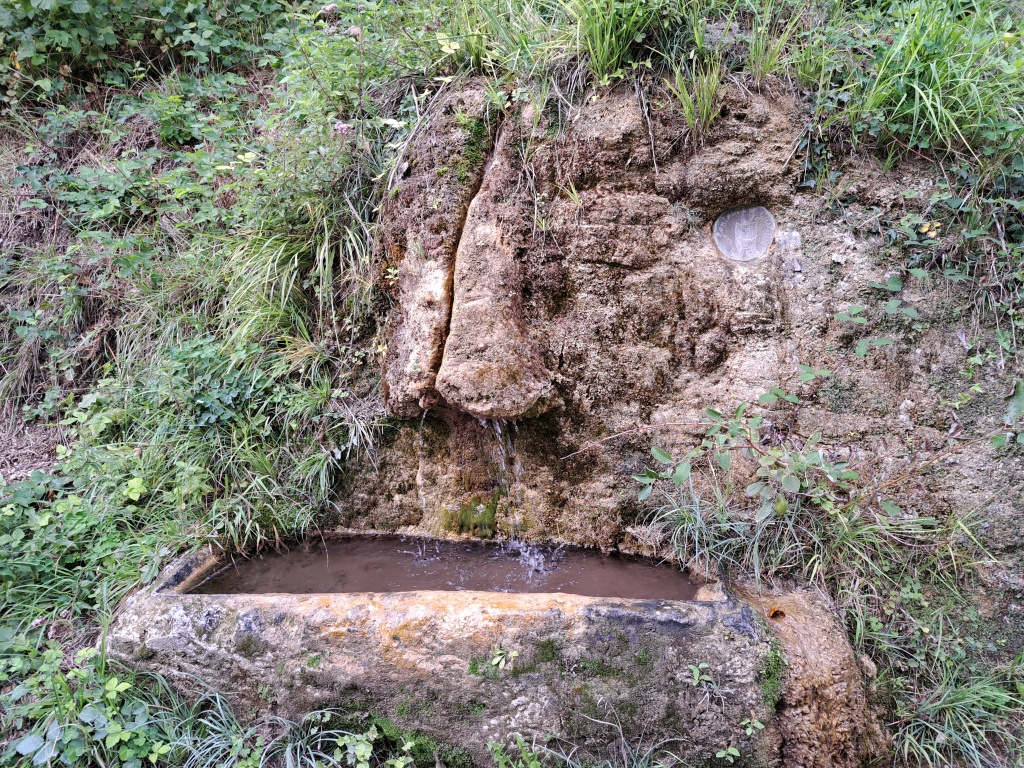




-
Finding a Language of Silence
Since the last blog we have been pushing our way through the French countryside, enjoying the changes in the landscape from the edge of the Champagne region, seeing people beginning to harvest the grapes, and then deeper into the Haute Marne region. Here the rolling hills are sometimes obscured by huge forests. You get the shape of the land from the path in front of you but you have to look at the map details to see how your ups and downs relate to the area.
Again, the deer and wild boar are glimpsed and the most prominent large creatures are the buzzards as they wheel around then patrol the edges of the clearings or along the road above you. We have seen very small furry creatures dart past our feet in panic and the occasional swift and low creature that looks like a pine marten but might be some other local version of this beast (beech marten!).
And at one point we took a path through a section of forest that seemed to be partially blocked, despite being the official way through. There were no signs of explanation so we went on, then we found the path severely damaged. It was as if someone had come through with a tractor and a plough tool of some sort and had completely dug up much of the path. I studied it as we walked across the ripped up, fresh soil and couldn’t see any tractor tracks. The area had been rained on and the fact that it was deep in a large forest meant that, despite the droughts, this area was still fairly watered, with deep, rich dark soil. And the destruction was not uniform enough to have been made by a farmer trying to discourage walkers. There were patches untouched and others deeply overturned.
Then it dawned on me. This whole path had been turned over by wild boar! There were the usual signs of boar in the area, but this was industrial scale rooting by boar. We walked with more care after realising our mistake and eventually emerged on a more stable and more solid path.
The villages and towns are attractive but almost completely devoid of services. So, we are always on the look out for a little shop, supermarket or boulangerie to get our supplies from. Even larger places that, in theory, have shops, restaurants, bars and hotels just don’t have anywhere open. We check on Google maps and then discover it will be open…. At the beginning of September….
A couple of days ago we walked out of the Haute Marne and into the Haute Saone region. We walked very close to the source of the Marne and made a note of the first village named after the Marne (just a few kms from the source) and will go and visit it when we are motorised…
The changes are that the rolling hills are now higher and steeper to cross and the land is becoming even less rich than before. We had been noticing the mix of huge fields and smaller ones had been switching over to more small and less large fields, but now the land feels more marginal, still. There is more livestock. Cattle are also being swapped for sheep and goats. There are still big fields of alfalfa and hemp as well as sunflowers but the sunflowers are the small headed variety which I suspect is for seeds, not oil. And there are more hemp fields now, too, which I think is a more rugged crop that has shown itself to be much more profitable than it used to now that you can also sell the oils from the plant at ridiculous prices.
The villages and towns, though empty of services (or ones that are open) have real character to them. Farming is different in different parts of the world based on the ways in which land was distributed and how land was farmed, owned and inherited. Yes, of course there are isolated farms in the landscapes we have walked through. This is a BIG country and often the settlements are a long way apart. But land ownership changed in France in a way that was different in Britain. So many villages are filled with small farmsteads making up the core; caused, partly, by the farming practices changing in a different way and partly the inheritance laws that divided farms up into smaller parcels.
Walk through many villages across much of France and the older core is made up of a long series of farmyards with courtyards including the house, a barn and other out buildings accessed from the road by an arched gateway with big wooden gates to close it up. These are beautiful, enticing and often completely ramshackle complexes. But that is how it is, with an outer layer of more modern, often very well appointed houses lining the roads in and out of the village.
Highlights of the places visited include the wonderful city of Langres which just happened to have a market and festival going on as we arrived complete with live bands, a fair ground and Vide Grenier market, which we both love. Names including Chalindrey, Champlitte, Dampierre and Bucey les Gy are part of the role call for the last few days, and the villages in between have been a joy to visit despite their emptiness.
This evening, in Bucey, we are in a community Gite where we were able to cater for ourselves, which was just as well as the only café in town just happened to be shut today (!!!!) and it is a great place to stay (too many of these have also been shut this month). And, as we walked through the village to get to the supermarket on the edge of the place, I got my phone out to take a picture of a house that was full of chickens and roosters. We had walked past it on the way in and I had missed the chance to photograph it then with the open first floor loft exposed to the road resplendent with fluttering birds. As we approached, the owner, a retired soldier, greeted us and asked if we were on holiday. We said yes and he said, ah, well, so you will want to photograph an authentic French rooster, then. Before we could answer, he was opening a door to the answer of great squawking and flurries of feathers from within, then he emerged struggling with a large rooster. Here you are, he said, as he stepped out into the middle of the road, and I got my phone working as he continued to mess around with the bird. Finally, I photographed him with the cockerel standing proud on his cap….
We got his army record and a bit more before I shook his hand and we moved on to do our shopping.
Just another simple episode on our amazing journey. As is the gite, itself, which was restored by local people and with the help of various groups who have come here to learn more about the countryside and its ways and take part in the restoration work. But, as with so many other places we have stayed, this gite is filled with the personal stories of the people who live here. The drawers and cupbaords are filled with implements donated by locals, as are the pots and pans, plates, furniture and probably even the appliances.
Everything in the place has a back story that could be as amazing or as mundane as the things themselves, but all will tell you more about the basic lives of those around you as you stay in the centre.
And all of this offers you many good examples of why, as we walk, we end up talking about all sorts of things, riffing off each other’s ideas and debating a wide range of issues. Lots of things to reflect on as we go. And, in many ways, it is also why we also enjoy our silences together.
There is a lot to be said about silence….
One of the strengths of companionship can be found in silence. While we can spend hours together talking, we also have a special place for silence. And, as an individual, I also like silence when I am on my own and have discovered that there are times when I actively seek periods free of any music or other sounds. For me, silence has become a good place to grow creatively.
So, when walking, we both grow together, and grow in our thoughts and vision, when we share silence as well as when we share our thoughts.
Of course, silence has its downside, too. If you don’t communicate important things or fail to tell someone how you feel about them it can have consequences. As we walk, we have been actively reflecting on losses – people no longer with us and, as well as praying for them, we have been taking time to remember them.
In a few short years, for example, we have lost Alison’s father, her brother Martin, her mother Amy, and Martin’s partner, Linda, too. All of them had special places in our hearts and it takes time to work through the loss of anyone close, so being together and sharing this journey has offered us new ways to share this different type of journey.
I know many people who have felt that they never really had a chance to say all they wanted to say before they lost a loved one and, because of my faith, I have not felt so distraught about this because I feel it must be the case that we can all be assured that they know now, even if we didn’t get the chance to say it when they were alive. But, when you haven’t got that faith, it can be harder to feel any certainty or get any comfort from the sentiment I have just shared. So, perhaps I can offer a different sort of thought that might help.
Partly my answer lies in the way that people who are close, who love each other and/or who spend much time together, communicate with each other. I have long been convinced that we don’t just communicate in words, anyway. Every part of us can sense those around us and every part of us also offers signals to those around us, too. So, sometimes I am walking with Alison and something pops into my mind which is completely unrelated to the walk, or to anything we have been talking about. I decide to share this when Alison suddenly expresses that same thought or idea to me. People sometimes say that they can read their partner’s minds but it may be a case of us reading each other’s whole being. This is not because we are superhuman, or enjoy ESP but because we are human and that’s what humans do.
If you play in a band or other music group, you learn to read the other players and play better with them. If you play with lots of different musicians you gain short hand ways of connecting together with them, too. The same is true for pretty much every human activity where people have to co-operate in some way. Sport to acting, teaching to conducting and so on.
So, we are equipped. Trust the equipment! The equipment gets very well-tuned when you spend a lot of time together…
Thinking about loss and about communication and silence brought up a memory of my own that has brought me some comfort as we were walking today. Here’s the background..
My father, died some years ago of cancer. I got the message he was dying on the day he died. I rushed up to him with my son and joined my sisters and their partners at his bed side (Alison was in London looking after our three younger daughters). He was in a hospital in Edinburgh and was very heavily sedated, so we were sitting around his bed talking, sharing memories, keeping him company and hoping he could hear. Close to midnight, I could see that Ewan, my teenage son, needed a break and so I took him out for a breath of fresh air. The door I chose to let us out of the building locked shut on us, so we had to walk around the building to find another way in and, as we began to walk up the stairs, I head footsteps rushing along the corridor and knew that we had missed my dad’s death. People were upset that we had not been there but, as I have already said, I didn’t think of it in that way. I had been there for him and that was enough. He may have even waited for me to take Ewan out of the room before letting go. How was I to know. I was not the one in charge. But we were able to comfort each other and be the close and supporting family that we still are.
That story is background for my memory.
Most of my life my dad was not someone who was hugely demonstrative towards me. He showed his love to our mum, hugely, and he clearly loved us all. But he was not the sort who put his arms around me to tell me he loved me. And he had a definite belief that you did not hug or in any way be demonstrative towards your son (once I was old enough to be a boy rather than a baby). So it was not really something he did. As he got older I would tell him I loved him and he would nod.
So, this is my memory.
When I was about nine, we were living in a place called Mayfield, which was a bare, inhospitable council estate perched fifteen hundred feet up on the north facing slope of a ridge about ten miles south of Edinburgh. The winters were long and harsh in the early nineteen sixties and nothing stopped the wind blowing from the Arctic or Norway until it hit us. I hated the place, and the weather was just an added thing to face.
It was just after Christmas and I had been suffering from a very bad bout of the flu and was becoming a bit stir crazy, but had no where to go. The one heat source in the house was the coal fire in the living room and we were all there sitting in the low light of an early afternoon. The rain had stopped and much of the ice had melted but there was hardly a person to be seen on the road by our house.
To my huge surprise, my father got up and suggested that we go for a walk. I looked around and no one else stirred. It was just going to be the two of us.
I got up and followed my dad out to the hall, we dressed for the cold, me in my duffel coat, woollen scarf and woollen gloves and a pair of wellingtons. My dad had his jacket with a scarf and his hands in his pockets as soon as we left the house.
We went out and my dad suggested we go up and along the ridge. The place we were perched on is called the Roman Camp Ridge and is a limestone outcrop that stretches for a few miles east of Mayfield with no other settlements apart from lonely farm houses thinly dotted below the top.
The wind was fierce but the sky was a series of shredded, thin clouds scattered across an open, pale blue sky and below us we could see Edinburgh with the castle and Arthur’s Seat caught in the low afternoon light. Beyond was the Firth of Forth and Fife glinting on the horizon. We crunched along a cinder path with patches of stubborn ice lurking in the ditches and along the line of the fences. Some sheep were huddled in the far corner of a field and the trees surrounding each field we passed were black and bear with the scratchy outline of rook’s nests exposed against the thin sky.
Eventually we reached a series of what my dad called oil donkeys. He explained that they were pumping shale oil out of the ground and we stood and watched them levering up and down pulling the oil from deep below.
We turned back then and walked home as the light faded and the Pentland Hills began to glow gold and red in the sunset.
Almost nothing had been said except for the explanation of the oil pumps, but that was a special walk for me. Probably the best I ever shared with my father.
He didn’t have to tell me he loved me. He was just there. And I didn’t have to say a thing, to him, either. He knew.
The silence had been and still remains precious to me.
So, hope you can find silence from time to time that is really helpful. Share silence with those you have with you and with those you have lost – despite everything, it is still possible for me to walk with my father, so I feel it should not be hard for others to walk in silence with those they have lost, too.
And please appreciate the silence others offer you, knowing there is a lot to cherish in the richness of something so apparently empty.












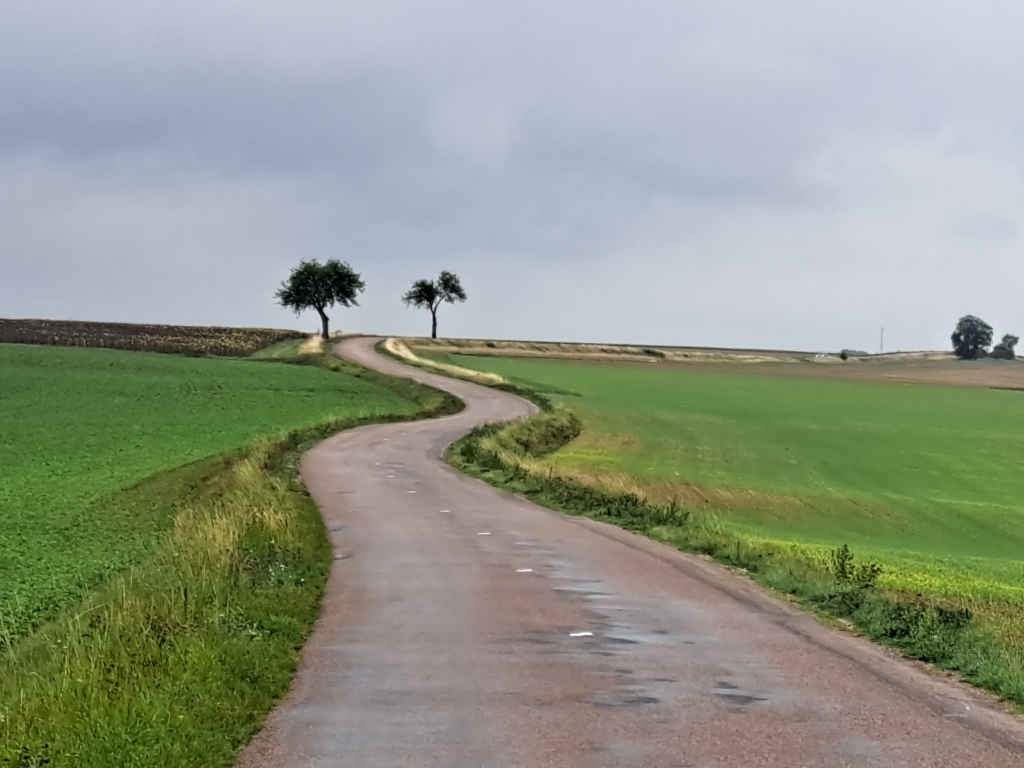


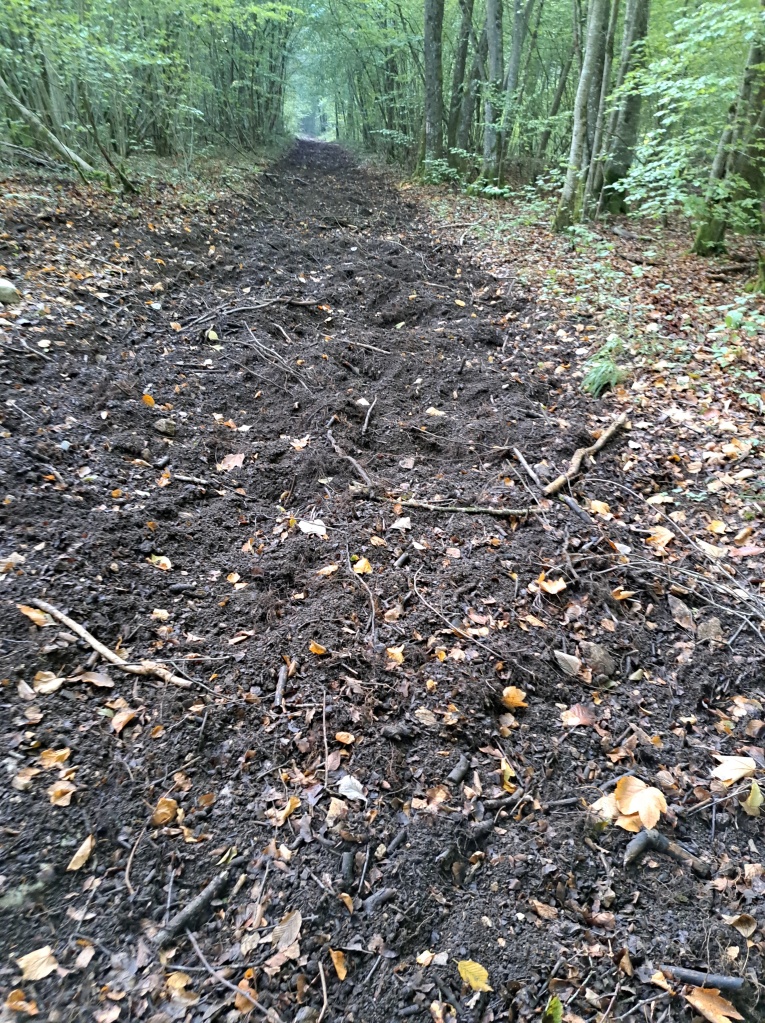





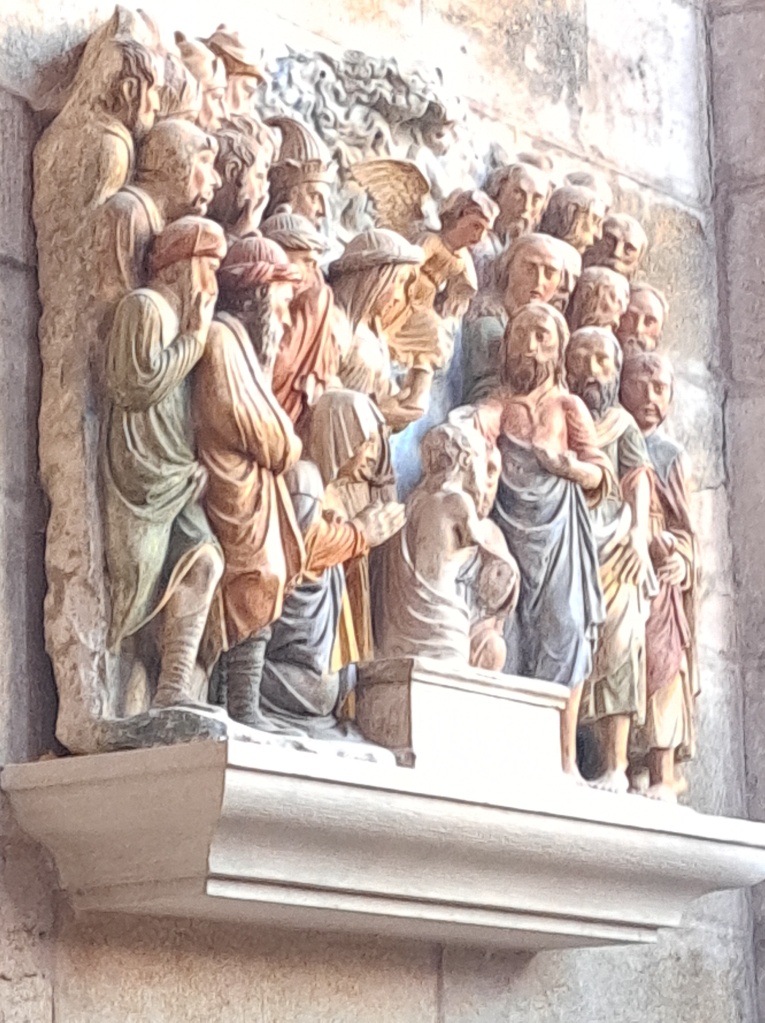


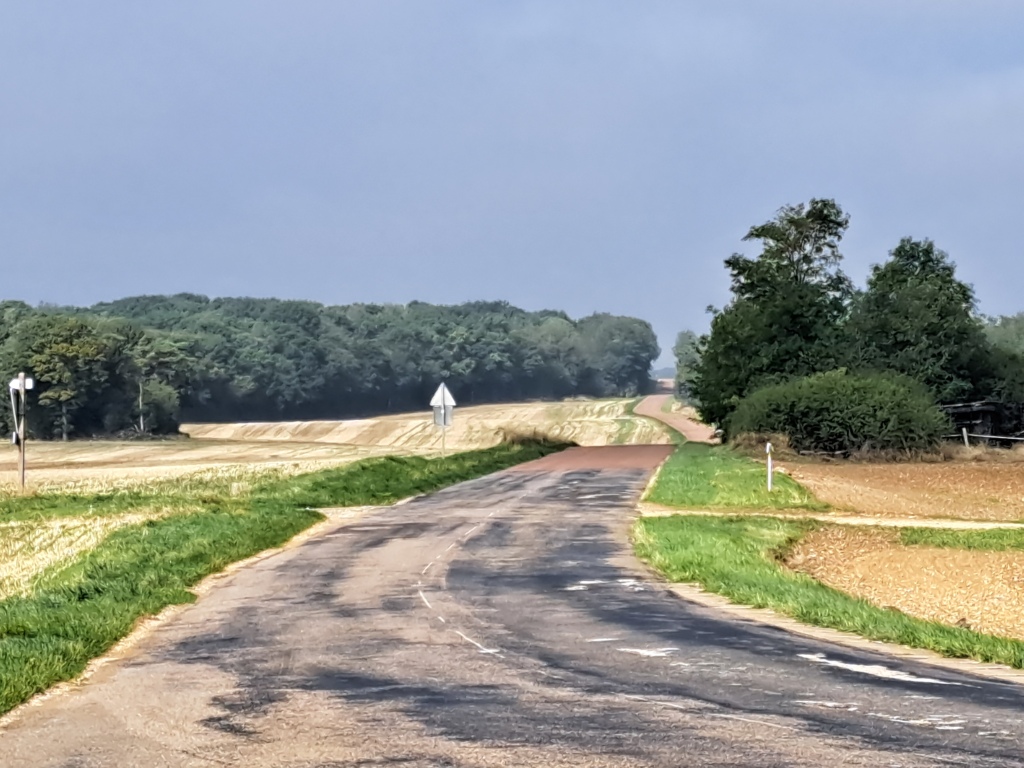
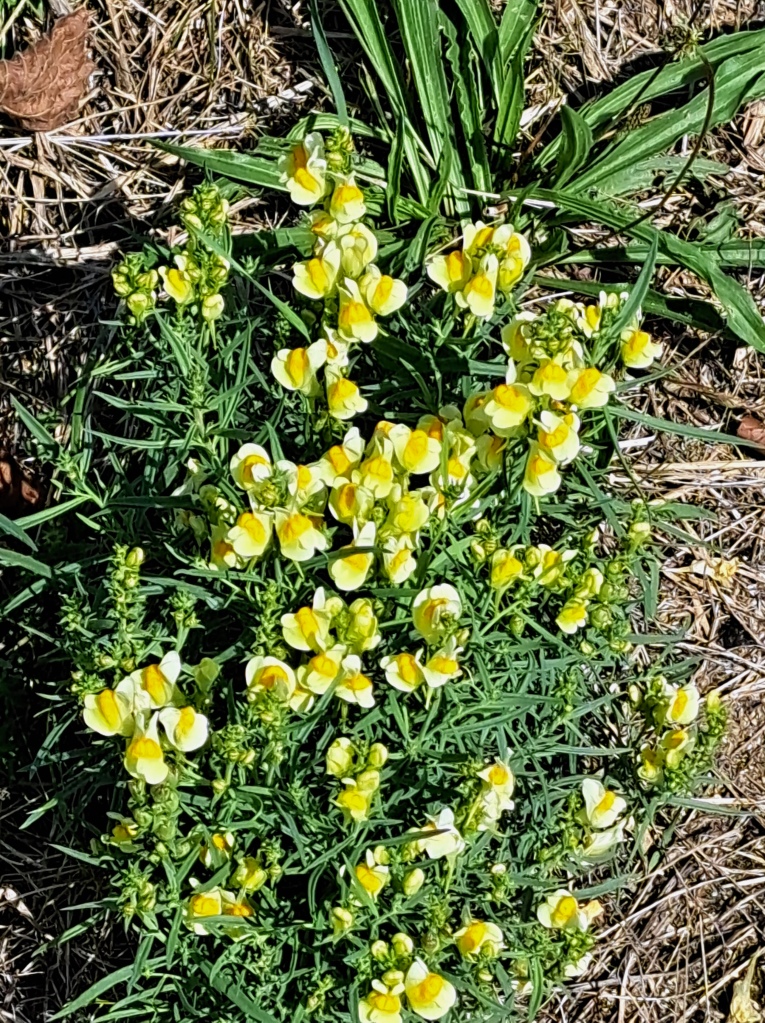
















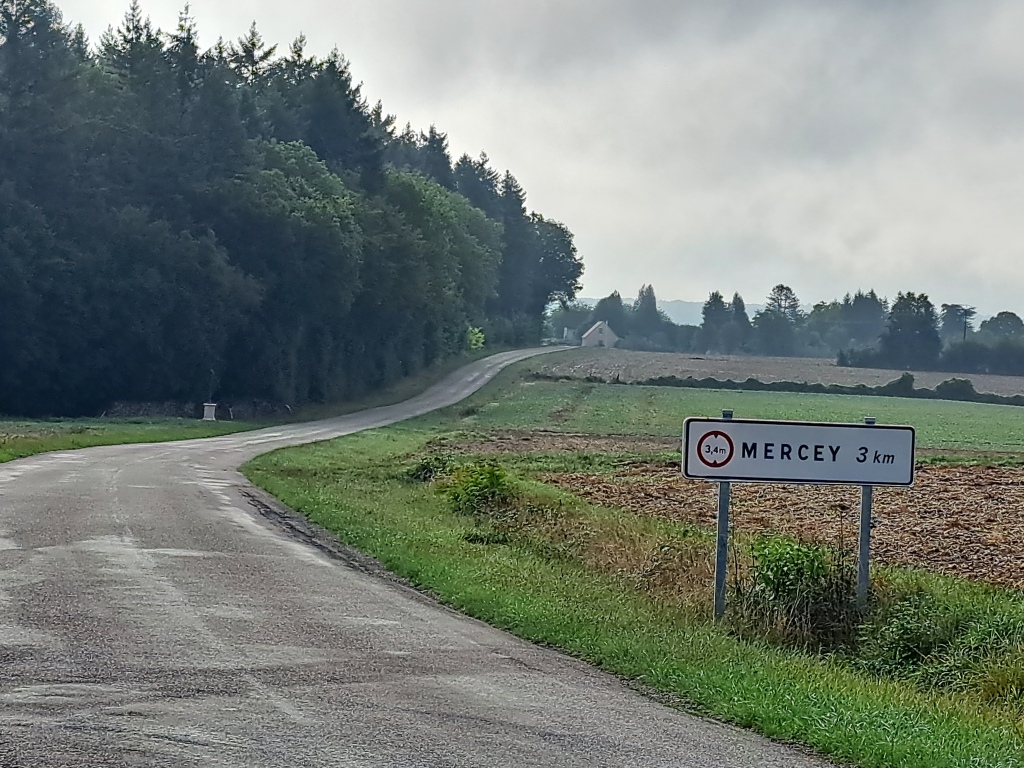



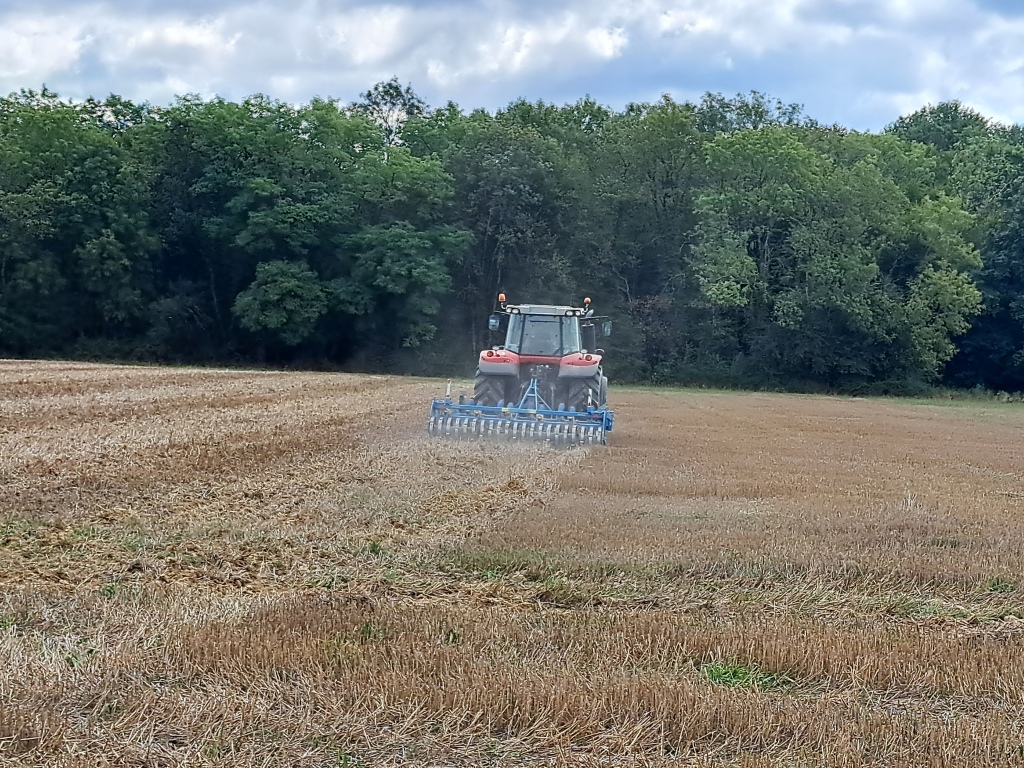




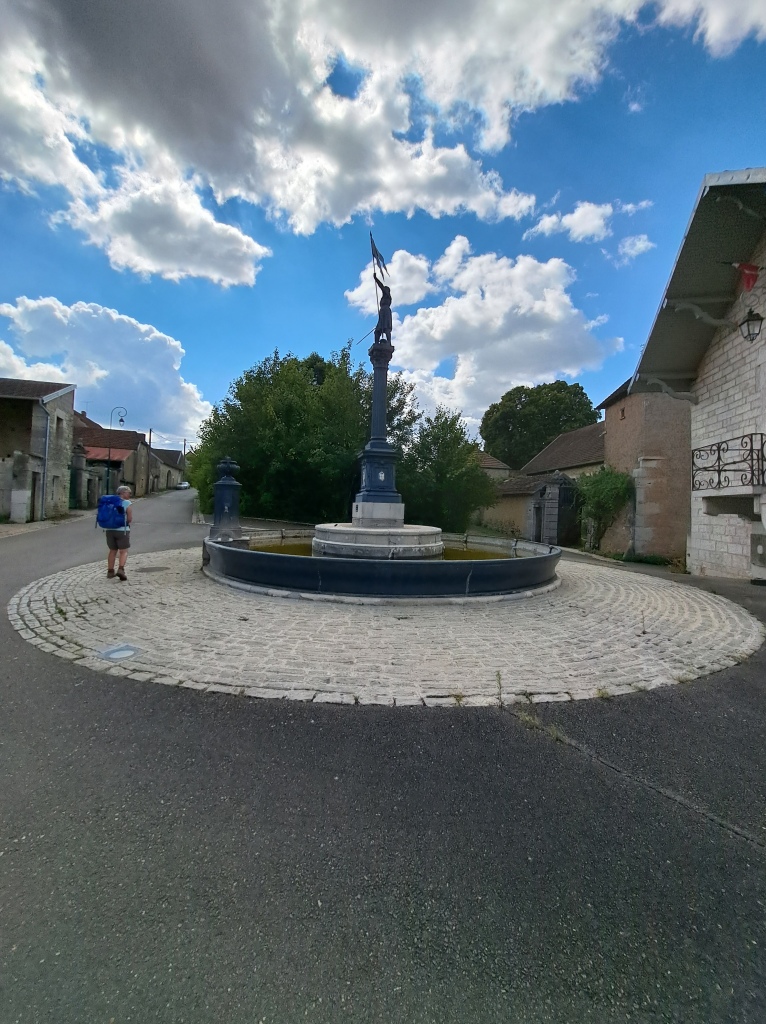


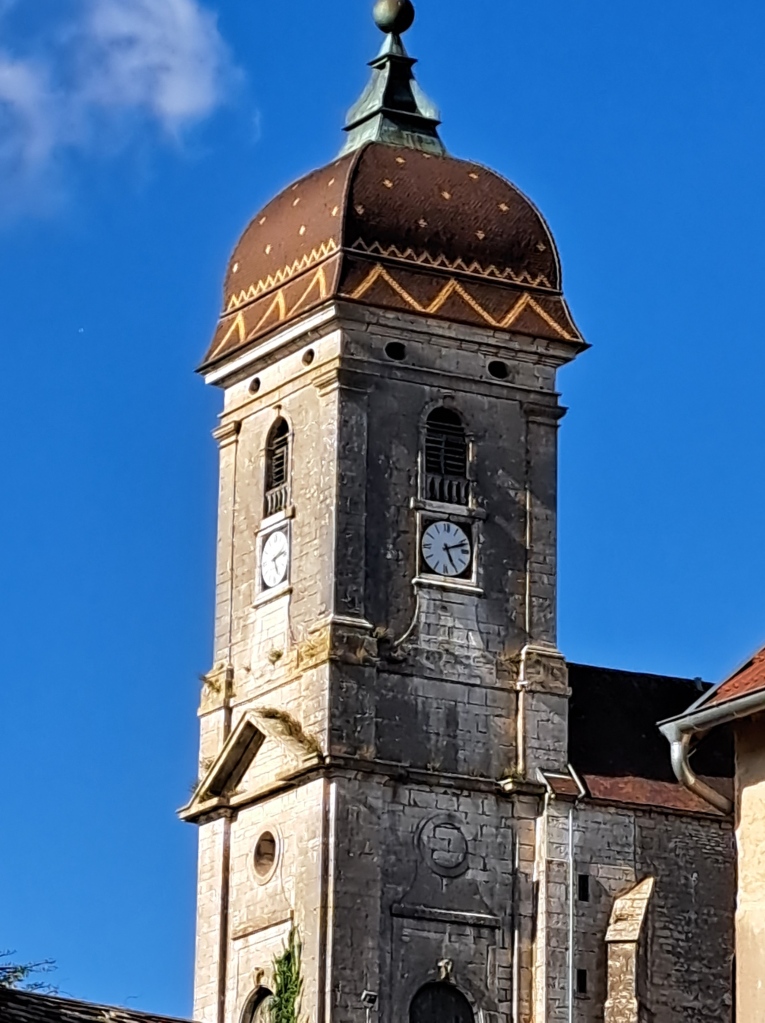

-
Subscribe
Subscribed
Already have a WordPress.com account? Log in now.